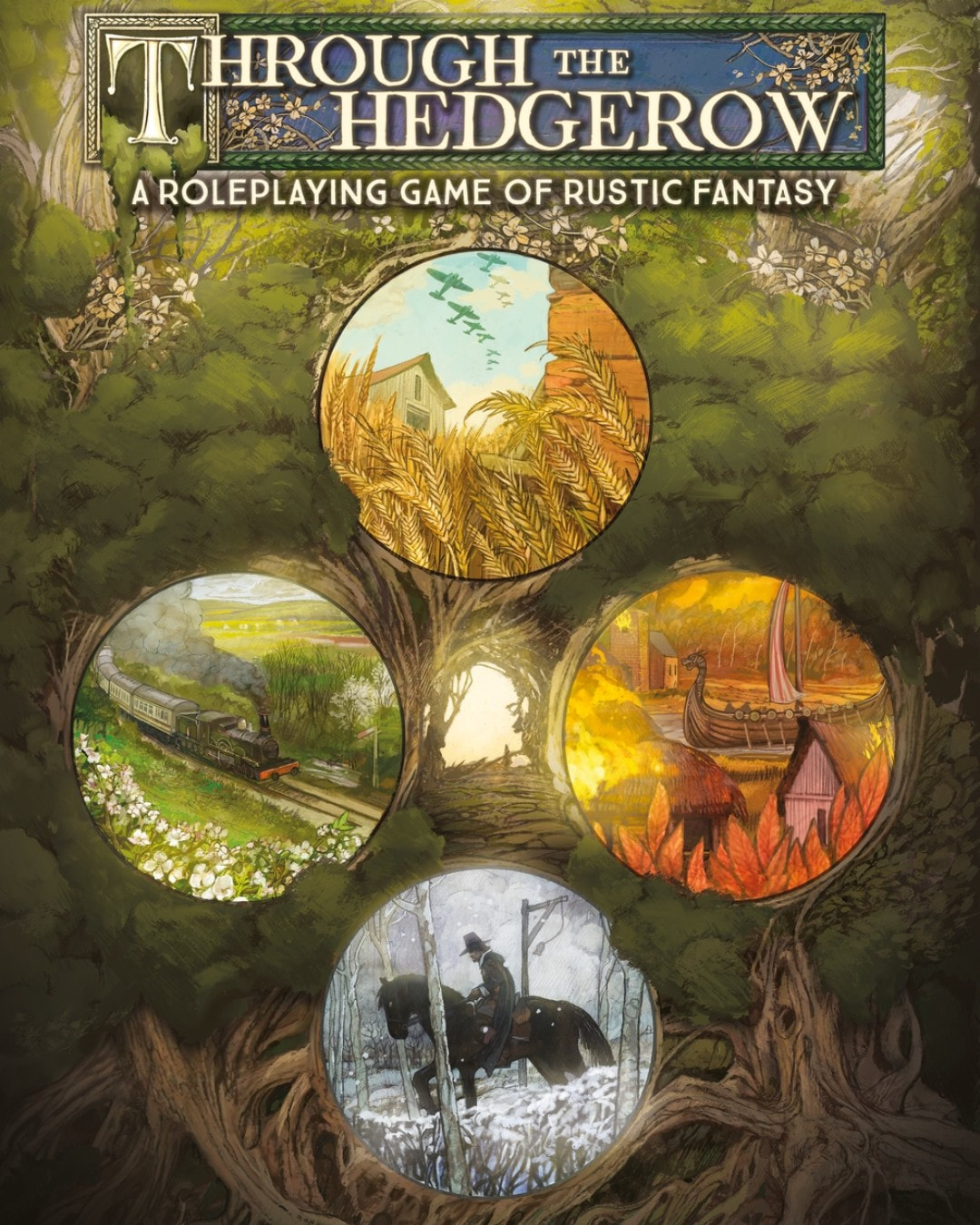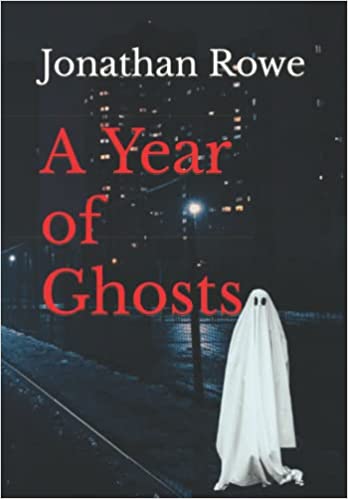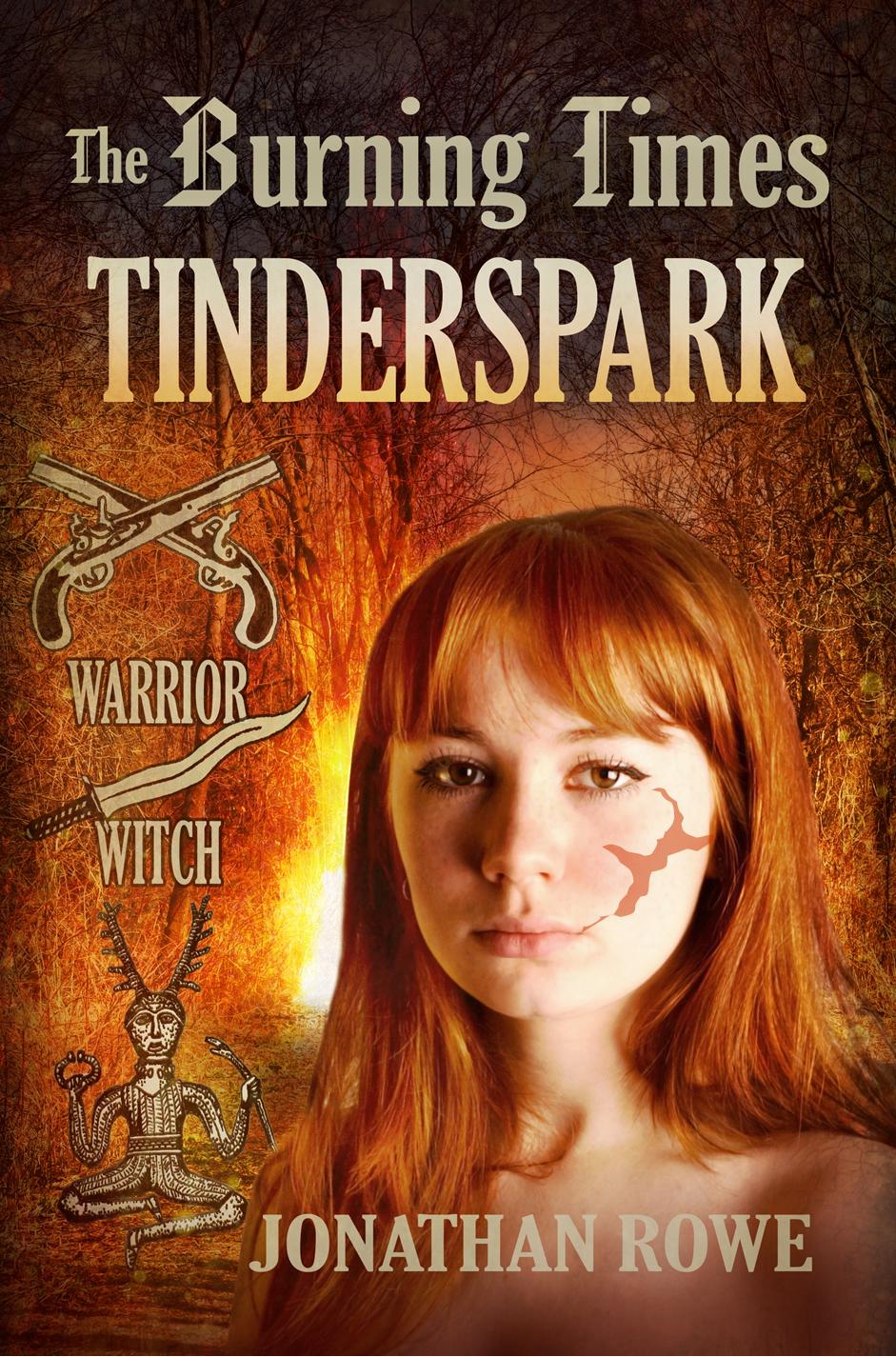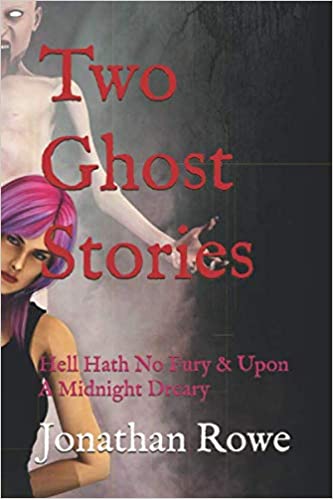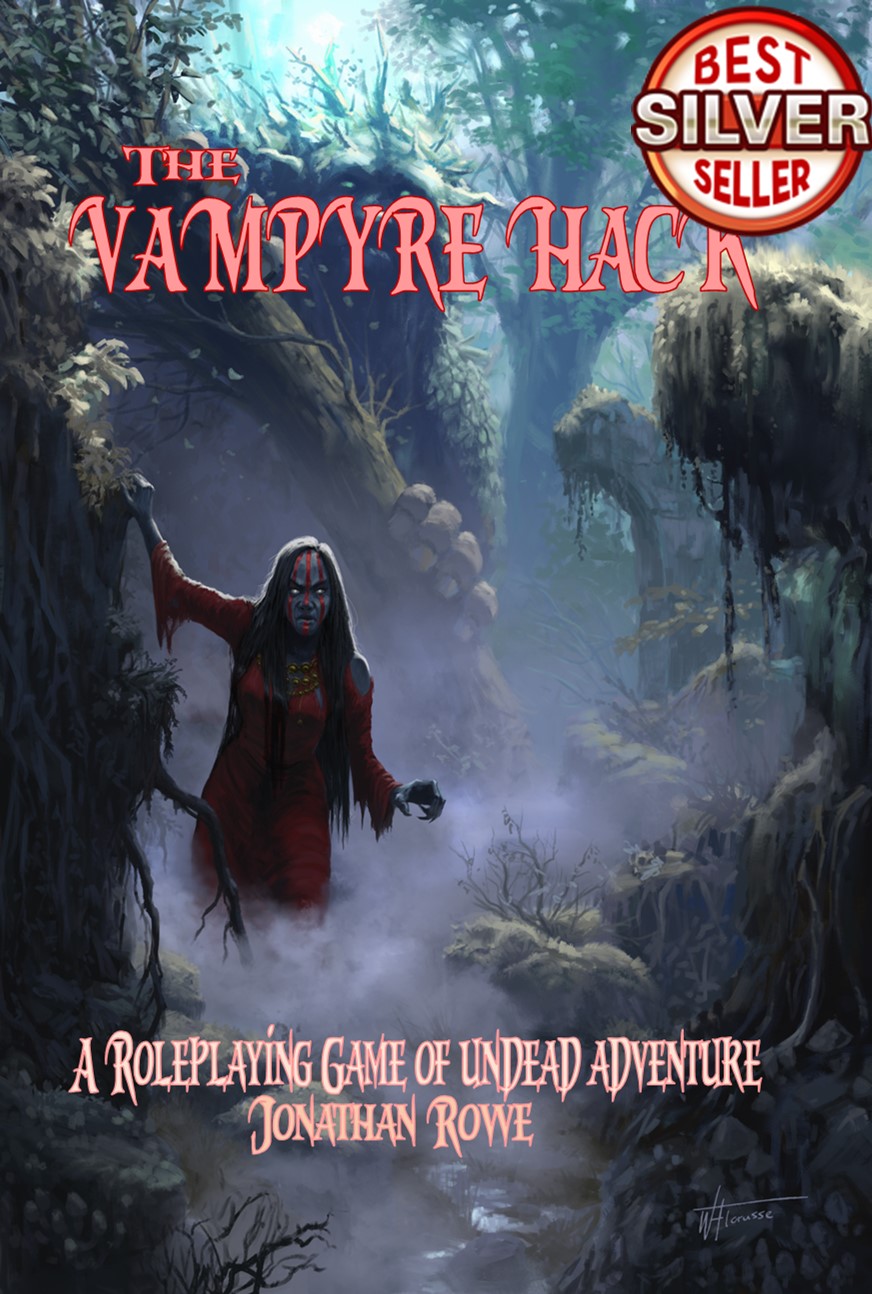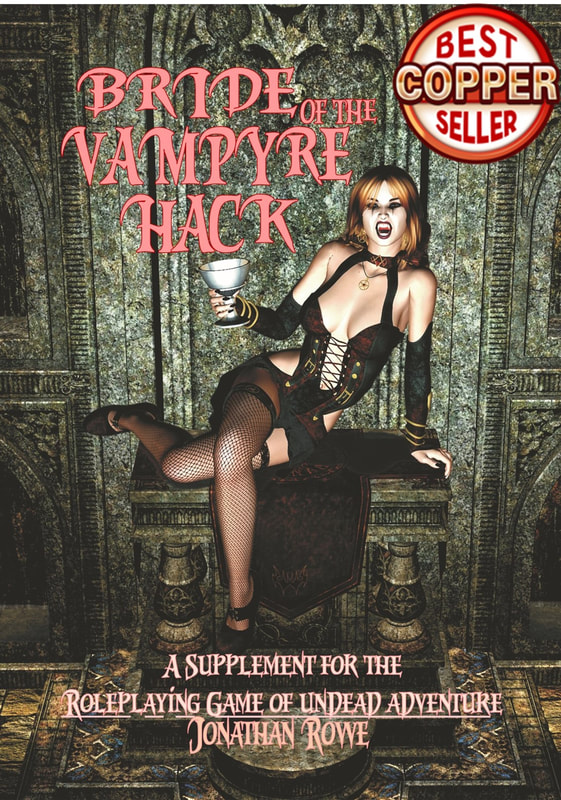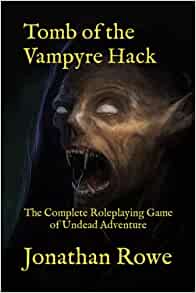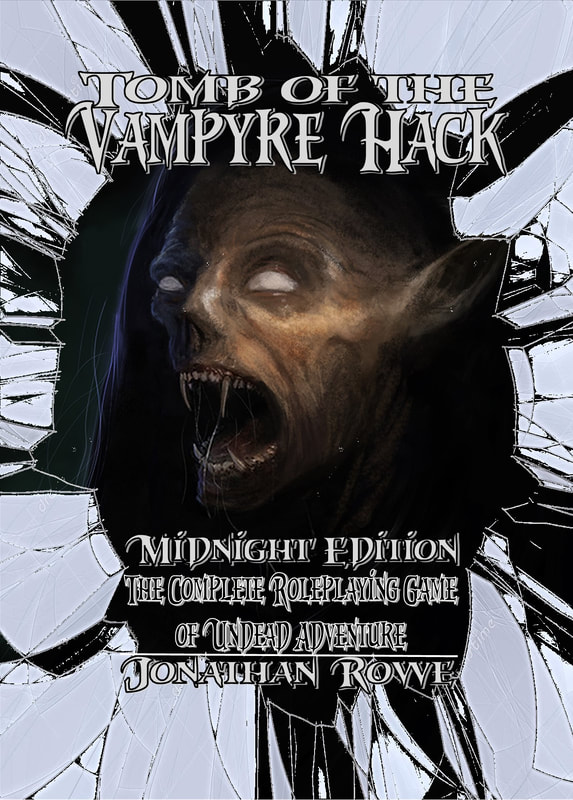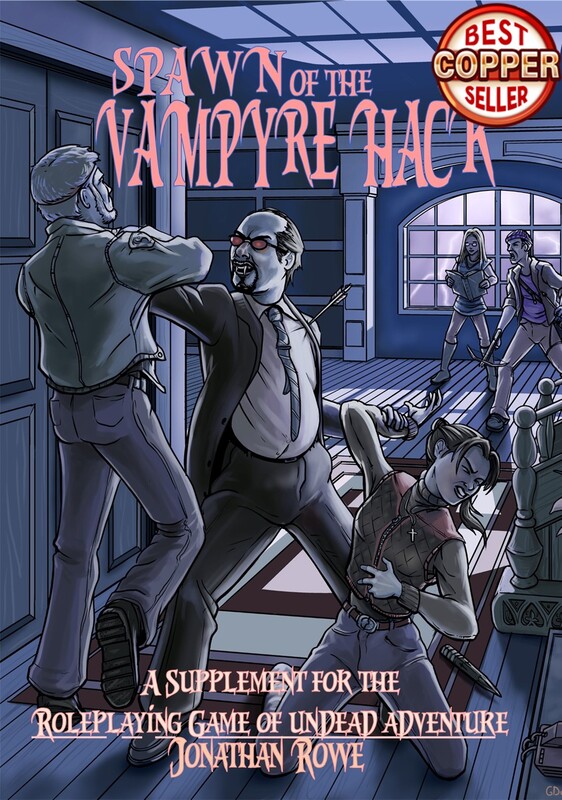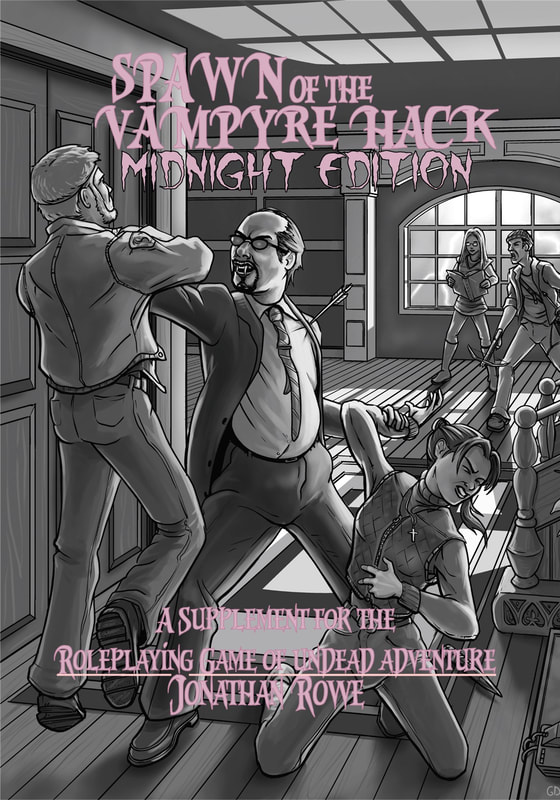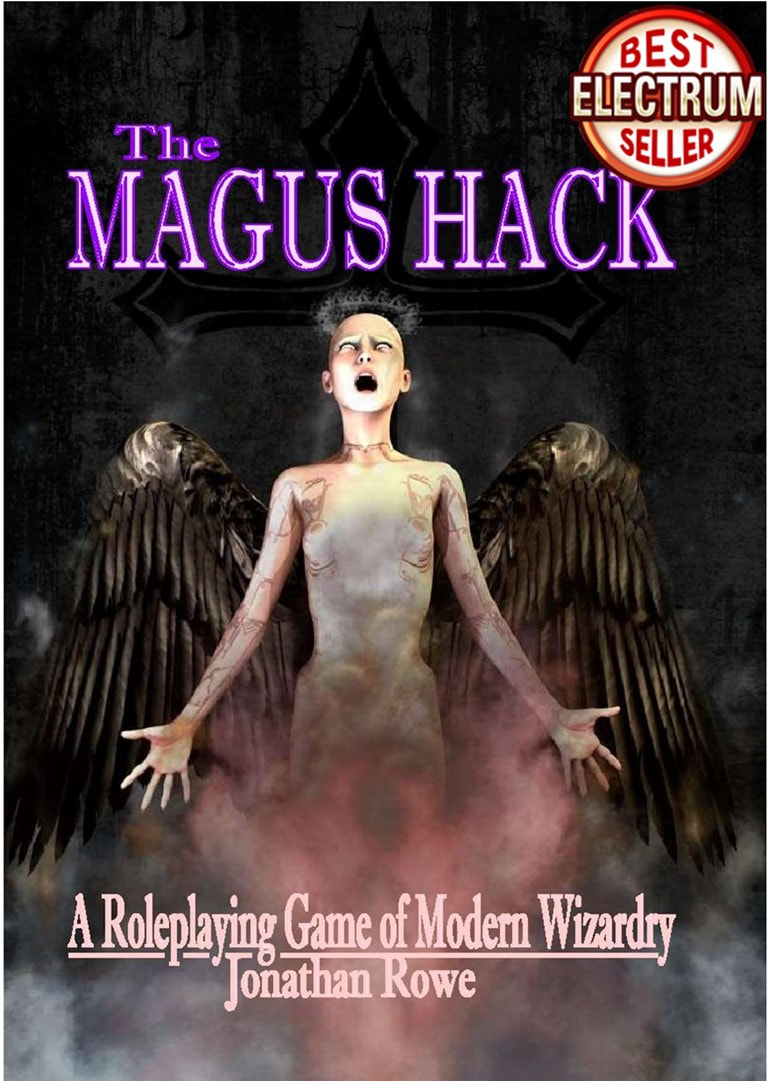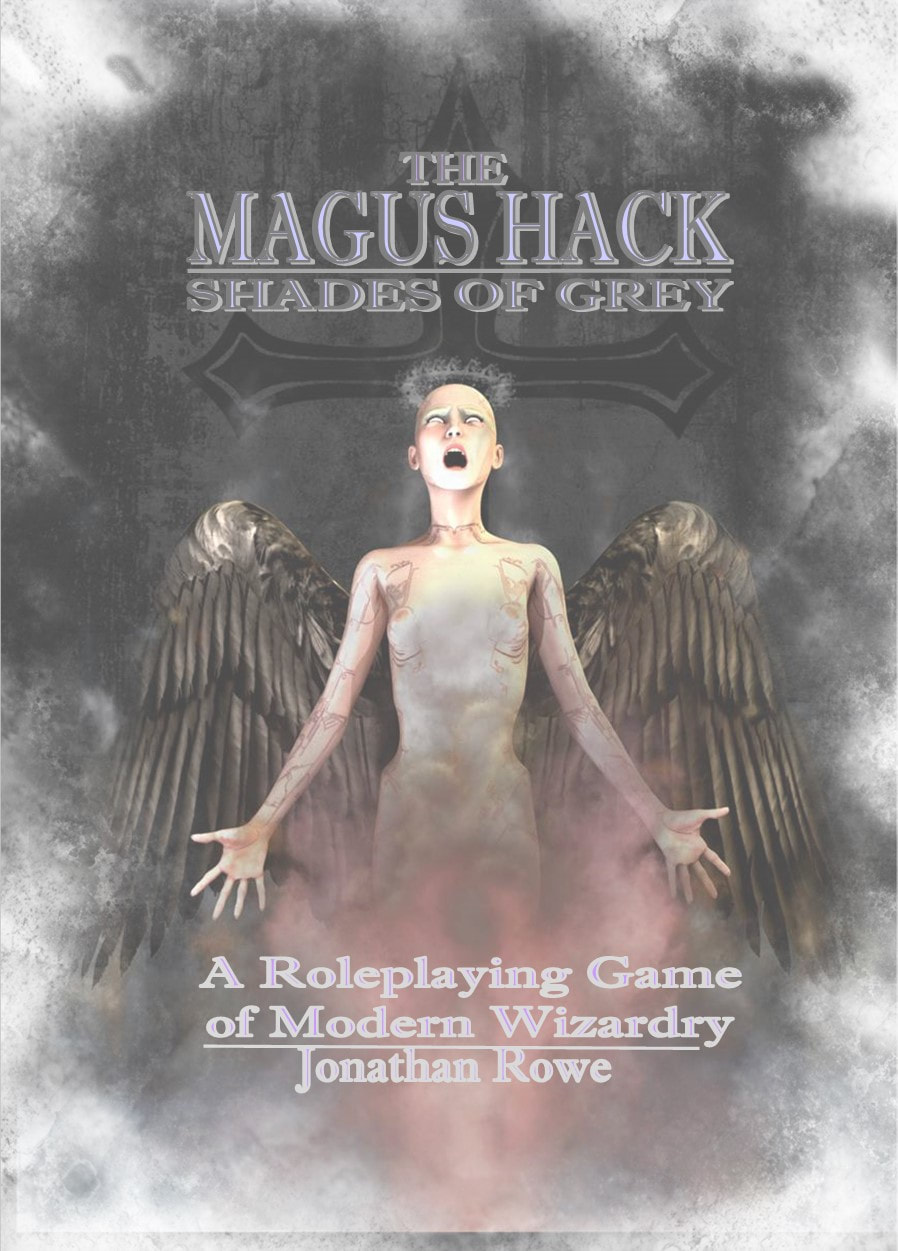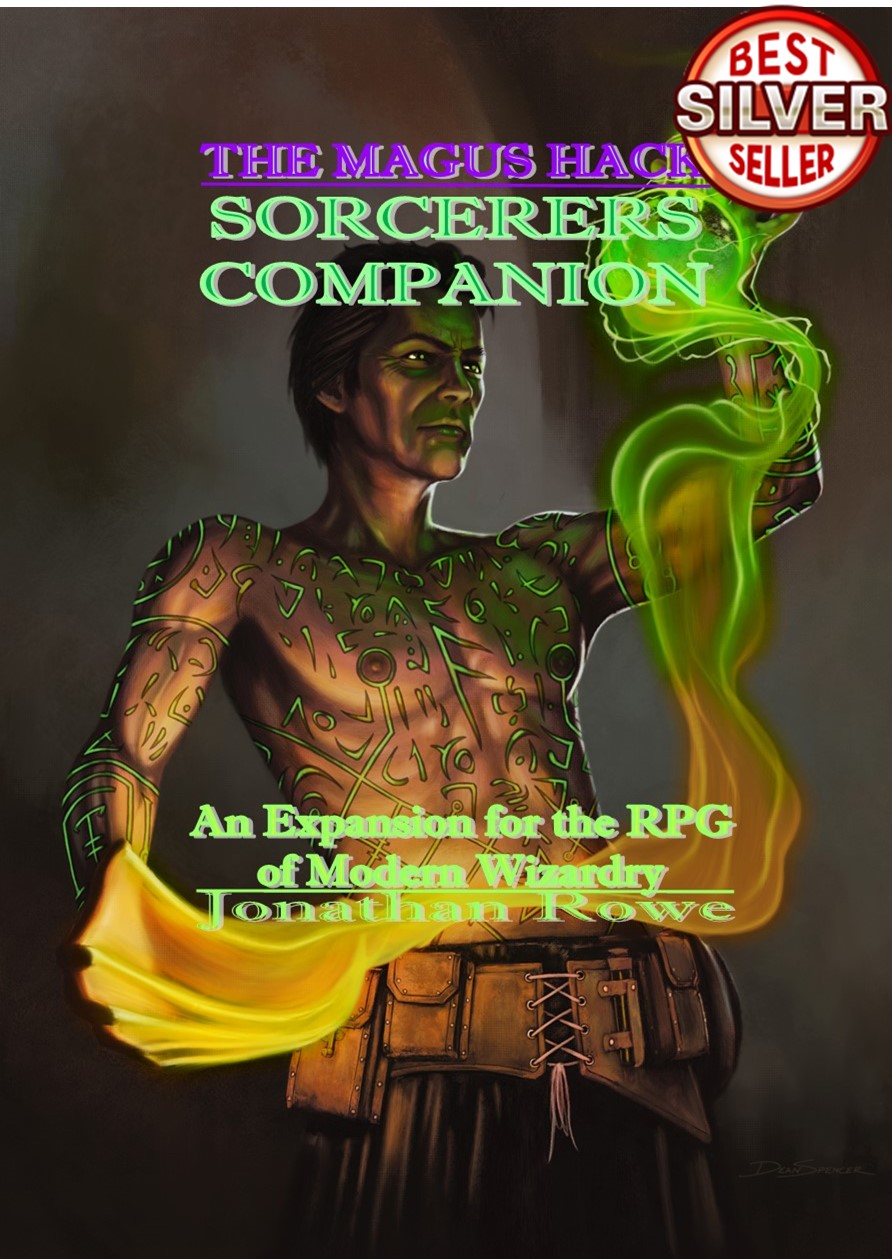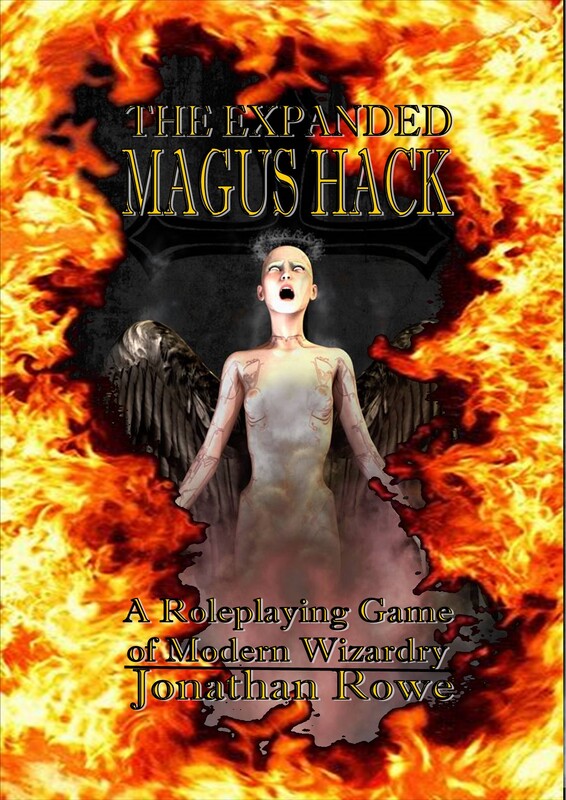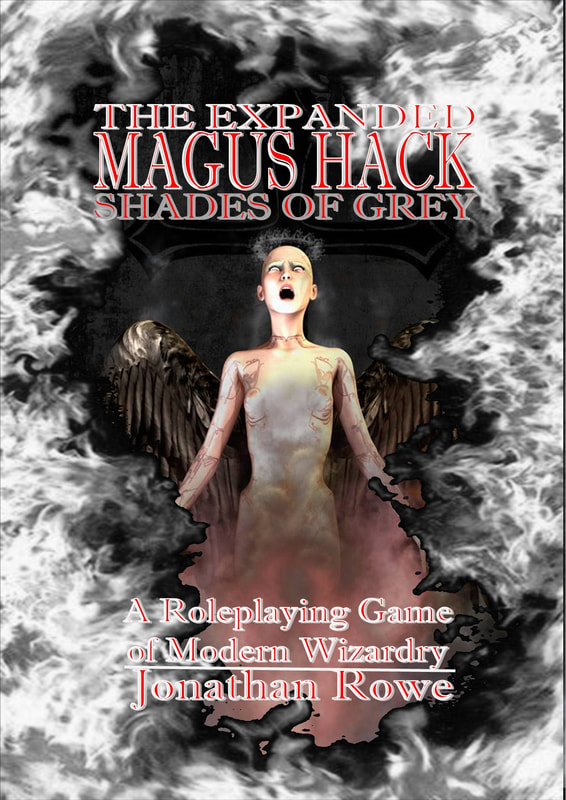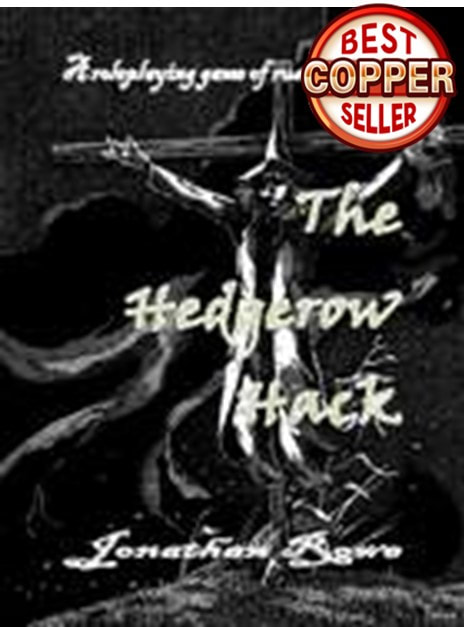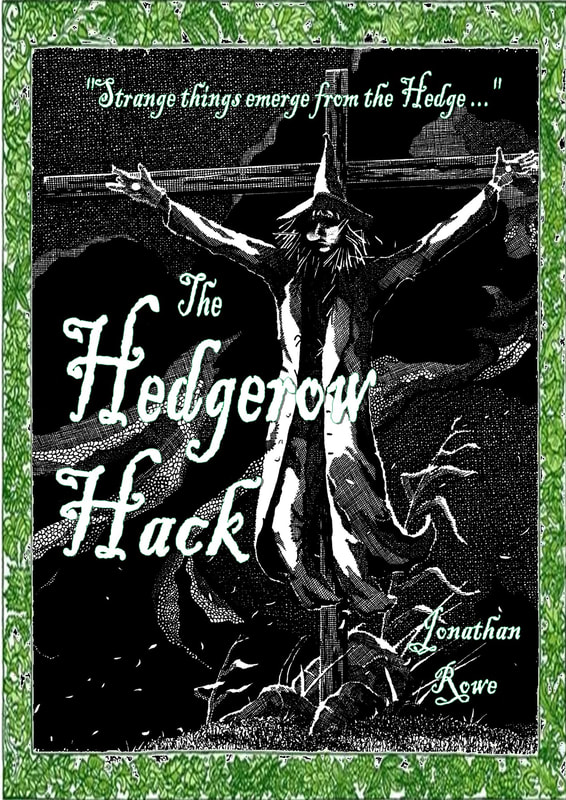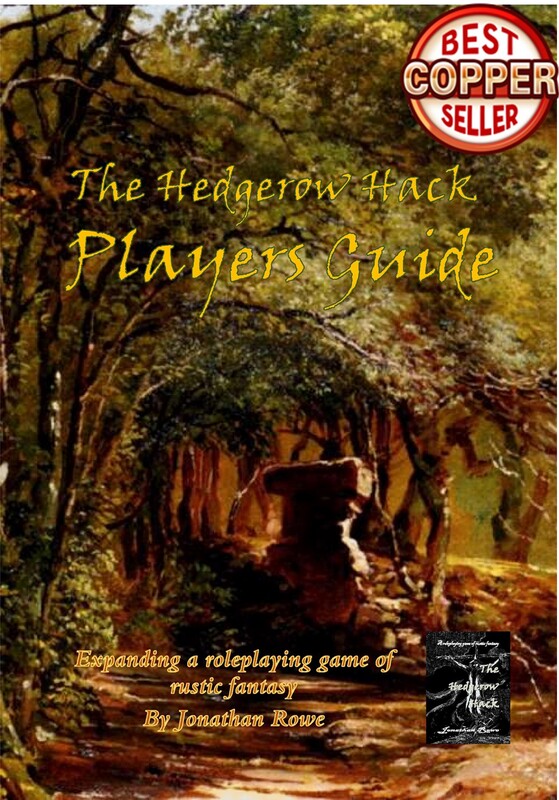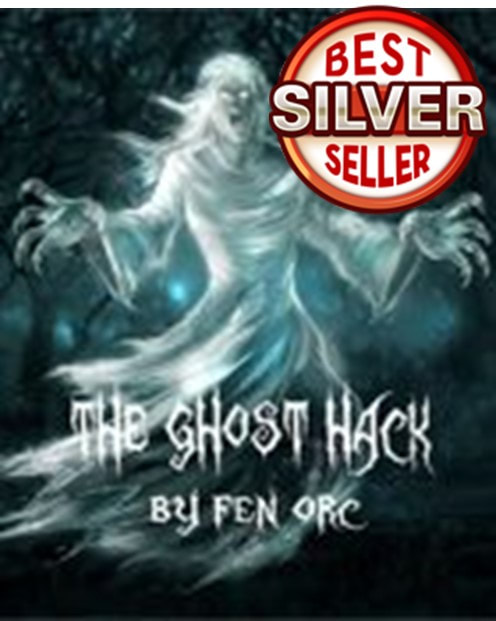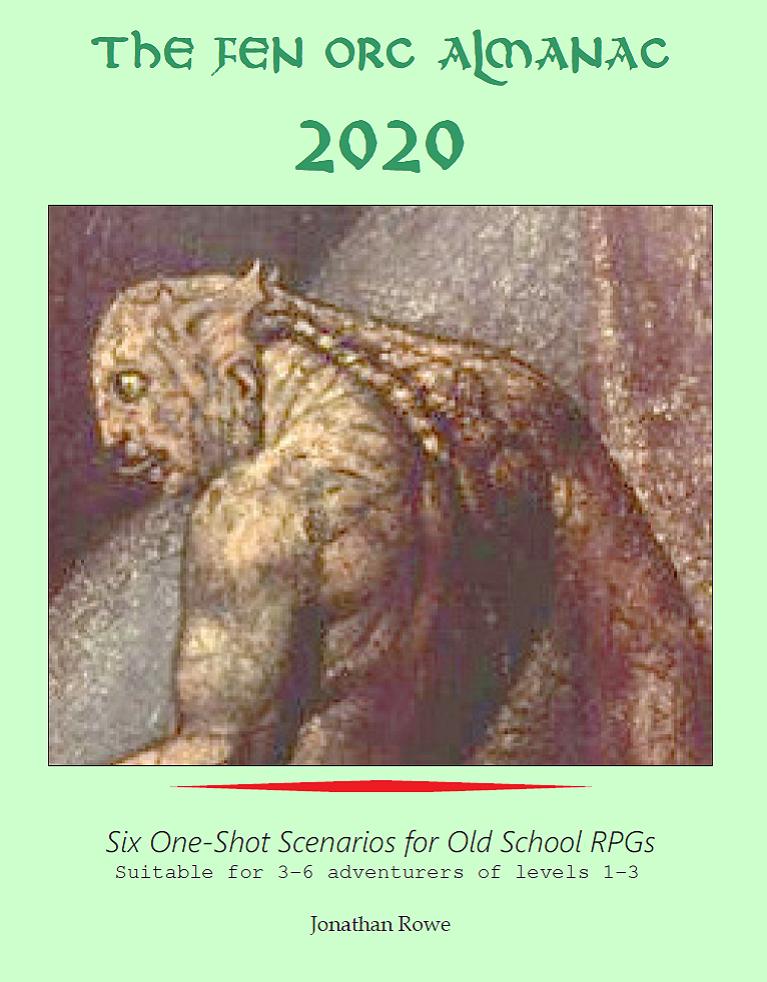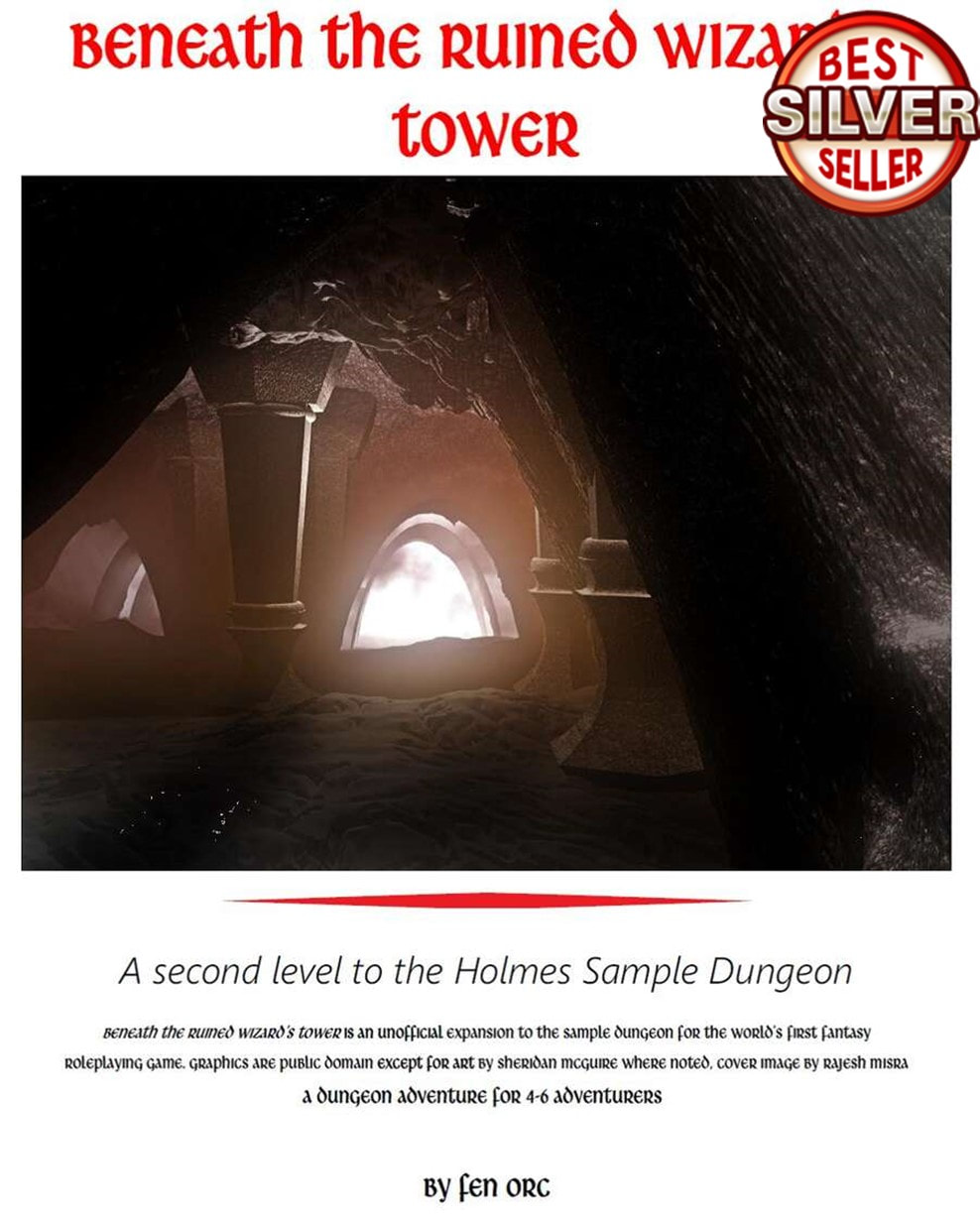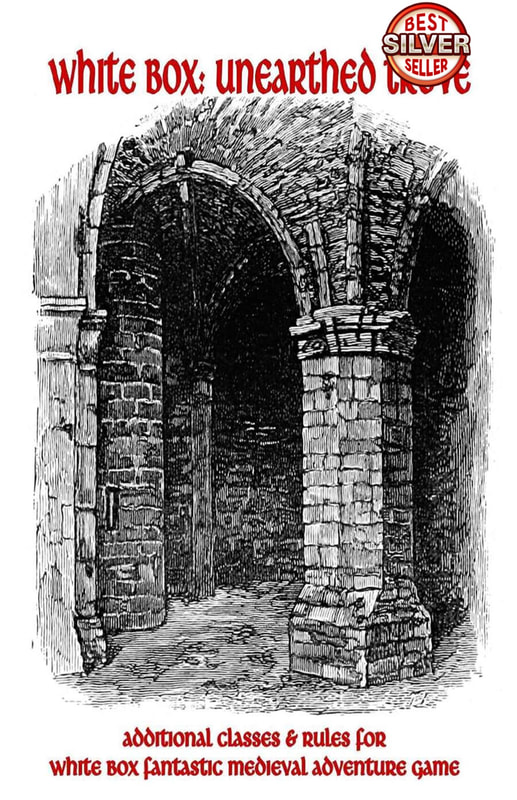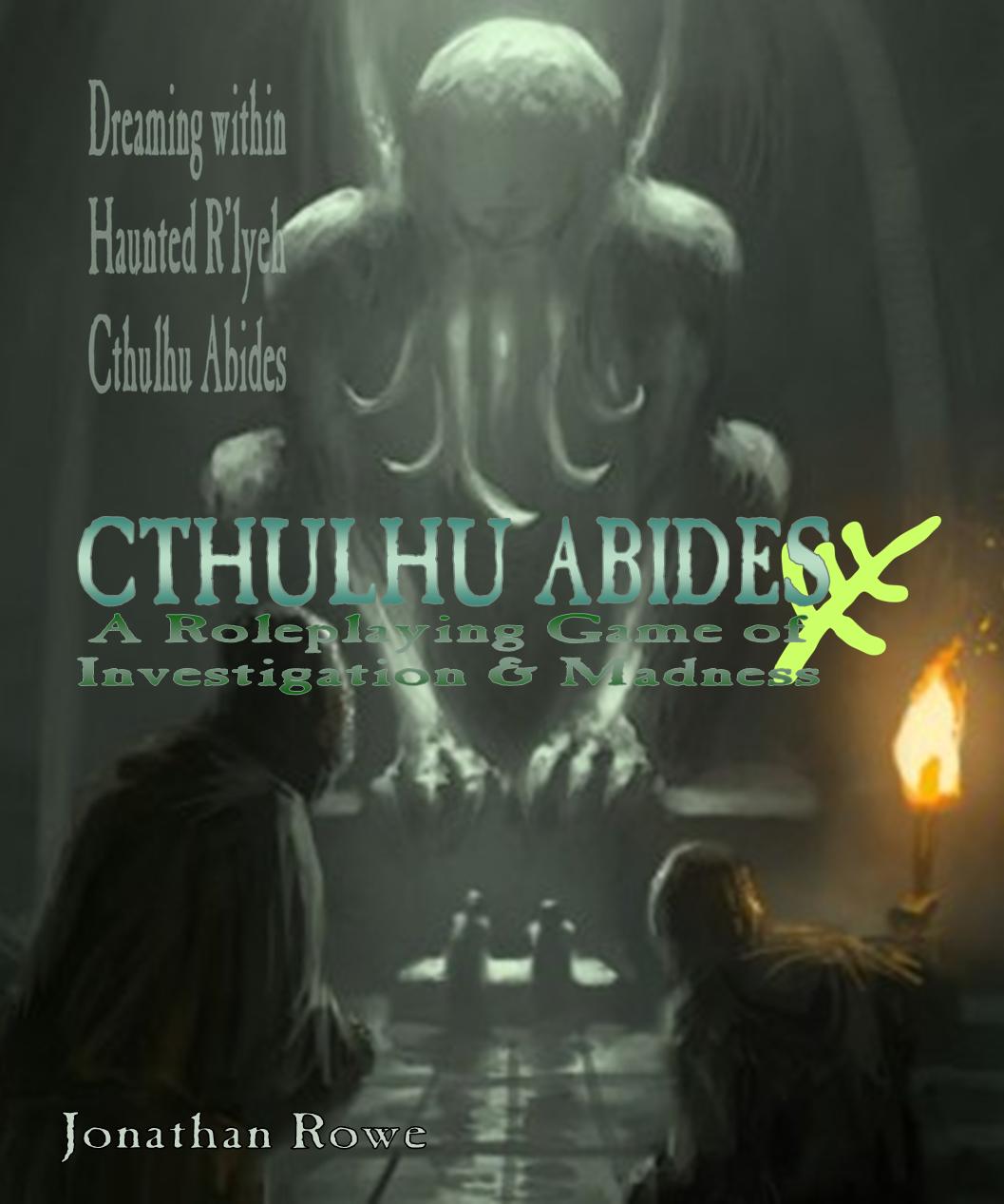|
If you work back through 1970s D&D you run into Eldritch Wizardry. And there, sandwiched between the Druids and the Demons, you will find Tim Kask's rules for Psionics. Now if you ever wonder what Macbeth meant when he told his wife that his mind was full of scorpions, you will understand completely when you try to read these rules... At the end of his rather heroic blog, Grey Elf exclaims that these rules are simple and anyone who doesn't understand simply doesn't WANT to understand. Be warned! Psionics are quasi-scientific (rather than magical) mind powers and they came into D&D along this route. Back in 1975, Strategic Review introduced a new monster called the Mind Flayer. The Mind Flayer (great name!) is a nasty squid-headed subterranean villain, nicknamed 'Cthulhu Calamari'. Mind Flayers dish out Psychic Blasts that are brutal even to the toughest PCs and Referees quickly appropriated them into their bestiaries and players went in dread of them. The hunt was on for a PC type that could stand up to such a monster, a counter-measure to the Mind Flayer's "wave of PSI force!" Steve Marsh submitted the Mystic subclass, a mind-over-matter Swarmi. Gary Gygax came up with the Divine, a new class with psychic powers, and tested it with his group. When the third D&D supplement, Eldritch Wizardry, was being developed, Gygax tasked Tim Kask with creating Psionics rules to keep the fans happy. Eldritch Wizardry (1976). It's rather squalid focus on demonology and female breasts put D&D in the firing line in the forthcoming Satanic Panic. But it gave us Druids and Demogorgon! Tim Kask was keen. A simple Psion sub-class would have sufficed, but oh no. Tim decided to use the Psionics rule to 'fix' D&D. Critics complained about the lack of 'spell points' in D&D and the absurdities of the 'Vancian' magic system that caused mages to forget spells as soon as they cast them. Tim introduced a Psionic 'spell points' system to fuel Psionic 'spells' that could be used and reused until the points ran out. Then he created a fiendishly complex Psionic combat system involving points and dice rolls and cross-referencing different styles of attack and defence. The system isn't as unbalanced as critics accused it of being. Fighters lose Strength, Thieves lose Dexterity and Clerics and Magic-Users lose spells as they acquire Psionic powers. Psionics also requires an adjustment to the D&D setting. Referees need to incorporate Tim Kask's monsters into their campaigns and dungeons, critters like the Brain Mole, the Thought Eater and the Intellect Devourer that prey on Psionic PCs and make it dangerous to be a psionicist. This balancing monsters were largely ignored by gamers and when you look at the pictures you'll see why. Oh no, a Brain Mole!!! The Intellect Devourer looks kinda cool, but the Thought Eater?!?!? To be fair to Tim Kask, his Psionics rules were rigorously tested, but badly received. Perhaps a problem was that they don't gel with the established D&D infrastructure. They function like a game-within-a-game, at odds with the normal structures of class, level and roll-to-hit. Or perhaps it is the lack of rationale. Just what are psionics? The indwelling potential of the mind? Extra-planar weirdness from the Cthulhu realms? A recessive gene? An esoteric discipline? Why can't Elves have Psionics? They were famously excluded from these powers, supposedly because D&D designer Steve Marsh was 5'2" and strongly identified with Dwarves and lobbied against his ancestral foes being invited to the Psionics party!
Why can't Druids and Monks have Psionics? I mean Monks??? Gary Gygax opened Psionics up to all classes in AD&D but the Elves were still left out. A final problem is the lottery element to Psionics. You have roughly a 10% chance of developing Psionics. Even those who possess the powers only have a percentage chance each level of gaining new abilities. This means that a few lucky dice rolls make some characters far more competent than others and rob Magic-Users of their distinctive contributions. All of which is a shame for Tim Kask, who meant well, but history is a merciless judge. For the record, Tim looks back on Psionics with these good-natured reflections: I LOVED psionic combat and had great fun devising it with all of its tables and charts. Apparently I was in the tiny minority. I guess mental combat was too esoteric for most D&Ders; not enough of them shared my fondness for the Dr Strange Marvel comics and Mindflayers. God, I loved Mindflayers; they were all over my dungeons. I just loved the idea of turning an annoying PC into a gibbering idiot.. Oh well, live and learn... With the publication of Advanced Dungeons & Dragons (1978-9), Gary Gygax shunted the Psionics rules into an appendix as an 'optional' system. He removed the link to character classes, so that Psionicists could have any Psionic power based on a lucky roll. He also made them even more rare: the likelihood of having Psionic powers became just 1%, but augmented slightly if you had high attributes. This offers further benefits to already-powerful characters and builds into the lucky few a power progression that other players will never match - because, of course, however unlikely you make Psionic powers, someone will make that roll (or claim they did). The whole system was seen as unfair - and rightly - and widely ignored. Since then, Psionics have ebbed and flowed. They were absent from 2nd ed. AD&D at first, but in the 1990s Sci Fi tinged Dark Sun setting they are ubiquitous. 3rd ed. D&D messed around with them further, proposing various Psionic character classes, which settled into four in 4th ed. D&D. The 'power points' idea to fuel Psionics remained fairly constant, despite being at odds with how everything else in D&D works. 5th ed. D&D tinkered with Steve Marsh's old Mystic class, before abolishing it in favour of the Psionics-for-everyone approach. Which just goes to show that Psionics remains the bane of D&D, the round peg in the square hole, the skull on the banquet table. Early roleplayers discover the Psionics rules. Ha-ha, no: it's Et In Arcadia Ego (1638) by Nicolas Poussin, in which innocent shepherds discover the existence of death. Same thing? Psionics in White Box: first thoughts If we attempt to complete the 'White Box project' of stripping D&D back to its source and then retooling it in the simplest terms, what do we do with Psionics? 'Ignore It!' is one simple and attractive answer. But that feels like a bit of a cop out. The Druid has been reclaimed from Eldritch Wizardry and so have the Demons. Can nothing be done with Tim Kask's legacy? Some Design Principles First, the random chance of Psionic potential has to go. You either choose to be Psionic or you choose not to be. I don't mind NPCs having a 1% (or whatever) chance of being Psionicists, but the point of being a player in an old school Fantasy RPG is that you get to be whatever you want to be. Szymon Piecha introduces an excellent system of Feats in Expanded Lore, so it makes sense for Psionic Potential to be a Feat that grants access to a separate list of Psionic Feats that players can choose from instead of their normal ones when they reach odd-numbered levels. The beauty of this is that, by choosing Psionic Feats, you are foregoing the Class-specific Feats that are so important for shaping your character most of the time. This provides a solid reason not to bother with Psionics. Also, because they get an extra Feat at first level to make up for being racially bland, it maintains (for better or worse) the link between Psionic Potential and Humans. The point-based system has to go. I'm not trying to recreate OD&D here or solve the gaming debates of the 1970s; rather, I'm trying to create a version of D&D as if those debates had never happened, with all the wisdom of hindsight. Out go Psionic Power Points. A different approach is needed. Some things have to stay, not because they are good ideas, but because they are iconic. Tim Kask introduced a set of Psionic Attack and Defense Modes with deeply evocative names: Yes, they're silly and jarring with their pop-Freudian terminologies that don't belong in any conceivable fantasy setting - but any White Box Psionics rules that don't use them are just total non-starters I'm afraid The deeper issue is how to limit the power of Psionics in the game and this has to be linked to the explanation for what Psionics are. One view of Psionics is that they are a perfectly natural potentiality in sentient minds that comes to the fore in some people, perhaps through rigorous mental training or some sort of genetic blessing. George Lucas started off treating the Force as the former, then switched to viewing it as the latter. The Force: started off as a mystical energy, turned into a blood disorder This tends to present Psionics as a fulfilment of human (or demi-human) potential. There might be a natural limitation to Psionics, which is exhaustion. Use the power too much and it short-circuits and you need long rests before it returns. A different view is that Psionics are an aberration, something deeply unnatural. Perhaps they are gifts from eldritch entities, insights into things no mortal was meant to know, the side-effects of perceptions into a cosmic reality that ordinary thought cannot conceptualise. In this case, Psionics can carry their own internal penalties: the risk of madness. Or aberrant Psionics can carry a more external risk: we need Tim Kask's psionic predators. Unleash the brain moles! Or, y'know, a mix of these. If you want Psionics to be a Lovecraftian phenomenon, then using them too freely will both drive you mad and attract the attention of extra-planar gribblies with three-lobed burning eyes. If I'm going to offer up a set of White Box Psionics rules, it needs to be setting-agnostic. So I'll need a mechanic that can be interpreted in all of these ways. The final consideration is that Psionics should be unobtrusive. If one PC develops Psionic powers, it should not skew the game around their powers or the particular challenges they face. Yet despite this, Psionics need to have a distinctive flavour of its own, otherwise it's no different from having access to a few magic spells. Getting the balance right isn't easy. A possible mechanic I'm toying with a system like this: after using a Psionic power, the psionicist makes a saving throw, having to roll higher than the number of times they've used their powers so far (say, on a d12). If you fail, you wipe away all your accumulated usage and start afresh but a Bad Thing happens - maybe you become exhausted or gain a derangement or attract a brain mole! One advantage of this is fairly minimal book-keeping. You're just keeping track of the number of times you've used your powers so far. Another is that it fits in pretty well with the house rules for Trauma & Derangement, which already function like this (you accumulate Trauma and make checks until you fail to roll over your current total, in which case you go crazy).
0 Comments
It was the tight bubble-perm on the smirking brownie that made him look like Paul Michael Glaser from Starsky & Hutch. That kooky illustration sold me on the Detective character class straight away. It was 1981 and White Dwarf 24 had published Marcus L Rowland's oddball new character class, the Detective. Eyes rolled. "They don't belong in a fantasy setting," commentators opined, "they're from 19th century fiction, not myth and legend." Of course, by the same logic, Monks don't belong in D&D either and neither do Eric Holmes' beloved Dreenoi, the insectoid space alien that the godfather of D&D played up to dizzying 4th level (whereupon it was eaten by Green Slime). That sort of negativity seems a bit quaint now, a symptom of the primness of '80s D&D that thought itself too grown-up. We're much more comfortable with genre-mashing these days. Terry Pratchett made a big contribution to the hobby with Guards! Guards! (1989, the first of his novels about the Ankh-Morpork City Watch). But maybe Marcus had read Umberto Eco's The Name of the Rose (1980). Or the first three of Edith Pargeter's (aka Ellis Peters') Cadfael mysteries (1977ff). But Marcus' inspiration goes deeper than a witty literary adaptation: The detective is a new AD&D character class whose functions are the solving of mysteries and the restoration of Law. Marcus' introduction hits just the right note. The Detective's nomenclature might be modern and winking-ironic, but his conception is rooted in old school D&D: the conflict between Law and Chaos. Paladins challenge Chaos with their swords, Detectives with their brains. Read on! I'm taking some beloved fan-made sub-classes from my youth and adapting them for White Box RPG in the spirit of Szymon Piecha's Expanded Lore. Last blog reinterpreted the hilarious Houri. Now it's the Detective's turn. Marcus L Rowland's Detective class has its feet in two worlds. On the one hand, she's a sort of virtuous Thief/Assassin who uses her powers for good. On the other, he's a quasi-clerical mystic with spells for combating Chaos. I think the secular version of the Detective is worth developing, because the clerical version doesn't require an entire subclass given over to it. Detectives for White Box Detectives are champions of Law and solvers of mysteries. They resemble Lawful Thieves and Bards to a degree. It is their calling to solve crimes and bring wrongdoers to justice. Some focus on tracking down particular Chaotic monsters, such as Werewolves, Vampires or Demons. Unlike Paladins, they rely on brains more than brawn. Detectives must be Lawful in alignment. They are usually Human but at the Referee’s discretion Dwarves and Halflings may also be Detectives (advancing to level 6). The Prime Attribute for Detectives is Intelligence and they add +05% to earned XP if this is 15+. Marcus' Detectives had to be Human or Elven, but I just don't see the Elf connection. Who is more law-abiding than a Halfling? Who is more dogged than a Dwarf? Little the little folk step forward to solve crimes and leave the Elves to being beautiful and mysterious. Weapon and Armour Restrictions Detectives may use light (one handed) weapons and bows. They may wear leather armour and carry shields. Detectives advance in levels like Fighters, but their Hit Dice and To Hit Bonuses resemble Thieves. Their inferior saving throws resemble bookish Magic-Users. This class requires some commitment from a player: you'll take a while to get anywhere and you won't have much resilience. Deduction This is the chance (roll on a d6) for the Detective to pick up a clue from spending 1d6 rounds studying a person, object or location. This could include:
At the Referee's discretion, a clue could help the player with:
During an investigation, a clue could include:
Deduction is mentally stressful and can only be used once per 10-minute turn. Whether successful or not, a Detective can not seek another clue on the same subject until he has gone up an experience level. This is the Detective's signature power and it's pretty far-reaching. It's not meant to replace players figuring things out for themselves and a good way to punish its frivolous use is to impose a point of Trauma. The ability offers 'clues' and not necessarily the final solution to a mystery. It's intended to provide stumped players with a way forward and allow people to play brilliant investigators even when they're not personally insightful themselves (after all, D&D lets weaklings play strong and athletic types). If a Deduction roll fails, the Referee should roll again and if this roll fails too then the Detective receives a false clue. If the re-roll succeeds, then no clue is provided. Detection PCs successfully listen at doors, detect secret doors and traps and open locks on a roll of 1-2 on a d6. Detectives are twice as good at this, succeeding on a 1-4 (and spotting secret doors and simple pit traps without searching for them on a 1-2). This makes Detectives as valuable as Elves for detecting secret doors and replaces the Thief powers Marcus L Rowland gave them. The success range is high, but the player usually has to state that they are searching (and where) and Referees will make Wandering Monster Checks when time is spent this way - assume that most inspections use up a 10-minute turn. Non-lethal Combat Detectives prefer to capture some evil-doers alive. They can attack with their bare hands in the same way as Monks, They gain two attacks per round this way and deal 1d6-1 damage on a hit. If a Detective uses bare-handed combat to reduce a non-magical enemy to 0 HP or below, she may elect for the final attack to be non-lethal. This knocks the opponent unconscious for 1d6 rounds instead of deducting Hit Points. Two attacks per round is a lovely boost for 1st level characters. The Detective's hand-to-hand fighting is slightly less powerful than the Monk's: 1d6-1 (equivalent to daggers) rather than 1d6 (equivalent to swords and most monsters). Non-lethal attacks can still leave Injuries (see the Death & Dismemberment rules). Saving Throws Detectives gain a +2 bonus against Poison and Traps. This imitates the Thief's saving throw versus Traps but adds in the resistance of Clerics/Fighters to Poison. It's the one area where the Detective is superior to the standard classes in his build. Establish Agency At ninth level, a Detective may build a Detective Agency in a town or city. She or he becomes a Master Detective and attracts the services of a band of lower level NPCs (often other detectives, bards and reformed thieves but possibly paladins or lawful clerics) who help her solve cases. Trauma Detectives do not gain Trauma from negotiating with monsters, from searching corpses or from being alone in dangerous places. If you use the Trauma & Derangement house rules, this makes Detectives similar to Thieves, but adds in the Ranger's suitability for keeping watch while the party rests or explores. Detective Feats Arcane Senses: Your Deduction power can be used to attempt to spot invisible or magically disguised objects or creatures (including illusions and polymorphs). Elementary Insight: Add +1 to your Deduction score. Escapology You can escape from rope bonds in a 10-minute turn if left alone or 1d6 turns if guarded. You can use a Deduction roll to try to escape from chains, manacles, bilboes, stocks and other more solid bindings. Martial Arts: You deal 1d6+1 damage when fighting unarmed and your bare-handed attacks count as if they were magic weapons. Master (or Mistress) of Disguise: You can spend 1d6 rounds disguising yourself to appear as any class, gender or race of your approximate build. If onlookers try to see through your disguise, use your Deduction skill to fool them. Nemesis: Choose one particular enemy that you hunt. You are immune to its signature power. This could include the charm powers of Succubi, blinding beauty of Sidhe, the level-draining of Vampires or lycanthropy from Werewolves. Sage: You have a broad area of knowledge (e.g. plants) in which you are an expert and a narrower area of specialism (e.g. fungi) in which you are unrivaled. You may select this Feat multiple times to extend your knowledge. What about magical Detectives? The spell-casting Detectives don't seem to require a whole subclass. They're just Lawful Clerics who follow a god of Justice or a cult of inquisitors devoted to solving mysteries or hunting down evil. Lawful Sages Rather than give Clerical Detectives the God's Weapon ability from Arcane Lore, give them a Sage area of expertise, just like the Detective Feat above. Let them expand into other areas of expertise, if they wish, instead of taking new Feats. They don't use the other Detective Feats and instead choose their Feats from the standard Cleric list. Marcus L Rowland's Detective Spells Some of Marcus' original Detective spells can be included for White Box, like these, which are only available for Clerical Detectives. Detect Lie Spell Level: C1 Range: Caster Duration: 1d6 rounds The caster can tell if she is being lied to (but not if someone genuinely believes a false report). The caster receives a saving throw vs Spells to resist a Houri Magic-User casting Silvertongue. Reflect the Past Spell Level: C2 Range: 10' radius of caster Duration: Concentration The caster can hold up a mirror or shine a lantern through incense smoke to reveal events taking place in the same location in the past, up to one hour ago per level of the caster. The caster gains a point of Trauma from doing this. Certain demons and fey creatures might detect that they are being observed from the future and block the effect. Truth Spell Level: C3 Range: Touch Duration: 1 hour The target of this spell is compelled to tell the truth. The target is not forced to speak but if they do speak they cannot lie. There is no saving throw against this effect. Escapology Spell Level: C4 Range: Caster Duration: Immediate Non-magical bindings immediately fall away from the caster, including ropes, chains, manacles and gags. This only works on bindings on the caster's person, not locked doors. The caster receives a saving throw vs Paralysis to escape from magical bindings (such as web spells but not paralysation or hold person). Vision of the Past Spell Level: C5 Range: Caster Duration: Concentration This is an improved version of Reflect the Past because the vision occurs in the caster's mind and extends into the past for one year per level of experience. The caster sees the past as with her own eyes and can cast another perception-based spell (such as detect evil) but the vision will end immediately after a second spell takes effect. The vision causes the caster to gain 2 Trauma and demons/fey entities may perceive the caster themselves. I'm gripped by the idea of a vigilante Half Orc Cleric-Assassin who is a Clerical Detective and tracks down his former Guild-mates to execute summary justice... Was it the Houri's exotic powers or her sultry pose that intrigued me. It was 1979 and I was 12, so I think Russ Nicholson's art had something to do with it. But it was a good character class, a nod to non-Western themes (in a crude way) and one of those creations that briefly straddled the OD&D/AD&D divide. I've always wanted to revisit Houris. Click on the image to read Brian Asbury's original Houri Brian Asbury's 'Houri' appeared in White Dwarf 13 (1979) and was billed as a sub-class of Magic-User specialising in charm and stealth: Houris, or Nymphs of Paradise to give a better description, are a very specialist sub-class of magic-user, their speciality being concerned with spells of charming and similar abilities. They also have the power to seduce single individuals and the ability to hide in the shadows as thieves. Asbury's Houris have a fiddly Seduction ability that creates the same power creep problems as Bardic Charm and is rather problematic when reviewed from 21st century perspectives (it's super heteronormative!). A seduced male will drop his weapons, become oblivious to his surroundings, and attempt to engage the houri in a passionate embrace. In such a state he is extremely vulnerable ... Seduction cannot be used in combat and cannot work against other females except homosexual ones My appreciation of Szymon Piecha's Expanded Lore has made me want to take his philosophy and apply it to other fan-made character classes from those early days of D&D. How can we re-tool the Houri for White Box RPG? There seem to be two ways to go with the Houri, which Asbury's original template muddles together. One is the Houri as a specialist Magic-User: whereas Illusionists specialise in illusions, Houris specialise in charm, ESP and other types of mind-control magic. The other is the Houri as a type of Bard: a seducer, spy and influencer. The latter seems to me to be much more interesting than the former, given that I hate the idea of Magic-User subclasses with their own unique spell sets. Houris for White Box Houris are intriguers and seducers who use their personal charms to manipulate others. They excel at gathering and trading rumours and exploiting social situations. Houris can be any non-Lawful alignment. Houris can be male (adonises, if you prefer) or female. They are usually Human but at the Referee’s discretion Elves may also be Houris (advancing to level 8). The Houri's Prime Attribute is Charisma, which confers a +05% bonus if it is 15+. Weapon and Armour Restrictions Houris may use daggers, darts and other small, concealable weapons. They may not wear armour or carry shields. This table proposes Houris advance as fast as Thieves, but their Hit Dice, Saves and To Hit Bonuses advance like puny Magic-Users. This is a frail build. Intrigue This is the chance (roll on a d6) for the Houri to learn something of value from talking to a NPC for one round or observing a group of NPCs for 1d6 rounds. If successful, the Referee will provide the Houri with a rumour. If unsuccessful the Referee rolls a second time and if that roll is also unsuccessful the Houri is provided with a false rumour; if the second roll succeeds the Houri learns nothing but is not misled. This is similar to Bard's Lore ability, but it deals with the present rather than the ancient past and people rather than objects. Intrigue might reveal who is a traitor, which monster carries a magic weapon or simply a rumour about the dungeon. It might reveal things NPCs know, such as traps on their treasure, a secret door they use to escape or the fact that they expect reinforcements soon. In a town setting, Intrigue exposes factions, plots and the ties between NPCs: who loves who, who hates who, who serves who and what it would take to bribe someone. The Referee decides how much or how little Intrigue reveals, but I recommend generosity (short of ruining your own scenarios) since this is the Houri's main ability.
This is an incredibly useful power, especially as NPCs do not get to save against it if they fall within the Houri's Hit Dice limit. The downside is that the Houri may be pestered and, in a dungeon environment, attacked by monsters. Nonetheless, the opportunity to stun monsters or lure away guards offers an incredible tactical edge. Entrancement resembles a Bard's Charm power, but the Houri does not have to do anything to maintain it; however unlike Bardic Charm it will only last a few rounds. Fascination Houris can bewitch NPCs who have been entranced: this has the same effect as charm person. The subject is allowed to save vs Spells to resist this and, if successful, is immune to further attempts until the Houri has increased a level of experience. Fascinated NPCs who are sexually orientated towards the Houri will be romantically infatuated. Other NPCs will be struck with admiration and a desire to impress the Houri A Houri can keep one NPC fascinated, plus an extra NPC per Charisma bonus modifier (usually +1, +2 or +3). If the Houri exceeds this limit, a previously fascinated NPC is no longer charmed and conceives an intense hatred of the Houri that lasts 1d6 days but lasts weeks instead if the Fascination was romantic. Being able to charm enemies at will sounds over-powered, but it's not quite that simple. The target must have been Entranced first, which is limited to a certain number of Hit Dice and carries its own risks if the charm doesn't work. Then there is the limit to the number of dupes the Houri can keep Fascinated at any given time - and every dupe you 'let go' to make room for somebody new creates an ex with a burning hatred towards you. Saving Throws Houris gain a +2 bonus against ESP and mind-controlling powers. Establish Salon At ninth level, a Houri may build a pleasure palace in a town or city. She or he becomes a Muse and attracts the services of a band of lower level NPCs (often other houris, bards and thieves but possibly illusionists or clerics of love-deities) who frequent her salon, which becomes a hub of culture, pleasure and gossip. A salon might be an artistic studio, a temple to love or a brothel or anything in between. You can play Houris as the classic 'mystical prostitute' if you like, in which case the Salon is a place for orgies. This version of the Houri allows them to be more sophisticated than that: a Cersei Lannister or a Guinevere or even a Gertrude Stein rather than a sexual entrepreneur. Trauma Houris are sensitive people but very flexible in their psychology: they do not gain Trauma from negotiating with monsters, from testing potions or from being charmed, possessed or transformed by magic. Houri Feats Backstab: You can Backstab opponents you have Entranced, just like a Thief (gaining +2 to hit and rolling damage dice twice); this immediately ends the Entrancement. Bewitching: Your Fascination power functions as charm monster instead of charm person. Body Language: You can communicate with intelligent creatures without sharing a language, but only simple ideas, emotions and instructions can be conveyed. Insight: Add +1 to your Intrigue score. Master (or Mistress) of Disguise: You can spend 1d6 rounds disguising yourself to appear as any class, gender or race of your approximate build. If onlookers try to see through your disguise, use your Intrigue skill to fool them. Poisonous Kiss: You can apply contact poison to your lips or body, causing a victim you kiss or embrace either to be paralysed for 1d6 rounds or to take 1d6 damage if they fail to save vs Poison. Victims are only affected by the poison once, until you re-apply it the next day. Striking Appearance: Add +2 to the number of Hit Dice of people you can Entrance. Notes for Referees You have to rule on entrancement on a case-by-case basis. In a dungeon situation, Entrancement will stun a group of humanoid monsters then cause them to target the Houri with their attacks. Since Houris wear no armour, they need to think carefully before employing this tactic! In other situations, Entrancement can lure away sentries, break up crowds or cause enemies to pursue the Houri rather than other characters. Entrancement is a pre-requisite for Fascination. Once a creature is Fascinated, the Houri cannot remove the effect except by Fascinating more creatures, which causes previous subjects to react with hatred. When the Houri Fascinates a new subject beyond their limit, the Referee should determine randomly which of the previous subjects reacts this way. Intrigue can only be used once on each named NPC or group of unnamed NPCs or humanoid monsters. It cannot be attempted again on the same persons until the Houri has gained a level of experience. The Referee should give Intrigue a wide latitude to discover secrets, detect monster weaknesses or ‘read the room’. By way of default, a successful Intrigue could allow a Houri to confer on an ally an attack with advantage (a spell that is saved against at -2, an attack with a +2 bonus, an opportunity to Backstab or Assassinate) or allow the Houri knowledge of a treasure, trap or secret door in the area. What about magical Houris? Brian Asbury's original Houri was a spell-caster as well as a seducer. Now it seems to me that there is no need for a separate class if this is what you want. Any Magic-User can specialise in charm, illusion, scrying and mind control. However, they do not get the powers of Entrancement, Fascination and Intrigue described above and choose their Feats from the Magic-User lists. A Magic-User Houri will only use these spells from the White Box lists: The Houri's Kiss Rather than giving Houris a Familiar as a starting ability (c.f. Expanded Lore), allow them this power: if they kiss a target while casting a spell, the target gets no saving throw against that spell. Of course, kissing an opponent in combat requires a roll to hit and if the roll misses the spell is wasted. Brian Asbury's Houri Spells Some of the original Houri spells can be included for White Box like these, which are only available for Magic-User Houris. Silvertongue Spell Level: M1 Range: Caster Duration: 1d6 rounds The caster can lie convincingly. Listeners will believe anything the caster tells them so long as it is not contradicted by their senses. Lies that go against deeply held beliefs allow the target a saving throw vs Spells and, if successful, the target will believe nothing else the caster says. Communicate Spell Level: M2 Range: Caster Duration: 1 hour The caster can communicate with any intelligent, non-magical creature in its native language. (The caster speaks normally but the targets hear their own native tongue, which the caster understands in his or her own familiar language). Love Spell Spell Level: M3 Range: Touch Duration: Until dispelled The target will fall in love with the next gender-appropriate person it sees if a saving throw vs Spells is failed. Hate Spell Spell Level: M4 Range: None Duration: Until eaten The target will conceive a violent hatred for the next person it sees if a saving throw vs Spells is failed. Stop! Spell Level: M5 Range: Caster Duration: 1d6 rounds All non-magical creatures that can see the caster are frozen with awe and desire for 1d6 rounds and can take no actions, including self-defence. Attacks against them are at +4. There is no saving throw against this but creatures are freed from the effect if they are attacked, roughly shaken or spells are cast on them. Blown Kiss
Spell Level: M6 Range: 120ft Duration: Instant This spell lets the caster cast any level 1-5 spell they have prepared as if it were bestowed through a kiss (i.e. there is no saving throw against it). Or, when does OSR stop being OSR and just become a brand new RPG? Last week I started reviewing Szymon Piecha's Expanded Lore for White Box RPG. I spent a lot of time on a deep delve into Szymon's treatment of the old OD&D sub-classes: the Bard, Druid, Monk and Paladin. White Box in softback from Lulu and Expanded Lore PDF from drivethrurpg Szymon fills most of his supplement with character classes, but the second part is taken up with optional rules. He introduces these in a tentative manner: the additional rules strongly modify the core rules of the White Box game and are designed for long campaigns. They are very optional and most purists may see them as too modern. Still, they are designed to keep the game simple, yet interesting (and most importantly – fun) Szymon's concerns about 'purists' and a perceived need to alter the White Box rules for 'long campaigns' need to be unpacked first. I suppose a 'purist' view is that the rules be as little altered from Original D&D as possible. But I think purism goes further than that, because White Box already includes features absent from the OD&D experience (like Thieves and variable weapon damage). It's a style of play. There are two play styles that can, with equal merit, identify themselves as 'Old School'. One is a sort of Ludic Darwinism. In this style, players roll up characters very quickly and bestow upon them the most elementary form of individuality (a class, a name - you are Derek the Cleric or Elvis the Elf). These characters are very flimsy so you recruit a bunch of hirelings each. You go into a dungeon 'mob handed' and throw these characters into the thresher. Probably a quarter will die. The rest emerge with treasure and XP. Most players will lose many characters over the course of a dozen games, switching to play their former-hirelings or rolling entirely new PCs. Fate/Chance determines which characters make it to 2nd and 3rd level. There's a lot of wastage. If Ludic Darwinism appeals to you, it's worth noticing that dungeons have to be low-threat in such a campaign. Look at Holmes' Sample Dungeon in Basic 'Blue Box' D&D (1977): a few goblins, a bunch of skeletons, giant rats; the worst thing in it is a big crab. Compare with Module B1: The Keep on the Borderlands, which is far too deadly to play in this way. You're all gonna die Ludic Darwinism proposes that (successful, surviving) characters start out as mere stereotypes, but they acquire individualism and defining quirks based on what happens to them in their adventures. You don't create a character so much as discover or evolve one. By the time he's 3rd level, your character has his signature bullwhip and fear of snakes, but he didn't start out that way. He started out as Junior. It was down the dungeon that he became Indiana. The other view is RPG Auteurism. This is the idea that you create an intriguing character right from the outset: someone with a backstory, motives, friends and enemies, a personality, an agenda. This character isn't an empty stereotype; she is the protagonist in a sort of oral novel you are composing. Right from the outset, she is the hard-drinking, wounded-in-love daughter of Dr Abner Ravenwood, running a tavern in Tibet. These two styles aren't necessarily opposed, but they sit uneasily with one another. If the game is run according to Ludic Darwinism, then Marion Ravenwood can be snuffed out unceremoniously on the first encounter. There's no guarantee her story will be told. Instead, the player ends up creating Shanghai stage singer Willie Scott, then when she gets iced, Austrian art historian and Olympic swimmer Elsa Schneider, hoping to come up with a character that lasts long enough to get to 2nd level and some sort of resilience. Ludic Darwinism risks ignoring the central appeal of a game like White Box. With its simple 6 attributes and 4 character classes, you can create anything. Your imagination is the limit. You can be a steampunk robot with a human brain floating in a tank, or a two headed mutant from the future, or Eric Holmes' famous description of a D&D group in his Basic 'Blue Box' Set (1977): an expedition might include, in addition to the four basic classes and races (human, elven, dwarven, hobbitish), a centaur, a lawful werebear, and a Japanese Samurai fighting man Blueholme, a delightful retro-clone of Basic 'Blue Box' D&D, explicitly invites players to ask their Referee to allow them to play as any of the races in the Monsters section - which includes the insectoid Dreenoi because Holmes' highest-level D&D character (4th!!!) was a Dreenoi (adapted from the 1974 Sci Fi skirmish game Star Guard). Blueholme Journeymanne: Your next PCs... White Box lends itself to, indeed, demands, a degree of RPG auteurism. Yet, once we have created these fascinating characters, we wish them to survive. Szymon Piecha reveals his allegiance with his reference to rules for "long campaigns": he wants to tweak White Box in an auteurist direction by making starting characters less flimsy, more competent, and offering, more choices for how they develop at higher levels. The "purist" criticisms he forestalls are the Ludic Darwinists who feel that characters should stand or fall by a roll of the dice and the canny tactics of players during the game rather than being 'built for success' from the outset. I suppose that's why Szymon warns that some might find his rules "too modern" and he's right. The striking feature of later iterations of D&D is their swing towards to RPG Auteurism: in 5th edition, first level characters are already developed persons, heroic of stature, and you have to make choices about their 'starting build' that are quite absent from White Box. Yet creativity is diminished. In 5th ed. D&D you create a complex character, but only out of those pre-selected components the game provides for you. The blank-canvas invitation to free creativity has gone. Building Characters for Success Szymon suggests rolling 3d6 seven times, choosing the best 6 scores and assigning them to attributes as you see fit. That's a well established house rule. For the record, I prefer rolling six 3d6 attributes in order then rolling an extra d6 for bonus points to be split between those six any way you like. Whether players should take their character 'as rolled' and make the best of it, perhaps steering inadequate PCs towards an early death so they can roll up a better replacement, or if they should be allowed to 'tweak' the dice to ensure a character in line with their heroic expectations, goes to the heart of the Ludic Darwinism vs RPG Auteurism debate. There's a good discussion of methods of rolling up characters on the D&Dbeyond forum. White Box follows the OD&D convention of only awarding bonuses of +1 for attributes of 15+ and -1 for 6 or less. This de-emphasises attributes in the game and makes the main distinction between PCs a matter of role playing: you act out the role of someone who is clever or clumsy or strong, rather than getting significant statistical skews to do it for you. Szymon brings White Box more into line with Basic D&D, but keeps 15+ as the border between "better than average" and "really very good". Except, wait: that's not quite right. Szymon has a +1 bonus kicking in at 12 (rather than 13), +2 at 15 (rather than 16) and +3 at 17 (rather than 18). This is empowering for characters, putting bonuses within easy reach. Yet it's hard to see the rationale for keeping the penalties at 8, 5 and 3 - they ought to be raised to 9, 6 and 4. Like this Getting these boundaries right is important, because Szymon proposes a new benefit at 2nd, 4th, 6th, etc levels: the player chooses two attributes and increases both by +1. This certainly makes 2nd level an exciting accomplishment (not much else happens at 2nd level for most characters) and allows players to 'buy off' poor attributes and invest in high ones as their characters progress. Szymon goes further still, suggesting a range of extra abilities for starting characters. Clerics get a 'Godly Weapon' based on their deity's myths with which they are +1 to hit and damage; a nice way to get Clerics of Poseidon wielding tridents and Clerics of Artemis firing bows, and also making starting Clerics in some respects a match for Fighters. Magic-Users get a Familiar; Thieves get Precision which lets them add their Dexterity bonuses in melee combat with Daggers (also making them equivalent to starting Fighters in some respects and keeping the dagger as weapon-of-choice for Backstabbing). Fighters get a range of sub-classes to choose from, conferring things like berserking, to hit bonuses against special enemies or even magic resistance. The new sub-classes discussed in the last blog get abilities too: Bards can cast a 1st level Magic-User spell, Druids can speak with animals, Monks can meditate to heal and Paladins can summon their holy steed. Races get extra abilities too. Dwarves enjoy 8-sided Hit Dice, Halflings take half damage from giant monsters and Elves? Elves are immune to Ghoul paralysis and detect secret doors with twice the normal range - both powers White Box already gave them. My house rules make them immune to charm (as they are in AD&D) and the level draining powers of Wights and Wraiths (and only losing one level to Spectres and Vampires). You should find you have a beefy and resilient 1st level character now; someone who doesn't curl up and die in the first encounter. Heroic Progression There's more. As well as the Attribute boosts at even-numbered levels, Szymon suggests characters pick up 'Feats' at the odd-numbered levels - and Humans choose one at 1st level to make up for not having exciting racial abilities. These Feats let you customise your character in line with their evolution through play. There's a set of generic Feats: I presume each Feat can only be chosen once. The +2 Attribute bonus, on the back of those Attribute hikes at even-numbered levels, will promote characters to heroic stature pretty quickly - but you would be mad to ignore that +10% XP bonus. Szymon then offers class-based Feats as alternatives to these generic ones. Clerics can have immunity to fear, improved turning undead or a protective aura that reduces all damage they take by -2. Yes, these Feats are significant. Fighters can take a Feat that gives them a free attack every time they kill an opponent, bonuses to AC or saving throws or just +3 HP. Magic-Users can have a force field improving AC by +2, an extra 1d6 damage on their damaging spells or extra first level spell slots. There are similar Feats for Thieves and the sub-classes (although I suggest some of my own for Monks, since Szymon is very mean with them). What has White Box become? At the start of this essay I suggested that if you tweak OSR RPGs too much they turn into new modern RPGs. Arguably, Szymon Piecha does that here. Put another way, White Boxes stop being white when you added the smallest tincture of another colour to them and they can never be truly white again. Indeed, the material that Szymon developed for White Box evolved into a brand new OD&D-inspired retro-clone: the Polish-language Grottos & Giants. Incidentally, I call him 'Szymon' because that's how he appears on drivethrurpg but he seems to be credited as 'Simon' in his books Nonetheless, Expanded Lore gets testimonials from White Box creator Charlie Mason: Some White Box GMs will probably have a massive coronary over some of this stuff, but it's entirely optional and frankly pretty well done. Charlie Mason is right: it is well done. Szymon Piecha has a good instinct for this, spotting where to simplify and de-power (such as the subclasses) and where to be generous by granting characters new abilities and letting players grow their characters into super heroes. He removes things I hate (minimum attributes, gradated character class powers) and adds in things I like (a modular approach to leveling up) and he prefers straightforward "now you can do this" powers to fiddly percentile rolls. If his intention was to turn White Box into a RPG Auteur game, where players create resilient characters who can survive and level up over a long campaign, somewhat insulated from futile death, then he has succeeded admirably. Yet he still keeps the game's toes in Ludic Darwinism: characters can still die suddenly, creating a new character is the work of minutes, and the system is still wide-open and loosey-goosey enough to offer players unbounded creativity. If a player wants to be that Japanese Samurai or Lawful Werebear, the Referee just treats it as a new Feat. Personally, I want to go further towards Auteurism in my campaign. The house rules on Death & Dismemberment help preserve characters from sudden and futile death at lower levels, increasing the risk of permanent masiming instead. But then, I'm world-building on the fly and each PC is a fresh creation adding to that world. After the player has put effort into coming up with background and culture, I want to see them stick around and enjoy the world they've added to. Over on my White Box resources page I discuss the quirky impression of White Box as what could have happened if Dave Arneson had teamed up with Ken St Andre (of Tunnels & Trolls) instead of Gary Gygax when he marketed D&D.
Piecha's Expanded Lore strengthens that impression. Expanded Lore takes Mason's game further in the direction it was already traveling: not OD&D any more, but OD&D-adjacent. It was October half term in 1978 and I was 11 when my best friend Simon introduced me to the two-tone record label and Dungeons & Dragons. I never really got into ska music but the other thing had a mighty effect on me. After that fateful weekend, nothing would do but my parents must buy me my own Dungeons & Dragons set for Christmas. What I unpacked with feverish fingers was J. Eric Holmes' D&D Basic Set, AKA the 'Blue Box'. And so it was that my baffled family were forced to create characters and explore the Sample Dungeon therein, the tunnels beneath the ruined Tower of Zenopus. I've written about the classic Sample Dungeon on a previous blog and reviewed Zach Howard's authoritative adaptation for 5th ed. D&D as well. Now my daughter Emily is refereeing the 'Zenopus Dungeon' on her own friends. The time is right to realise a dream that is 40 years in the making... to design the second level to the fabled Holmes Sample Dungeon! It's pay-nothing on drivethrurpg. The title alludes to Eric Holmes' introduction to his dungeon: "At the Green Dragon Inn, the players of the game gather their characters for an assault on the fabulous passages beneath the ruined Wizard's tower" Of course, Holmes intends exactly this response from readers and fans: go design your own levels to this dungeon! By the time the adventurers have worked their way through this, the Dungeon Master will probably have lots of ideas of his or her own to try out. Design your own dungeon or dig new passages and levels in this one. What lies in the (undiscovered) deeper levels where Zenopus met his doom? The artwork to this set, by David C Sutherland III, probably defines my childhood more than any other artifact except this tattered old copy of The Mighty World of Marvel from 1974! So I'm offering this dungeon design up, partly as a gift to my daughter, but in no less part to my 11-year-old self, who had (I now know) more wisdom and depth to his thought and feeling than the 15, 25 and indeed 45 year old versions that followed. Analysing Homes' craftsmanship I've seen a few very careless reviews of the Holmes Basic Set that dismiss the sample dungeon with an indulgent chuckle: it's a 'zoo dungeon' with 'no rhyme or reason to it' and has its iconic status by virtue of its placement in this best-selling set rather than its own virtues. This is, I believe, deeply mistaken. Let's look at what Holmes does. Holmes' introduction to the dungeon links it to the mysterious fate of the wizard Zenopus, who created a Tower overlooking Portown, near to the sea, neighbouring the graveyard and above the ruins of an older, pre-human city. This triptych - the pre-human city, the graveyard, the sea - rings through the dungeon like the tolling of a bell. The sea hints at the wider geography of Holmes' world, where rascally pirates kidnap beautiful noblewomen for ransom and hide them in sea caves where they are menaced by giant crabs; this is the world of adventure romance of H. Rider Haggard and Edgar Rice Burroughs. The pre-human city alludes the fiction of Robert E Howard and H.P. Lovecraft and the like, with their horror-inflected influence on fantasy. And the graveyard speaks for itself: horror served up straight, with a tincture of existential mystery: the "undiscover'd country" as Hamlet says, "from whose bourn no traveler returns." His dungeon bears out this promise. To the west, the pirates and smugglers hold Lemunda the Lovely prisoner. To the south, a mad Thaumaturgist holds prisoners enchanted, masks speak, doors lock and a tower is guarded by a giant serpent - straight out of a Conan story. To the north, the criss-crossing corridors lead explorers into crypts haunted by ghouls, occupy them in breaking into crumbling sarcophagi in search of wealth, magic and curses and all the while fighting off the ravening giant rats that erupt from their tunnels. There is one entrance but multiple exists. Explorers can find themselves rowing out of the caves into "the pirate-infested waters of the Northern Sea", digging their way through the maggoty earth into the cemetery or emerging, blinking, into the workaday streets of Portown from the Thaumaturgist's Tower. Then there are the endless Rat Tunnels, disappearing into "the catacombs of the city." Delta's D&D Hotspot has produced an excellent mathematical analysis of the Sample Dungeon: 23 rooms, with 8 empty (35%); a total of 4650gp to be garnered, including 5 magical items, and, if every monster is defeated, 940xp to be earned in battle. This is nice but not fulsome. If four 1st level characters cleared out the dungeon, only the Thieves and perhaps the Clerics would reach 2nd level. However, if we compare this to Gary Gygax's advice on dungeon design, Holmes' dungeon looks quite generous: As a guideline, it should take a group of players from 6 to 12 adventures before any of their characters are able to gain sufficient experience for successive levels The Holmes Sample Dungeon shouldn't take more than 3 or 4 raids to complete. Holmes' original manuscript seems to be a bit different, with a mere 413xp from killing monsters but a whopping 17,555gp in treasure - enough to promote most 1st level characters all the way to 3rd level. The version we use is a synergy of Holmes' creativity and Gary Gygax editing. What's on the Second Level? (and SPOILERS) Here's my map for the second level. I'd love to claim its shaky, hand-drawn quality is an homage to Holmes' original, but in truth its a concession to necessity: I couldn't draw a slick professional dungeon map if I wanted to! Nonetheless, it looks nice and 1977-ish. Perhaps a bit lacking in Holmsian long corridors going nowhere, but I wanted it to fit on a page. I've taken the dungeon level up to 40 rooms, of which 13 are empty, preserving Holmsian proportions, but increasing the overall size by just under 75%. There's a mixture of rooms and caves. The rooms are mostly Holmsian oblongs but I've got a couple of Gygaxian polygons and diagonal corridors in there too. I've retained and tried to develop Holmes' three themes by region:
One feature I've taken from Zach Howard's 5th ed. conversion of the Holmes Sample Dungeon is "Optional" text boxes, to allow less experienced Referees to introduce complexity as and when they feel comfortable. These options enable players to sneak past the wights by pretending to be undead (in the style of Shaun of the Dead) and the revelation that the Undead Corsair's faithless wife was the identical double of Lemunda the Lovely. So that's why the Smugglers kidnapped her! Wily or desperate players might parlay with the Corsair to reunite him with his bride!
David Trampier's iconic cover art and Will McLean's witty pastiche from the 1979 Dungeon Masters Guide The prisoners subvert the stereotypes, much as the action-ready Lemunda did on the first level: one is a traitor, another doesn't want to be rescued. A magic mirror reconnects the dungeon to a town house in Portown, just like the Thaumaturgist's Tower, and I propose an evil secret society in Portown itself, connecting the Rat Cult to the Thaumaturgist. Finally, there are options to negotiate with or avoid monsters, just like the Goblin Barracks in Holmes' Sample Dungeon.
The new monsters here are Crystal Spiders whose poison petrifies - or rather, crystal-ifies - victims. Nasty, but astute players might find a cure in Zenopus' laboratory.
Brief Analysis An inventory of the dungeon shows a treasure haul of 7750gp and 2010xp from battling monsters. Of course, second level monsters are worth more XP or else are present in greater numbers. The total value of the dungeon is about 75% greater than Holmes' first level; in other words, it preserves the same reward-per-room ratio. You might say, Shouldn't it offer more reward-per-room than the first level? I scratched my head over this. Second level adventurers require the same XP to get to 3rd level as it took 1st level adventurers to hit 2nd level. So, if you want your players to progress at a constant rate, the second level needs to offer rewards on a comparable scale to the first level or else everyone races up to third level of experience too quickly. Of course the second level is bigger so players will advance further, but they will have to work for it... There are plenty of grand treasures on this level and some nice magic (especially in Zenopus' lab which could be used to produce potions and enchant swords) but the overall content is sufficient to get most characters who completed the first level beforehand up to 3rd level by the time this level is completed - except perhaps for slowpoke Magic-Users and those Elves, but you knew what you were in for when you created that Elven fighter-magic-user, right? That only leaves the third level in order to complete the "Holmes Basic Progression" up to 3rd level for everyone - and beyond, for those speedy Thieves and Clerics. What's at the bottom of that Chasm? What's beyond the Gates to the City Catacombs? Where does the teleportation Portal lead? Where, indeed? Post Script: Conversions The dungeon is written for Holmes Basic Set, which means it also works for the Blueholme retroclone. Nothing needs to be done to convert to Moldvay Basic or Mentzer Basic or retroclones like Basic Fantasy, Dark Dungeons, OSE or Labyrinth Lord. If you use AD&D or retroclones like OSRIC, you might need to compensate for tougher adventurers with more Hit Points and spells: the Undead Corsair should be a Wraith, the Master Ghoul a Ghast, the Wererats should be a 3rd level Cleric (Lowill Dreb) or Assassin (Kara the Winsome) and the Living Crystal Statues should be half-strength Stone Golems (+1 weapons to hit, 30 Hit Points, 3d6 damage, cast Slow once per combat). Heading in the other direction, if you use OD&D or a retroclone like White Box or Delving Deeper, you need to adapt for monsters that only deal 1d6 damage and have d6s for Hit Points. The Brine Zombies should have 1+1 Hit Dice; the Ghouls only get a single attack for 1d6 plus paralysation, but the Master Ghoul should attack for 1d6+1 and impose a -2 penalty on saving throws; the Living Crystal Statues should get a single attack for 1d6+2. If you use my house rules for Death & Dismemberment or Trauma & Derangement, then the Lethality Die for this dungeon is 1d6. Entering each region for the first time imposes 1 Trauma and adventurers lost in the Crystal Labyrinth gain 1 Trauma per hour unless they stop wandering; crossing the Perilous Chasm is worth 1 Trauma for non-Thieves as is slipping and dangling from the bridge. Experimenting in the Wizard's Laboratory is worth 1 Trauma at each bench for non-Magic-Users.
I've been singing the praises Szymon Piecha's Expanded Lore for White Box RPG. Time for a deep delve, starting with the fresh trestment of the OD&D sub-classes. White Box in softback and PDF from drivethrurpg or Lulu and Expanded Lore PDF from drivethrurpg Szymon introduces four new character classes for White Box based on the new classes that appeared for OD&D and 1st ed. AD&D in the 1970s: The book you are currently reading is a compilation of four additional classes – the Bard, Druid, Monk, and Paladin – with house-rules, that you can use in your White Box game. It is worth mentioning that the classes and rules presented here were designed specifically for the White Box game released by Charlie Mason. This means that they are balanced and simplified in order to work well with the original four classes – the Fighter, Magic-User, Cleric, and Thief. Szymon isn't the first person to walk this path. The original Swords & Wizardry: White Box had an expansion, White Box Heroes, by Salvatore Macri, that cleaved much closer to the OD&D templates in representing these sub-classes. Let's contrast them. S&W: White Box and S&W: White Box Heroes: both can be downloaded for free The BardThe Bard subclass originally appeared in Strategic Review in 1976, created by Doug Schwegman to be a "jack-of-all-trades" character: A Bard is a jack-of-all-trades in Dungeons and Dragons, he is both an amateur thief and magic user as well as a good fighter. He is supposedly able to extract himself from delicate situations through the use of diplomacy, but since this does not always work he is given the innate ability to charm creatures. Schwegman's Bard owes more to the serious figures of the Celtic Bards and Norse Skalds rather than later medieval troubadours and jongleurs. They have Thief powers, but at half their effective level rounded down (i.e. at 2nd level they can function as a 1st level Thief) and no Backstabbing. They get Magic-User spells at 2nd level too, albeit with much slower progression. They can also Charm listeners, with effectiveness of 10% per level and deductions for undead or monsters/NPCs higher than 4HD/4th level. Their Lore ability lets them identify magic items. Since they can get to 9th level with just 150,000XP (more than Magic-Users but considerably less than Fighters and Clerics), it's safe to say they were a bit over-powered. In AD&D, Gary Gygax hobbled them, making them a split-class option for high level Fighters to change class to Druids and end up as Bards. Hardly anyone bothered. For Swords & Wizardry: White Box Heroes, Salvatore Macri goes back to Schwegman's original Bard and tidies up the XP progression a bit, rationalises the Charm/Lore abilities to a clean 1d20 check, but fundamentally leaves things as they were. Bards do Thieving and Magic, but not as well as the real Thieves and Magic-Users, and their fiddly Charm power is rather excessive. Symon Piecha comes in with a blank slate. The first thing you notice is that XP is slashed: Bards race up the levels with the same progression as Thieves, but gain Hit Dice like pusillanimous Magic-Users. The Bardic Charm has been both loosened up and restricted. It works automatically - no roll required - on a total number of HD not exceeding the Bard's level. So a 3rd level Bard could charm 3 Orcs or a single Bugbear. But gone is the suggestion power to put ideas into charmees' heads. All the power now does is make the monsters follow the Bard around, rapt and attentive, but the moment you stop performing, they revert to normal. Because this is guaranteed to work, it's an invaluable tactic. Because all it does is make monsters temporarily docile, it's not over-powered. Lore is a d6 check (neat!) just the same as Charlie Mason's take on Thievery. If successful, the Bard gets a tidbit of knowledge on any subject. On a fail, the knowledge is false. This is equivocal in usefulness, to say the least. A +2 saving throw bonus against charm powers wraps it up. That's it! No Magic-User spells, no Thief abilities. (Well, not quite. The Optional Abilities suggest all Bards can cast a single 1st level Magic-User spell once per day. Moreover, you get to choose it, rather than rolling it randomly. Do you choose Sleep for instant gratification? Or Read Magic so you can use scrolls? Or Charm Person so you can still do the ridiculous things that gave Bards such a bad reputation?) This is a very de-powered Bard - on the same level as Thieves, perhaps, but without their combat potential. The Charm power is very useful, but you need henchmen or party allies to bash monsters over the head while they are entranced. The Lore power is intriguing, especially with a creative Referee, but no one will be putting on a ring or drinking a potion just because the Bard says it's safe, or not until the Bard gets to a very high level. However, Szymon Piecha's optional Feats change the calculations somewhat. "Wise" adds +1 to your Lore, meaning even a 1st level Bard is 50% likely to be right (and Humans get a Feat at 1st level); "Charming" lets you charm monsters as if you were a level higher, so even a 1st level Bard can charm two Orcs; "Golden Tongue" lets you pick up a new and obscure language. With Feats arriving at levels 3, 5, 7 and 9, you can build a very effective Bard whose value lies in being a knowledge base and a tactical resource for debilitating several monsters in any fight. De-powered though it is, what I like about Piecha's Bard is its commitment. It doesn't try to be a jack-of-all-trades. It's not a surrogate Thief or Magic-User. It's its own thing: a musical lore-master with only a little to contribute in combat but enjoying rapid leveling up. The Charm power will influence the entire party's combat strategy. The rest is roleplaying. I feel the rule that a failed Lore roll produces a lie every time is a bit punitive. Surely, sometimes Bards just don't know things and they know that they don't know? As Referee, I'd rather check a second time to ascertain ignorance and offer a Bard PC an untruth only if the second roll failed too. The Druid Inspired, of course, by the historical Celtic wizard-priests, Druids turned up as NPC 'monsters' in the 1974 Greyhawk supplement and as a playable sub-class of Clerics in 1976 Eldritch Wizardry. The version Gary Gygax presents in AD&D a couple of years later is (understandably) little changed. While reviewing the OD&D/White Box Illusionist, I stated that I disliked multiplying spell lists, but conceded the value of Druidic spells, with their wilderness focus, given that wilderness journeys are as significant a feature in D&D as dungeons themselves. The Druidic lists include a lot of elemental magic, animal summoning and controlling, some utility spells for plants and (rather vague) weather magic. A feature of the original sub-classes that irritated me makes its appearance with Druids: gradated abilities. At 2nd level, Druids suddenly acquire the ability to identify plants and animals and pass without trace as well as acquiring obscure woodsy languages; at 6th level they can shapechange into any animal, three times a day, and heal HP when they return to their natural form. S&W: White Box Heroes takes its cue from the Eldritch Wizardry Druid, but postpones their spell-casting to 2nd level, just like Clerics. The XP progression is brought down to match Clerics (in Eldritch Wizardry, they progressed like Fighters, as they do in AD&D). As you would expect, Piecha's Expanded Lore takes a bolder approach. The most striking feature is Shapechanging, which is now an ability all Druids get at 1st level and can use once a day. You choose a small animal and a large animal and those are your only two forms. In animal form you deal 1d6 damage but your AC improves by 4 (representing your thick hide or smallness). The Optional ability rule suggests all Druids can Speak with Animals. That's a lot of mojo at 1st level. Shapechanging is only once a day, but it's got tons of utility. Speaking with Animals at will is an amazing asset and can head off many unnecessary (and unprofitable) combats as well as gathering information. What's the downside? In a word, experience. Piecha's Druids require the same XP as Magic-Users, which is a long trudge through the lower levels. Moreover, they gain Hit Dice like Magic Users too, ending up with 5+1 at 10th level, compared to Clerics with 8. The optional Feats for Druids are a bit underwhelming too, compared to Clerics and Magic-Users. Finally, although I'm not sure if Szymon Piecha intends it to be a deliberate limitation, the spell lists for Druids are very curtailed. Although there are a few striking new spells (Wild Strength stands out as a 2nd level spell), some old favourites like Faerie Fire are missing and the lower level spells are very uninspiring. As with Piecha's Bards, what we are left with is a class that will lean heavily into two regular tactics (shapeshifting and speaking with animals) and prove an asset to parties for those reasons alone. The slow progress up the levels is the price you pay. I'm unhappy about the limited spell lists and offer an expanded list, including many of the spells from S&W: White Box Heroes, to give Druid PCs a reason to look forward to leveling up, which would otherwise be sadly lacking. The Monk The Monk class was created by TSR boss Brian Blume and appeared in the Blackmoor supplement in 1974. If there's a moment when the rot set in with OD&D, this is it. The Monk, which reappeared in all its hideous glory in AD&D, shows most of the characteristics I hatew in expanded sub-classes. Firstly, there's power creep. Monks strike with bare hands and feet, for paltry damage at lower levels, but if they hit by +5 greater than they needed to roll, the target is stunned (75%) or outright killed (25%). To be fair, Gary Gygax toned down the instant kill but the stunning is bad enough. Then there are gradated abilities: at 3rd level, reduced chances of being surprised (sorry Rangers if you thought that was your thing), speaking with animals at 4th level, speaking with plants at 8th, mind-shielding, self-healing and the dreaded 'Quivering Palm' at 13th level. This mad compendium of off-the-wall abilities is partly a result of the 1970s fascination with all things Kung-Fu. There was the popular TV series from 1972-6 with David Carradine as the wandering martial artist doing good (or at least, avoiding bad) across the Old West, aided by flashbacks of his glassy-eyed mentor, Master Po. And of course, there was Carl Douglas' cash-in disco hit. It was, as they say, a little bit frightening. Wikipedia tells me the main character in a series of chop-socky action adventure novels, The Destroyer, also inspired the Monk's more outrageous abilities. Wikipedia tells me the main character in a series of chop-socky action adventure novels, The Destroyer, also inspired the Monk's more outrageous abilities. In the 1978 Players Handbook for AD&D, the Monk returns, but whereas Gygax usually tones down the subclasses for AD&D, the Monk is as ridiculous as ever, but noe immune to Slow spells and disease. Moreover, the XP requirements, that used to match Magic-Users, get slightly toned down. In the 1978 Players Handbook for AD&D, the Monk returns, but whereas Gygax usually tones down the subclasses for AD&D, the Monk is as ridiculous as ever, but now also immune to Slow spells and disease. Moreover, the XP requirements, that used to match Magic-Users, get slightly reduced. S&W: White Box Heroes gives us the Monk in all its original ugliness, with insta-kill kung-fu, but with the XP requirement dialed back further, to match up with Clerics. What nonsense is this? Piecha's version of the Monk for Expanded Lore levels up like a Fighter but gains Hit Dice like a Magic-User (the same as the previous two sub-classes). They attack with their bare hands (if they want to) for 1d6 damage and can do so twice a round, but this never improves. No stunning. No kung-fu insta-kill. The familiar sliding scale of Armour Class has gone: Monks do not wear armour and they don't get a boosted AC to compensate. Welcome to the world of being hit a lot. Monks do get a range of minor abilities inspired by the original and all at 1st level: they can make saving throws to dodge missiles, they take no damage from falls, they can run up walls. That's it. No talking to plants or mind-shielding or self-healing or 'Quivering Palms'. You are an unarmoured martial artist. Good luck. It isn't quite that austere. The optional ability is a meditative trance: once per day, the monk can meditate for one hour to heal 1d6 HP and purge all poisons from her body. I admire the boldness with which Szymon puts the horrible Monk powers to the torch, but I wonder, has he gone too far? This is another class with nice options at first level (two 1d6 attacks is fantastic, personal healing is great) but nothing much to look forward to as they level up. The optional Monk Feats only offer minor bonuses (to unarmed attacks, to dodging missiles, to personal healing) but I feel Szymon missed a trick not smuggling some of the old Monk features back in this way. I offer some alternative Feats that give Monks a taste of their former glory - in moderation. The Paladin Last, but never least, comes the sub-class we never needed. Clerics were already holy warriors, so naturally there must be a class that's holier than a cleric and a better warrior than a cleric. The holier-than-holy warrior: the Paladin. The patron saint of Power Creep, the Paladin appeared back in 1974 in the D&D Greyhawk Supplement. At that time, they were Lawful Fighters who had the good luck to roll up a 17 Charisma. In return for this, they enjoyed +2 to all saving throws, the 'laying on hands' ability to cure HP and diseases, immunity to disease and the option to summon a steed - the 'Mount' - with enhanced abilities. Because all bad things must have gradated powers, they discover the ability to detect and dispel evil at 8th level. So here are my pet peeves brought together. The faulty notion that giving a sub-class high prerequisites imposes some sort of limitation on it or reduces its occurrence in a campaign - nope and nope - wedded to gradated abilities that let the class outshine the main players in D&D (Fighters and Magic-Users) at mid and high levels too. The only actual limitations imposed on Paladins are a joke: they are 'limited' to owning 10 magic items (armour, shield, 4 weapons and 4 miscellaneous) and must give away their treasure - after they've claimed XP for it, of course. In AD&D, Gary Gygax reintroduces the Paladin, still with the absurd 17 Charisma requirement. Now they detect evil from the outset and enjoy Protection from Evil around them, like a force field. They can turn undead and cast Cleric spells at higher levels. It's disgraceful. Set against these bounties, Gygax postpones their horrid Mount until 4th level and ups their XP requirement to the highest in the game, higher than Magic-Users. But really, so what? Not everything about the AD&D Paladin was awful: A Paladin in Hell by David C Sutherland As we now expect, S&W: White Box Heroes reinstates the Greyhawk Paladin, warts and all (if a 17 Charisma allowed you to have warts - and a Paladin would be immune to them anyway, dammit). The XP requirement is reset to match normal Fighters. A high base Saving Throw (16+) somewhat offsets the +2 bonus to all saving throws. The War Horse arrives at 1st level but you have to wait till 9th to detect and dispel evil. No turning undead or casting Clerical spells, thank the gods. What does Szymon Piecha do with this monstrosity? For a start, the Charisma requirement is gone. Welcome, squint-eyed Paladins with halitosis! For another, XP progression goes up to match Magic-Users and there's no +1 HP bonus at 1st level like ordinary Fighters. Neither do they get the Combat Fury that ordinary Fighters enjoy against 1 HD monsters. Good. Laying on Hands is cut back to healing HP, not diseases, but has the option of 'smiting' Chaotic creatures instead, dealing the HP as bonus damage. I've no problem with that. Paladins are immune to fear and mind-influencing magic. That's significant. The +2 saving throw bonus only applies to the powers of undead/demons - and comes at the expense of the standard Fighter bonus against poison/death. The base Saving Throw is an outstanding 13+, the best in the game. However, their bonus to hit doesn't scale as fast as regular Fighters (but still better than Clerics and they catch up with Fighters at 10th level). If you thought we'd escaped the Paladin's Mount, guess again. It is introduced as an Optional Ability. There are changes though. The nag has only got 4HD and, if it dies, the Paladin loses 1 Charisma and waits a year (not a decade) to get a new one. The optional Feats allow Paladins to do things like casting Bless or Detect Chaos twice a day, bonus damage against undead, extra-effective healing hands and some combat feats that match what Fighters can do. This lets you construct a more 'classic' Paladin if you want to. I'm surprised turning undead as a 1st level Cleric didn't feature as a Feat too: so long as the Paladin cannot get better at it, why not let them do that? The Piecha-Paladin gets a lot right. Gone are the blatant supernatural buffs and the limelight-stealing Clerical powers. This Paladin is less a holy saint, more a zealous obsessive. The immunity to fear/mind-control is a really significant ability and one a party of adventurers can build a strategy around: no longer will Harpies defeat entire groups of PCs; one brave soul at least will stand firm. The Optional RulesNow the controversial stuff. These are Szymon Piecha's house rules for his White Box campaign and he introduces them tentatively: ... the additional rules strongly modify the core rules of the White Box game and are designed for long campaigns. They are very optional and most purists may see them as too modern. Still, they are designed to keep the game simple, yet interesting (and most importantly – fun). Covering what these rules are won't take long. But evaluating the impact they have in play draws us into the whole topic of what OSR is - or what it ought to be - and moves White Box away from being a simulation of early Gygax/Arneson D&D into being a D&D-inspired game of its very own. And that, I think, deserves a separate blog post all of its very own.
The one person who has more illusions than the dreamer, said Oscar Wilde, is the man of action. The old D&D Illusionist proves him right which, because Wilde was being facetious, also proves him wrong. That's Illusionists for you. They're tricksy. After investigating the Ranger and the Assassin, the Illusionist is the last class for me to take a look at. What about Druids and Paladins and Monks, you say? Well, Szymon Piecha did a fine job on adapting them for White Box so I might review his creations in the future but I don't propose to alter them. Salvatore Macri offers a revised Illusionist in Swords & Wizardry: WhiteBox Heroes but his version is really the OD&D Illusionist, barely altered. I want to take a closer look at that then suggest another approach. The Illusionist is an odd D&D class in many ways. For one thing, it doesn't emerge from the collaboration of Gary Gygax and Dave Arneson nor (like the Ranger) from one of their gaming groups. It was developed by a Boston-area gamer named Peter Aronson and submitted to the Strategic Review, TSR's in-house magazine-cum-newsletter, and published in 1975. When Dragon Magazine debuted the following year, Aronson submitted a revised Illusionist with new spells and higher levels, bringing it into congruence with the development of Magic-Users in the OD&D supplements. Aronson's original Illusionist, adapted from Strategic Review, Winter 1975 Aronson's creativity is greater than you would think. The idea of specialist Magic-Users had not been hinted at in OD&D - the spell categories of conjuration, evocation, alteration, etc. had not yet entered D&D's vocabulary. The original rules concluded the Phantasmal Force spell with the gnomic remark that would rock D&D tables with a million heated arguments over the next decade: damage caused to viewers of a Phantasmal Force will be real if the illusion is believed to be real Aronson takes this idea and runs with it, developing a whole grimoire of spells based around illusion, concealment and manipulating the senses. The idea is all the more peculiar for lacking any real antecedents in literature or legend. Who are the famous fantasy illusionists? Well, Loki I suppose.... But that's the Loki of modern comics and movies. The Loki of legend is certainly a shapeshifter but not an illusionist. How about literature? There's the scene in Fellowship of the Ring where Gandalf adds foam-white horses to the flood that sweeps the Ringwraiths away at the Ford of Bruinen. This example is ambiguous though: has Gandalf added an illusion to the very real flood, or has he invoked the spirits of the river to take visible form? Folklore and legend feature many wizards, witches and fairies who can appear to be other than their true form, from the 'Loathly Lady' of Sir Gawain and Uther Pendragon taking the form of the Duke of Cornwall to seduce Cornwall's wife Igraine through to Shakespeare's Puck who disguises himself as a milking stool and gives Nick Bottom an ass' head.
Here again, it's not clear if Puck is an illusionist or a shapeshifter. Does he really become a pony, a roasted crab and a three-legged stool or does he just make people think that's what he is? Does Bottom really have the head of an ass or is that a true illusion? In D&D terminology, is this polymorph or phantasmal forces? In contrast, other types of magic-users - necromancers, demon-summoning conjurors, scrying clairvoyants, potion-brewing alchemists - are so much better-attested. The Illusionist is very much a product of D&D fandom and I suspect Aronson's inspiration lies less in fantasy and more in science-fiction, especially comic book characters like Mysterio and Star Trek episodes like The Menagerie (1966). Indeed, the whole idea of the 'illusion' as a subjective reality as opposed to magical alterations in objective reality brought about by shapechanging seems rooted in the assumptions of modern psychology (and ultimately Rene Descartes' dualism) rather than myth and legend. Wherever the idea came from, Aronson's Illusionist gives a real focus to what D&D fans were already doing - creating new spells - by proposing a Magic-User sub-class drawing upon an entirely different spell-set from the original. In D&D 5th edition, all mages can specialises to some extent or other in different 'schools' and Aronson set this project in motion. Or was Len Lakofka first with the fire-wizard Pyrologist in his 1975 fanzine Liaisons Dangereuses? Because Peter Aronson redrafted his Illusionist with a determination to make it compatible with official rules as they evolved, Gary Gygax didn't have much work to do adapting it for AD&D in 1978. One of the charming features of Aronson's Illusionist is the absence of power creep (compare and contrast, Joe Fischer's Ranger); in fact, Aronson unduly punishes his Illusionist, concerned that he's created something overpowered. Gygax brings the XP requirement down to be less than standard Magic-Users while raising spell slots to match Magic-Users. The spell lists are those from Aronson's revision in Dragon #1, with a few shuffles (for some reason, Ventriloquism is level 2 now). Gary Gygax raises the Dexterity requirement to 16. Sixteen! This seems to be an expression of Gygax's delusion that high attribute requirements represent some sort of limitation on a new class, rather than just empowering them even further. See what he's doing with his left finger? That's 16 Dexterity in action! In bringing back the Illusionist for Swords & Wizardry: White Box, Salvatore Macri leans heavily on Aronson's original version. The attribute requirements drop back to 15, the XP progression, while not as punishing as Aronson's original, is still higher than a standard Magic-User, although the spell slots are the same as a Magic-User's. The spells are Aronson's originals, sometimes with a bit of tidying up (e.g. Light and Darkness are no longer two spells, but rather a single reversible spell). Truly, Swords & Wizardry delivers that OD&D experience. However, Charlie Mason's White Box seems more willing to go beyond OD&D (such as the inclusion of fey monsters) and Szymon Piecha is much more radical, treating White Box as an opportunity to explore what OD&D could have been rather than faithfully recreating what it was. The Illusionist for White Box Minimum attributes are out, for starters. Szymon Piecha wisely ditches that colossal Charisma requirement for his Paladins and I'm following suit. So what if Illusionist spells are all fiddly and take a lot of manual dexterity to cast? If you're a clumsy Illusionist, you'll have your own problems. I'm not imposing a rule that, in effect, gifts all Illusionists fantastic Dexterity-based bonuses. Then we have the spells. Now I'm all in favour of Referees and players creating new spells for their campaigns. They can be judged on a case-by-case basis. But I'm not a fan of whole rafts of new spells being created, whole-cloth, for new classes, without some solid justification. Instead, I ask myself, isn't there some other way of getting this result without composing a new spell book in its entirety? I'll give Druids a pass, and not just because Szymon Piecha includes their spells in Expanded Lore. Wilderness adventures have always been an feature of D&D, but the spells have always been intensely 'indoors' in their theme, with little reference to plants or animals and an assumption that a 10' wide barrier blocks any conceivable approach. A set of 'outdoors spells' is a valid contribution. A whole new set of illusion-themed spells, though? Couldn't we do that differently? Why not give Illusionists exactly the same spells as Magic-Users - but their spells are all illusory versions of the standard Magic-User ones...? An illusory web, an illusion of a wizard locked door, illusory elementals and fireballs that deal illusory damage? Not all spells can be illusions, but I think Illusionists should still be able to manipulate feelings and emotions so charm person and sleep still stand, while the various detect spells would be part of any sorcerer's collection. The spells that have to go are the ones that alter the real world in a non-illusory way: Alter Time, Animal Growth, Dimension Door, Disintegrate, Fly, Knock, Levitate, Move Earth or Water, Passwall, Plant Growth, Reincarnation, Telekinesis, Teleport, Transform (rock, mud, flesh, stone), Water Breathing. How do illusory spells work? Well, just like the real ones, but if they 'kill you' you merely pass out for a while then wake up with all your Hit Points restored. If you touch an illusion with a disbelieving mind, you can save vs spells to dispel it. Since illusory monsters fade away when killed and illusory damage disappears, enemies may realise what's up sooner rather than later. All of this is to make Illusionists rather weaker than standard Magic-Users, so let's balance them out. Let's give them spell-slots as if one level higher, so a 1st level Illusionist gets two first level spells rather than one and a 2nd level Illusionist gets access to second level spells. A few more illusory spells, in effect. Two spells at 4th level, spell slots maxing out at 5 rather than 4 at 1st level and 4 rather than 3 at 2nd level: that's a lot more spells, sooner. I'm giving Illusionists a power of 'Minor Glamour' to alter their own appearance at will or alter the appearance of anything they hold in their hands, while preserving the basic size and shape. To keep the fey element, this glamour always retains something of the Illusionist's true form: clothes the same colour, voice unchanged, a distinctive piece of jewellery, the same beard. Lastly, I want to connect Illusionist to Arnold Kemp's Trauma & Insanity rules: Illusionists gain a point of Trauma if someone disbelieves in one of their illusions. That should keep them pleasantly unhinged. The Gnomish Thief-Illusionist AD&D introduced the option for demi-humans to multiclass, but White Box follows OD&D in making the Elvish Fighter-Magic-User a single class available only to Elves rather than a hybrid. Following this approach, I offer Thief-Illusionists for White Box Gnomes, a devastating combination of illusion magic, thievery and backstabbing. Beware. Reflections: Hello rancour, my old friend If the early years of D&D were riven with friendship-dissolving rows about whether anyone should be allowed to play an Assassin, the second most common and tearful disagreement was over what exactly you could get away with regarding illusions. For example, if an Illusionist conjures an illusory bridge over a chasm and his companions believe it's a real bridge, can they walk over it? The answer to this seems to be a hard 'Nope' and yet someone wrote into a RPG magazine (I think it was White Dwarf) asking this and similar questions, so back in 1979 you weren't an obvious cretin for finding this confusing. People don't seem to raise these questions any more. I guess that D&D has evolved, there's a body of consensus and that concepts that were confusing 40 years ago are more easily grasped today. It's like Einstein's relativity theory. Back in 1919 at a meeting of the Royal Society, the famous and brilliant physicist Prof. Eddington was asked if it were true that only three people in the world understood Einstein's theory. Eddington paused then responded with lofty humour: "I'm just wondering who the third would be..." Yet today, a bright High School student could give you the gist of it. Allowing Illusionists to cast illusory versions of conventional spells would have been divisive and opened the door to power-gaming back in 1975. Today, though? I think we can work out what do with an illusory cloudkill or an illusory wall of fire, an illusory lightning bolt or animate dead. And there's often a huge advantage in not killing your enemies with your spells. It's much more subtle than your standard fireball.
Nizam al-Mulk died in 1092, a Persian vizier. He was also the first person to be assassinated. As in, professionally murdered by the Order of Assassins, or Asāsiyyūn. Nizam was traveling to Baghdad on a litter and the assassin approached him disguised as a Dervish (I suppose, a Cleric?) and stabbed him to death. Farewell, Nizam. You were a good vizier but you crossed Hassan-i-Sabbah, the Master of Assassins The last blog was in praise of WHITE BOX RPG. I've become fascinated with Original D&D (OD&D) and the origins of familiar character classes. Salvatore Macri ports across the OD&D classes into Swords & Wizardry: White Box Heroes, but I feel Szymon Piecha does a much better job with White Box: Expended Lore. Heroes is a pay-nothing PDF and Lore is pay-what-you-like Salvatore takes the OD&D or AD&D classes and tidies them up a bit then projects them across into White Box's simple format. For example, he converts laborious d% rolls into clean, crisp d20 checks. But Szymon is more innovative: he deconstructs the classes entirely, then rebuilds them to fit into White Box's minimalist sensibilities: out go minimum attributes, gradated abilities, different dice rolls for different skills. You can do a thing or you can't. There's a lot to love about this approach. Every dice you're not rolling is a decision you're making instead. Do we need a complicated table telling us the exact percentage change that a Ranger can pick up a 3-day-old trail outdoors or if the monster goes through a door or up a chimney? Isn't it better to say that the 1st level Ranger has a broadly 2-in-6 chance of following any trail and leave it to the Referee to adjust that, if the trail was left by 100 Orcs through mud or a single Elf over volcanic rock? And minimum attributes for classes, don'tchahate'em? They're intended to be limitations, making the class harder to qualify for: "Sorry, Joe - without a Constitution of 15, you just can't be a Ranger. Maybe an ordinary Fighter for you, eh?" Except it doesn't work that way at all. Players end up rolling up their Rangers, with or without the Referee's connivance, and once you actually have a PC Ranger, that minimum 15 Constitution isn't a limitation at all: it's another advantage, above and beyond the powers conferred by the class itself. Away with this foolishness. Give me all-or-nothing powers or else the simple roll-a-d6 that Charlie Mason used for Thief powers in his version of White Box. Abolish minimum attributes - bring to an end the discrimination against asthmatic Rangers and stammering, squint-eyed Paladins. Szymon's supplement inspired me to adapt a few classes he omitted: the Ranger (last week), the Illusionist and, this week, the Assassin. The Assassin Because I came to D&D through Eric Holmes' Basic Set D&D (1977), I was surprised to discover the Assassin in the AD&D Players Handbook (1978). I thought it a novelty. But in fact it goes back to the origins of the hobby, to Dave Arneson's Blackmoor campaign in his basement in Minneapolis. It was there in the original 3-book 'White Box' D&D set (1974, as a NPC class) and appeared as a PC class in the Blackmoor supplement (1975), representing a sort of anthology of Arneson rules and lore.
I welcome contentions that Guy of Gisborne is really a Lawful Ranger determined to bring down the Chaotic bandit Robin. The Arneson/Gygax Assassin from Blackmoor is a striking creation. With 1d4 Hit Points, he's no warrior: Gygax ups this to 1d6 for AD&D and lets Assassins keep accumulating them all the way to 16th level, making Assassins one of the tougher high-level characters. The Original Assassin has to be of Neutral Alignment. I suspect this reflects the idea that the Assassin kills out of a sense of professionalism rather than malice. It's not an idea that stands up to close scrutiny. Perhaps uncomfortable with defining 'Neutrality' as 'murdering for money', Gygax extends the Assassins' alignments to any Evil in AD&D. The Blackmoor Assassin class Other features of the AD&D Assassin are there from the start: Thief skills at 2 levels lower, the instant-kill assassination table for targets you surprise or take unaware, the use of poison, disguise, learning Alignment Languages, fees and the imperative to kill your boss to get past 12th level. AD&D tries to introduce some balance: reducing the chance of assassinating a peer-level character or monster from 75% to 50%; reducing the base chance of being detected in disguise from 5% to 2%; for some reason reducing the Intelligence requirement from 12 to 11. The AD&D Assassin gets much more cultural consideration, with the structure of Guilds and a by-hook-or-by-crook approach to replacing your superiors rather than the good, clean duel promised in Blackmoor. If Blackmoor Assassins are noble Ninjas or James Bond, then AD&D Assassins are just nasty gangsters. The biggest difference is poison. Blackmoor Assassins have a 50% chance of being detected using poison and onlookers attack them with a fury, gaining +4 to hit and +4 damage! This is absurd and Gygax corrects it in AD&D to a cumulative 10% chance of being detected and a range of responses (20% normal attack, 50% call the watch, 30% do both). The tiptoe assassin from the Players Handbook (1978): what a scene! how long is his arm??? None of this is really satisfactory. The disguise rules suck, since they involve fiddly calculations using the Intelligence/Wisdom of onlookers. The Assassination Table is very unbalanced and whole campaigns were wrecked when a PC Assassin bumped off a Final Boss, Key NPC or fellow-PC with a single dice roll. Then there's poison... The Blackmoor rule that turns onlookers into psychotic super-berserkers is silly, but Gygax's tame revision doesn't really get round the problem. Here, again, Assassin PCs can kill monsters, NPC and their companions with a single attack. More generally, the Assassin ushered in a new era of intra-party conflict in D&D and the unending debate about playing evil characters and running evil campaigns. Lots of Referees banned Assassins or ruled that they were a NPC class (as indeed they were originally introduced to be). A White Box Assassin Salvatore Macri's Assassin in S&W: White Box Heroes is the original Blackmoor version, tidied up. Fiddly percentage rolls are now clean d20 checks. Disguise is simpler and a bit less certain. The class only goes to 10th level, like most White Box classes. The cultural stuff about Assassins Guilds and their kill-or-be-killed promotion system is gone. Most importantly, the Assassination Table is used (it is implied) only as a shorthand for resolving a mission, rather than a tactical action to kill individual monsters or NPCs as they are encountered. However, Assassination matches the old Blackmoor probabilities and Poison induces preposterous Blackmoor-style berserk attacks. I like what Macri's done here, but I want to go further with revising the White Box Assassin. Let's start with Assassination itself. Why the fiddly percentage/d20 system? Charlie Mason treats Thievery as a d6 check in his White Box so let's use that here. That gives 1st-3rd level Assassins a 2-in-6 chance of passing an Assassination test, going up to 5-in-6 by 10th level. What does Assassination actually do? Let's say a successful test means the Assassin's plot has succeeded: they are 'in position' to kill their target. But they still have to do it. In dungeon-style adventures, Assassination positions the Assassin for a Backstab. In other contexts, it lets the Assassin construct a trap or deliver poison - but the target still gets their saving throw. You can only make an Assassination test against a target once. If the damage doesn't kill them or they make their saving throw, you cannot use the skill again against them. It makes sense for Assassins to use the same skill to construct, detect or remove traps. To be fair, 2-in-6 is every character's chance of detecting and removing traps in White Box but Assassins will get better at it. Constructed Traps will either deal 1d6 damage (like an attack), deliver Poison (and a saving throw) or immobilise the target for 1d6 rounds - but of course you don't know if your Trap is going to work until it gets triggered and you roll your d6. Let's get rid of Thief skills. Why should an Assassin have these skills outside of the context of ambushing people? If a pocket must be picked, hire a proper Thief to do it. Similarly, let's make Disguise a Feat. Human Assassins get to choose a Feat at 1st level (in Szymon Piecha's Expanded Lore) so you can still have that skill if you want it - but it can use the simple, blunt d6 range of the Assassination skill: 2-in-6 is fair odds for a starting character. This isn't Mission Impossible. So if Assassins can't thieve or disguise themselves and don't auto-kill their enemies, what can they do? Backstabbing. If Thieves roll their damage twice on a successful backstab, let's have Assassins roll three times. Pow! Take that! Now the Assassination skill serves a fresh function if it lines you up to deliver an attack like that - but you still have to hit (with a +2 bonus) and the damage might not be enough. There's no auto-kill here but there is a strategy. Then there's Poison. Arnold Kemp's Insanity & Trauma house rules come to the rescue here. Blackmoor turned bystanders into psychotic vigilantes in the presence of poison; AD&D had them lamely calling for a constable. Instead, let's punish the companions of the Assassin by forcing them to acquire Trauma whenever the Assassin produces her poison kit. This leads to something better than retribution, which is discussion. The decision to use Poison has to be weighed up against the harm it does to your party's unraveling nerves - as I explain in an older blog. Half-Orc Cleric-Assassin Half-Orc Cleric-Assassins are part of AD&D lore. Blending these two classes is one of the few things that Half-Orcs were good for in 1st edition. Salvatore Macri introduces Half-Orcs in S&W: White Box Heroes. It's a bit clumsy, with arbitrary limits to Wisdom and Charisma, restrictions to being Fighters or Assassins and a +1 damage bonus to compensate along with Elves and Dwarves as 'Hereditary Enemies' (which would be true for full-Orcs but it's not clear why Half-Orcs should share this antipathy...). Szymon Piecha doesn't explore Half-Orcs except to list a racial bonus (add damage bonus to missiles too, good at breaking down doors) which suggests he's following the Swords & Wizardry template. I've put together my own Half-Orc template, taking the Macri/Piecha model but removing the arbitrary limitations on Wisdom and Charisma and the intrusive penalties for reactions - but adding in a Trauma problem for their adventuring companions.
I've added the option for the infamous Cleric-Assassin, only in the style of White Box Elven Fighter-Magic-Users; i.e. a single class with high XP requirements that gives you the benefits of both classes, but limits advancement (in this case to 6th level: I don't want these guys getting 5th level spells like Raise Dead/Slay Living). "Lonely men are we, Rangers of the wild, hunters - but hunters ever of the servants of the Enemy; for they are found in many places" - Aragorn, The Fellowship of the Ring "Lonely men are we..." These days, we all relate. The Great Separation has fallen upon us and a chance conversation prompted me to investigate RPGs online as a way of bringing my friends together. Since we are all the greenest neophytes when it comes to this medium, the game has to be the simplest sort - and that set me off exploring the wonderful world of D&D retro-clones. Top row L to R: White Box, Swords & Wizardry, Swords & Wizardry: White Box, Labyrinth Lord, Basic Fantasy Bottom row L to R: Blueholme, Dungeon Crawl Classics, Dark Dungeons, Old School Essentials, OSRIC There's a whole other blog out there reviewing and reflecting upon these things, which are affectionate (or obsessive) interpretations of the old D&D editions: Holmes' Basic, Moldvay/Cook, Mentzer's BECMI, 1st edition AD&D and even 3rd edition. All made possible (or given a loose legitimacy) by Wizards of the Coast's Open Gaming License (OGL, 2000). This prompted fans to create new versions of "the first fantasy roleplaying game" so long as they stayed clear of its distinctive creative properties. In practice, we are surrounded by delightful homebrew versions of early D&D, some with exemplary art and production values, others embracing an amateur/underground aesthetic. Maybe this will help... After browsing through OSRIC (2008), Blueholme (2013) and Basic Fantasy (2013) and rebounding painfully from Dungeon Crawl Classics (DCC, 2012), I settled on White Box (2017). A World without Ernie White Box is a sort of retro-clone of a retro-clone. Swords & Wizardry was a game that took the Original D&D Rules of 1974-7 (which came in the titular 'white box') and tidied them up and rationalised them, creating a quirky antique version of AD&D. Marv Breig then came out with Swords & Wizardry: White Box, going for something even more stripped back and archetypal: 122 pages in small book format, detailing 3 classes (no Thieves!) and 3 races, levels up to 10, spells up to 6th level, all Hit Dice and damage dice are six-sided. Charlie Mason's White Box takes Breig's idea and makes it a thing of beauty: wonderful B&W illustrations in a professionally amateur style, adding in Thieves and some atmospheric fey creatures. It's a delight. You can buy the inexpensive softback from Lulu (left and centre) or pick up the White Box PDF for pay-nothing from drivethrurpg (right) What Breig and Mason have done goes beyond cloning D&D: it's more like an alternative paradigm. Imagine a world in which young Dave Arneson back in 1972 wants to show his Blackmoor game to a games designer who could publish it... but instead of heading up to Lake Geneva to show it to Ernest Gary Gygax, he drives down to Phoenix (for some reason) and shows it to public librarian Ken St Andre, the guy who would be inspired by the idea of D&D and appalled by the rules and created Tunnels & Trolls in 1975. What would D&D have been like if the verbose, dictatorial Gygax had been out of the frame? What if freewheeling visionary Arneson had teamed up with someone who possessed Gygax's talent for systematizing but had a generous, romantic philosophy of gaming? That's what White Box feels like: D&D with the Gygax taken out. It's a delicate aesthetic and easy to mishandle. Swords & Wizardry produced quite a few expansions for Breig's White Box but the distinctiveness seems to drain away. Salvatore Macri's White Box Heroes (a free PDF) adds in Thieves and the other familiar subclasses as well as Gnomes and Half-Orcs. There are some entertaining new classes (Tunnel-Fighter and Summoner) but too often the product feels as if it has directly ported across Gary Gygax's formulations from AD&D rather than approaching the game afresh in the style of Breig's S&W: White Box. Simon “Noobirus” Piecha does a better job with White Box: Expanded Lore (a pay-what-you-want PDF). This expansion Mason's White Box introduces Bards, Druids, Monks and Paladins in a format that takes inspiration from the originals without being enslaved to AD&D. For example, every Druid picks two animals forms (one small, one big) that they can adopt once a day and in which they receive a bonus to Armour Class and a 1d6 attack. So simple yet so liberating. Expanded Lore introduces a few things to differentiate and beef up flimsy White Box characters. Some are familiar, like the gradated bonus/penalties for attributes (-3 for a score of 3, going up to +3 for a score of 18) but others are more novel. Character classes get new abilities, like Magic-Users gaining familiars, Druids speaking with animals and Paladins having mounts while Fighters choose from a range of sub-classes. A lot of these powers used to be available when OD&D/AD&D characters reached a certain level or through learning a spell, but White Box now gives them away to all, free gratis. And why not? Similar are the new Feats characters choose from at 3rd, 5th, 7th and 9th level - and boring Humans get a Feat at 1st level too. These Feats are way more significant than the fiddly Proficiencies introduced in 2nd edition AD&D: being a 'Quick Learner' means you get a 10% bonus to all earned XP, 'Linguistics' lets you pick up another language, a Fighter can get a free attack after killing an enemy with 'Cleave'. Rules like this move White Box into a distinctive category of its own, offering fairly high-powered heroic adventuring with stripped back rules. It's a heady combination. It's inspired me to fill in some of the gaps by offering my own White Box versions of the character classes missing from Expanded Lore, starting with the lonesome Ranger. White Box Rangers, Revisited As I mentioned, Salvatore Macri's Ranger sub-class for S&W White Box Heroes is really just the AD&D Ranger. So to construct an authentic White Box Ranger, I thought I'd do a bit of paleo-RPG research and unearth the original Ranger, the model Gary Gygax worked on to create the AD&D version. The Ranger turned up in the summer of 1975 in the pages of Strategic Review, a magazine that TSR produced to promote its games in the days before Dragon Magazine. It was created by Joe Fischer, a player in one of Gary Gygax's D&D groups. The Ranger is clearly a D&D analogue of Aragorn from Lord of the Rings: a wilderness tracker who is good at fighting 'giant class' enemies (orcs, ogres, etc) but can also use crystal balls, healing magic items and, at higher levels, cast spells from both the Cleric and Magic-User lists. Like a lot of new classes designed by the players who would like to play them, the Ranger shows a very clumsy power creep. Two hit dice at first level? Gaining 4 XP for every 3XP earned - not only overpowered but fiddly as well since it would be easier to scale back the XP requirements by 25%! Then that massive damage boost against 'giant class' opponents, which turns out to mean all the humanoid monsters you routinely meet in dungeons. Aragorn is an exceptional hero, but Joe's Ranger class tries to make every high-level Ranger capable of the stuff Aragorn accomplishes in Tolkien's books. The Fresh King of Gondor When the Ranger turns up in the 1978 AD&D Players Handbook we see the tempering effect of Gygax's experience as a rules-writer. Double Hit Dice are still there, but only d8s, while regular Fighters have been promoted to d10s. This makes Rangers tough at 1st level, but their advantage diminishes as they progress. The ludicrous XP boost has gone, although Gygax reduces the level XP requirements slightly. Otherwise it's very similar: Gygax loves percentile tables with minor variables. Druid spells replace Clerical spells (since there were no Druids when Joe Fischer created the class in 1975) and the restriction to Rangers adventuring in pairs has been slightly lightened: groups of three Rangers can now adventure together, for some reason. Gygax extends the Ranger's alertness to surprising monsters as well as not being surprised. I want to do a more thorough job than Gygax did editing Joe Fischer's ideas: My table has Rangers advancing a bit slower than White Box Fighters at first, but overtaking Fighters (slightly) at the highest levels. I'm keeping the 2 HD at first level - six-sided Hit Dice in White Box - because it seems to be enshrined by tradition. However, at 3rd and 7th level they only get a +1 bonus to HP (and don't add Constitution bonuses either) so that advantage disappears in the mid-levels. The Saving Throws are rubbish. That's adapted from Salvatore Macri's treatment of the Fighter subclasses. They get the standard Fighter bonus of +2 vs Poison/Death however. I'm giving Rangers the Druid spells from White Box Expanded Lore but there seems to be no reason why they should have Magic-User spells too. By way of compensation (and because the class only has 10 levels now), they gain access to these at 5th level, rather than 8th (Macri and Gygax) or 9th (Fischer). Charlie Mason handles White Box Thief skills as a single ability called 'Thievery' that is rolled on 1d6 and successful on 1-2 at lower levels. This is simple and matches up with general skills at opening locks, breaking down doors and finding secret doors, which White Box lets all characters attempt with success on 1-2. So let's treat Tracking in the same way: it's easier to give a bonus or penalty to something as blunt as that. The idea that wary Rangers are harder to surprise makes sense, so let's keep that as an extra ability. There's no need to extend to them the increased likelihood of surprising monsters. What's the rationale for that, especially when heavily armoured Rangers accompany armoured and noisy parties? However, I think I'll go back to Fischer's idea of the Rangers never adventuring together in groups of more than two. White Box doesn't offer tables to roll up followers for high level characters and the old tables were invidious: with the possibility of getting ordinary fighters, or perhaps a pair of Unicorns, a Lawful Werebear or a Gold Dragon, a single dice roll could have momentous ramifications and offered a sore temptation to cheat. Best to let the DM decide or negotiate it. Rangers don't get the Combat Fury ability that lets ordinary White Box Fighters attack 1HD monsters a number of times equal to their level. They don't get to choose a sub-class from Expanded Lore. But I'm going to offer them a bunch of Feats that replicate the original powers Fischer bestowed on them: Since White Box PCs pick a Feat each time they reach an odd-numbered level (and Humans get a Feat at 1st level too), this offers plenty of opportunity to craft your Ranger PC towards the crystal ball-viewing, healing magic-using, orc-slaughtering and giant-toppling stereotype. But you might prefer to select from Charlie Mason's generic Feats instead: This adds up to a Ranger who is a Fighter with tracking powers, hardier at low levels than ordinary Fighters but less effective against hordes of mooks at higher levels, able to use some Druid spells from mid levels onwards but let down by weak saving throws and a lack of martial Feats. If you want to, you can build this character towards the Aragorn stereotype; if not, you can develop her in a different direction. That's what I want from White Box roleplaying. You might have noticed the Trauma exemptions for Rangers? These are based on my interpretation of Arnold Kemp's Trauma & Insanity rules. Rangers are not as brutal as Fighters: they gain Trauma from seeing companions die. But crossing the Misty Mountains in a snowstorm, they can do that. And they always volunteer to do look-out duties!
The last blog expressed my gratitude to Ryan Marsh, for turning me on to the Goblinpunch 'Death & Dismemberment' system for handling death in RPGs, specifically, what happens when player characters run out of Hit Points. Arnold Kemp, who writes Goblinpunch, also created a 'Trauma' system, to allow hideous experiences to derange PCs, either temporarily ('breakdowns') or indefinitely ('madness'). Mental illness is of course a very serious real world problem. But we're not talking about the real world here. We're talking about the psycho-spiritual damage suffered by magical people in fantasy worlds who confront supernatural evil in underground labyrinths. They're not the same thing. Goblinpunch seems to me to be a valuable addition to Fantasy RPGs, not least because it's simple and elegant. In a nutshell, every time you experience something deranging you gain a Trauma Point. Every time you gain a Trauma Point you have to pass a test by rolling a d20: if you roll equal to or less than your current Trauma Points, you suffer a Breakdown for a few rounds. At the end of your Breakdown, make a second test: if you fail you go Mad, but (by way of compensation) you clear your character sheet of Trauma Points. Trauma Points can also be 'worked away' by doing something non-adventure related (e.g. hanging out in Rivendell, composing songs). I recently reviewed a scenario, The Dread Crypt of Skogenby, and praised its TORCHBEARER RPG for the way it focuses on the psychological stress of dungeon exploration. The Goblinpunch system strikes me as an elegant way for doing something similar for D&D, its OSR retro-clones and indie kissing-cousins like FORGE OUT OF CHAOS. Why Madness? Madness currently features in RPGs like D&D only as an outcome of certain spells (Cause Fear, Confusion, Contact Other Plane) and monster effects that imitate them (e.g. an Umber Hulk's gaze, the appearance of a Mummy). Otherwise, PCs watch their friends being slaughtered, wade through battlefields and massacre sites, poke around in torture chambers and witness the summoning of demons and extra-planar gribblies, all without so much as a sharp exhalation of breath. Traditionally, D&D takes the view that, if it isn't removing Hit Points, then it isn't hurting. I think 5th ed. D&D gives some consideration to madness. There are many tables out there to roll up types of madness, some imaginative and some more rooted in real world psychiatric classifications. However, all of these view madness as something arising out of exceptional circumstances. TORCHBEARER's contribution is the idea of "the Grind" that slowly shreds away the health and sanity of adventurers in these oppressive, hostile dungeon regions. The first RPG that I was aware of to track mental health with the same rigour as physical health was CALL OF CTHULHU (1981), where the Sanity (SAN) attribute started somewhere in the upper quartiles and ticked down relentlessly as corpses fell out of wardrobes, eerie piping was heard on the wind and Great Old Ones materialised in the shrubbery. Significant SAN losses all at once triggered a breakdown and reaching 0 SAN meant permanent and irrevocable madness. Fantasy RPGs don't need anything as burdensome as this. It can be assumed that PC adventurers are a psychologically hardy bunch with nerves of steel; moreover, they live in a rugged pre-modern culture in an age before anaesthetics and public sanitation. Most of them are accustomed to corpses, bodily effluvia, violent death and a sort of ambient filth that would leave you and me gagging. Nevertheless, they have their limits. Venturing into an underground crypt or cave system is oppressive, seeing a friend hacked to pieces is deranging even for people who've seen friends die before and presumably no one ever becomes blasé about ancient red dragons or the manifestations of Demon Lords. Mandatory Retirement An interesting application that Arnold Kemp sees for his Trauma rules is compelling player characters to retire from adventuring. Arnold suggests that, whenever PCs are not adventuring and rest up in a place where they could conceivably retire, they need to make a sort of Saving Throw versus packing-it-all-in; they have to roll higher than their Trauma on a d20 and if they fail, that's it! They marry a nice girl or dutiful lad, buy a farm and start referring to themselves as an ex-adventurer! Arnold sees his 'Death & Dismemberment' rules as toning down the punitive aspect of player character death, so this is a sort of counterbalancing mechanic: PC retirement is a replacement for PC death, not an additional risk. I'm making death less likely in order to make retirement more likely. Retired characters are more interesting and more useful than dead ones. (And a lot less demoralizing.) Whether you want mandatory retirement in your campaigns is a matter of taste. It depends for one thing on whether you are pursuing an imposed or emergent narrative. If, as GM, you have a story you wish to tell involving your PCs (an imposed narrative), then if key PCs give up on wizardry or knight-errantry to become turnip farmers, that rather scotches the GM's grand revelation that their twin brother is the vampire prince or that they are the Chosen One destined to free Demogorgon from the Abyss. On the other hand, if you prefer emergent narrative, with plots arising from PC interactions with a well-stocked setting and/or mega-dungeon, then this sort of incident only ends one story to start another. Arnold provides an easy calculation to work out how useful retired PCs can be as patrons for new ones. You get something like a multi-generational epic series rather than a single-hero novel. See, let's see. If Horatio the 1st level Street Mage goes home to recuperate and decides to pack in adventuring and get a 'proper job', with 270gp to his name he will have 270 RP and end up working as a henchman for some guild. Darjeeling the 5th level Thief might have the same idea, but he possesses 7000gp; with 35,000 RP he ends up as an accountant for the Thieves Guild and can fence goods for his old adventuring buddies at great prices. The lure of retirement sets a different sort of challenge for players: if you want to keep your PC in play as an adventurer, stay away from places where they might feel at home, meet a romantic partner or simply unwind and relax too much: the Golden Wood of Lothlórien is to be feared indeed! Better to hang out in the wilderness and recuperate in frontier inns, like Strider. More Character Differentiation Fantasy RPGs traditionally differentiate characters by their physical resilience. We are used to 'tanks' who throw themselves into the forefront of combat. In contrast, frail mages, rogues and scouts hang back, mindful that the sort of threat that the 'tank' takes in her stride will clobber them completely. Psychological sturdiness acts as a second differentiator: some characters might be more hardy than others when it comes to facing down the undead, contemplating extra-dimensional realities or coming to terms with emotional desolation. The character of Hudson in Aliens (1986) is a great example of the 'tank' whose tough-guy persona implodes as the situation unravels, in contrast to the quiet resilience of the women, Newt and Ripley. Warning: certificate 18, strong language throughout Arnold Kemp recognises that Wisdom (so often the 'dump stat') should be key to managing stress, with Wisdom bonus and penalties applying to Trauma checks. Feats or non-weapon proficiencies could also be adapted to stress: I suggest a bunch of these down below for the none-more-simple WHITE BOX rules but they adapt easily to Holmes, Moldvay, BECMI, and their OSR descendants. Further Immersion There are many activities in Fantasy RPGs that ought to be really problematic, yet aren't. Searching dead bodies and looting corpses is something PCs do (and many published adventures assume that they do) yet which requires, to say the least, a strong stomach and a flexible attitude towards ethics. It makes sense that fighters (who have perhaps served in armies and are acculturated to war) would do this; thieves would have few qualms... but clerics? Then there's setting a watch - or just telling the bard to stand in the corridor and "keep an eye out" while the party occupy themselves with some grimoire or mystical gewgaw. Crouching in the shivering cold, peering into the darkness, waiting for something horrible to come rushing out at you - that's stressful. Again, I suppose Rangers will be used to it. But most characters will be left on edge by tasks like this even if nothing horrible happens. Another feature of dungeon-based RPGs is testing magical items and potions 'to see what they do'? Can you imagine a more stressful chore? Who would volunteer to sip that potion or put on that ring, if you had the slightest idea of the poisonous and cursed variants out there? Similarly, RPGs usually propose that, if you fail a saving throw, something horrible happens, but if you pass, you're fine. Yes, some saves are all-or-nothing but it seems to me that being poisoned isn't really like that. You might shake off the effects of a poison (or throw it up or bite the wound and suck out the venom) but your stress levels will go through the roof, as much out of a physiological response as out of emotional distress. Then there's all the other stuff, the emotionally fraying stuff, like falling into pits, triggering traps, getting lost, the torches going out (that's a big deal in TORCHBEARER). And we haven't even talked about what it does to your mind to be petrified, polymorphed, raised from the dead... Stress has advantages Arnold Kemp proposed his Trauma & Insanity rules to be purely punitive, perhaps to offset some of the leniency he believed (I think, mistakenly) to be implied in his Death & Dismemberment rules. I think if you're going to burden players with an extra source of harm and a new variable to worry about, you need to offset this in some way. One option is to let PCs call upon their anxiety to accomplish something. At the DM's discretion, players can forego making a saving throw and save automatically in return for acquiring a new Trauma point. If an effect doesn't normally allow a saving throw (e.g. the level-draining attacks of undead monsters), the player could be allowed a saving throw at the cost of gaining Trauma. These effects can't be combined - no purchasing a saving throw against a Wight's touch and then choosing to pass it automatically. This appeals to me because, while I love saving throws as a tool for generating tension, I hate it when players fail a saving throw and suffer some fatal effect. I love the terror that Wights and Wraiths produce with their level-draining attacks, but I hate seeing players busted down a hard-won level by these monsters and it makes me reluctant to deploy them. However, here's a blog that argues in favour of traditional level-draining monsters. Another option is to allow Trauma to be converted into Hit Points for the duration of some adrenaline-fueled effort. Once per day, for 1d6 rounds, a player can gain a pool of 'Stress Hit Points' equal to their current Trauma. These HP are the first to be lost to damage and they evaporate at the end of the adrenaline bust, at which point the PC gains a new Trauma point. Lower level PCs will particularly benefit from this but it appeals to me as a GM. Adventurers make their way through a scenario with growing stress and anxiety, but if they arrive at the climax they can call upon that very anxiety to boost their flagging physical resources. What causes Trauma? As a DM, your decision about what causes Trauma and what doesn't sets the tone for the whole game. If you decide that PCs gain Trauma whenever they are alone in a dangerous place (keeping watch, scouting ahead) and whenever the party descends to a new dungeon level or crosses a perilous bridge, your PCs are going to have shattered nerves and will end up retreating from the dungeon before their Hit Points or spells are all used up. Maybe that's exactly what you want: a game where just being in a dungeon requires courage. On the other hand, maybe you want old-fashioned derring-do, in which case PCs will only gain Trauma from being reduced to 0 HP, confronting demons or watching a friend die. They take corpse-robbing and getting lost and similar things completely in their stride. Maybe you believe that magic should be inherently Traumatic to use and mages should gain 1 Trauma every time they cast their highest level spells. Or maybe only certain sorts of magic are stressful - perhaps illusions or necromancy? Or should it be Traumatic for certain sorts of races or classes to adventure together: Elves with Dwarves, Assassins with Paladins, anyone with Half-Orcs? Trauma could be used to punish alignment deviations, breaches of clerical behavioural codes or betrayal of Guild secrets. Here are some of the Traumatic Incidents I'm considering for my campaign. Trauma Checks, Breakdown & Madness Every time you gain Trauma, make a Trauma Check by roll 1d20, add your Wisdom bonus/penalty. If you roll higher than your current Trauma, nothing happens. Otherwise you have a Breakdown for 1d6 rounds. (I'm debating whether PCs should add their Hit Dice to the roll; Trauma strikes me as the sort of thing you should cope with better due to experience.) When the Breakdown ends, make another Trauma Check. If you pass, reduce your Trauma by 1. If you fail, acquire a type of Madness and remove all your Trauma points. These tables are new. I wanted to replace madness effects that took away players' agency in how they roleplay their characters (e.g. instructing a PC to run away or attack a stranger) with ones that are more open to interpretation. I also wanted to replace derangements that are clearly real world mental health problems with fantasy ailments that can have as much or as little to do with actual mental disorders as you wish. Example: Yrsa the 1st level Druid has 3 Trauma and gains a 4th when she has to search corpses. She makes a Trauma Check and must roll 5+ to continue untroubled: she adds +1 (her Wisdom bonus) but rolls a 2 - failure. She experiences a Breakdown for 1d6 rounds (in this case, she is 'shocked' for 2 rounds) then checks again: rolling a 17, she avoids Madness and loses 1 Trauma, going back to 3 Trauma. If she had rolled a 1 she would suffer a derangement, either rolling or choosing. Perhaps she agrees with the Referee to suffer from alienation (Neutral) and loses her sense of smell - appropriate for a 1-point derangement but tough for a flower-loving druid! She loses all her accumulated Trauma in this case. Getting your shirt together Characters remove 1 Trauma for every week of rest when not adventuring. This can be combined with physical healing. Some madness types disappear of their own (e.g. Fugue) but most need rest, spiritual care and some sort of counseling. This usually lasts 2d6 weeks. If the character goes Mad again, there is a 50% chance it will be the same type of Madness ('relapse'). Rules for Safe Havens: A Safe Haven is a location where a character feels at peace and secure: their home town or territory, surrounded by family, or perhaps a place of religious respect or personal affection. If a character removes their Trauma in a Safe Haven, they lose half (rounded down) their Trauma every week and recover from Madness if their Trauma reaches 0. However, at the end of each week the character must make a Trauma check based on their new score and if they roll equal to or under their Trauma they must retire from adventuring and become a NPC. A character in a Safe Haven does not have to take advantage of it. If they have no wish to retire, they can remove Trauma at the normal rate (1 point per week) and recover from Madness normally. White Box tweaks In my WHITE BOX campaign, I'm using the Expanded Lore roles for character classes. You can see how useful Bards become for helping the party cope with Trauma. Similarly, Trauma-related variants for demi-human races: And I'm adding these Stress-related Feats to the ones PCs can select at 3rd level: The full document can be downloaded below:
|
30 Minute Dungeons
Essays on Forge
FORGE Reviews
OSR REVIEWS
White Box
THROUGH THE Hedgerow
Fen Orc
I'm a teacher and a writer and I love board games and RPGs. I got into D&D back in the '70s with Eric Holmes' 'Blue Book' set and I've started writing my own OSR-inspired games - as well as fantasy and supernatural fiction.. Archives
July 2024
Categories
All
|
||||||||||||||||||||

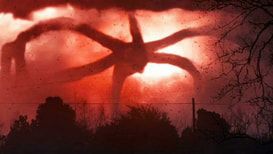
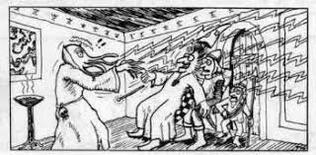
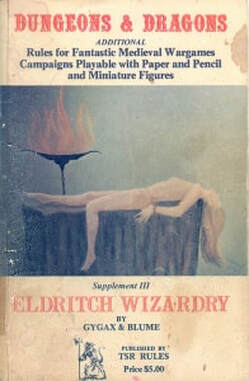
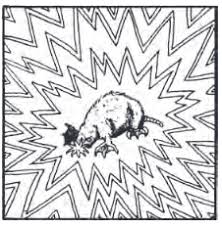
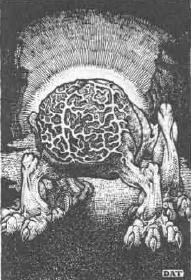
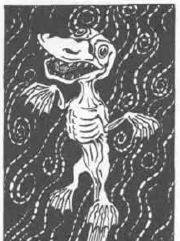

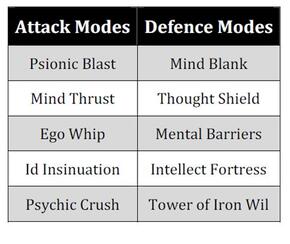

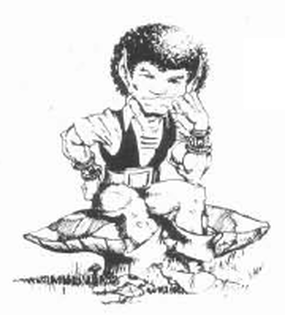

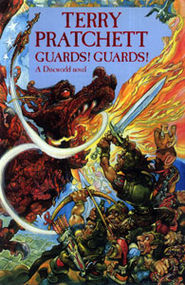
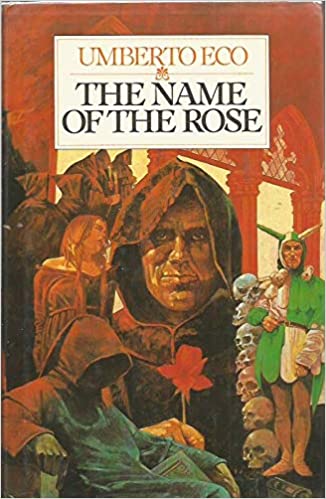
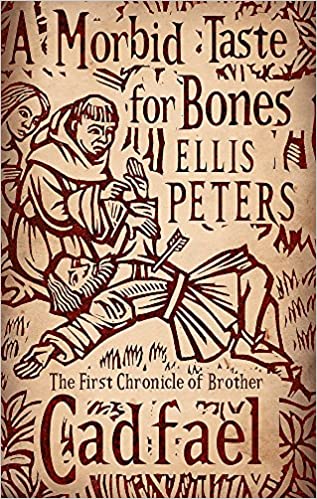
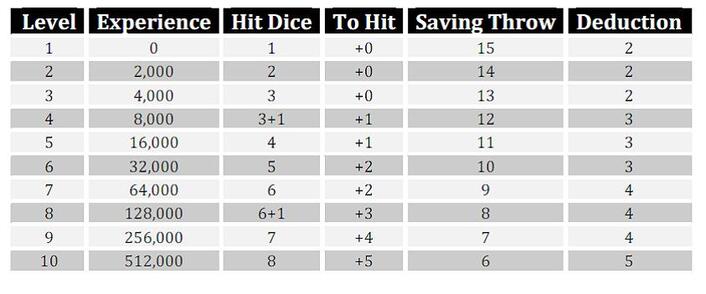
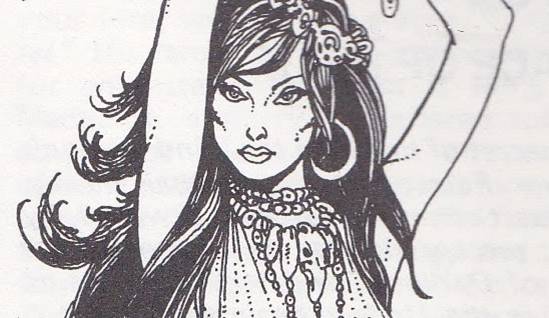
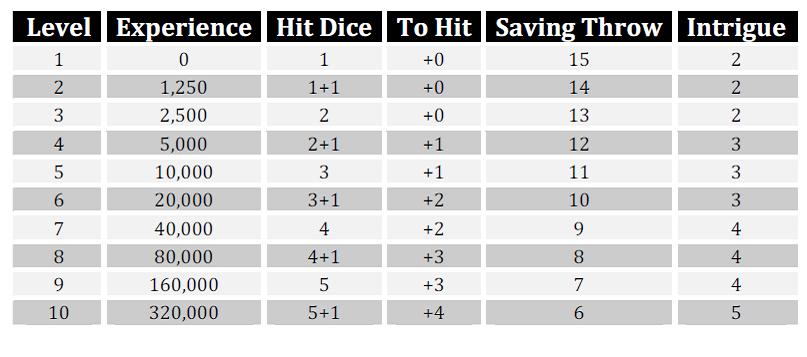

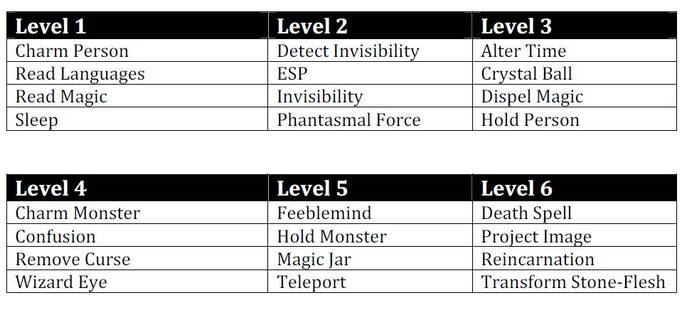
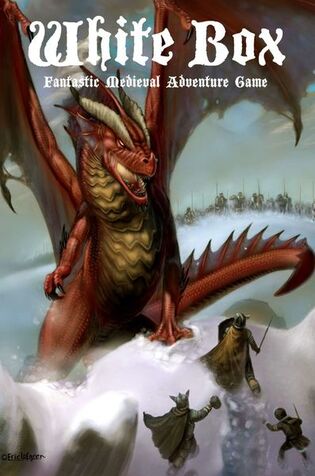
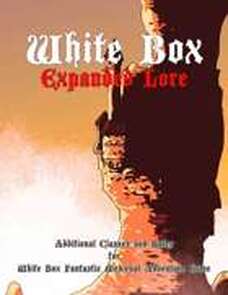
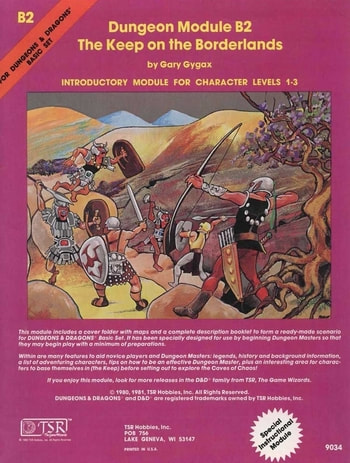
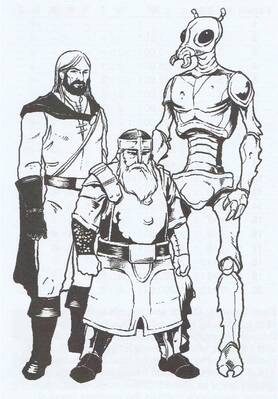
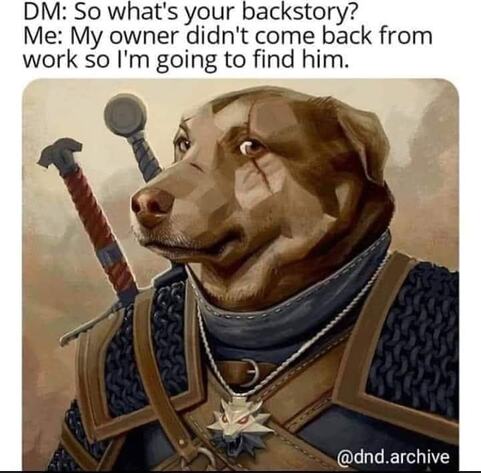
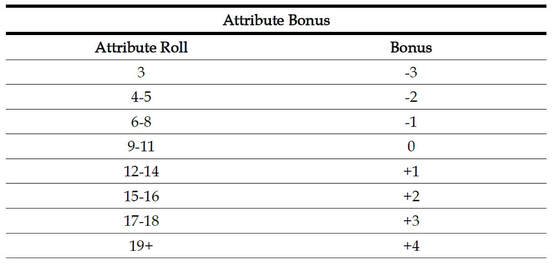
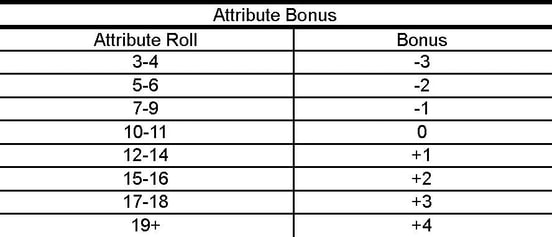
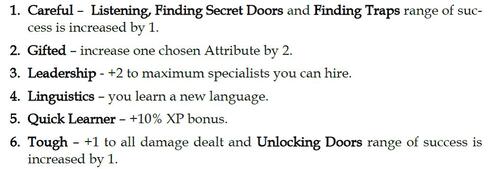
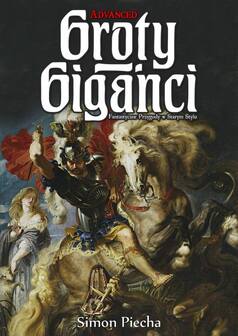
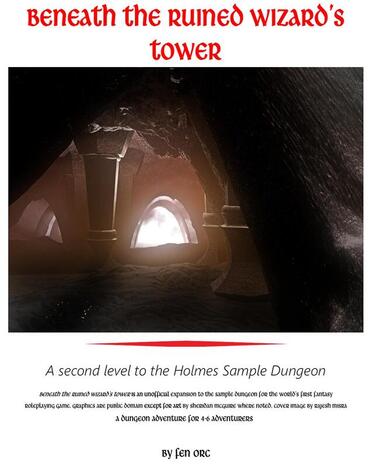
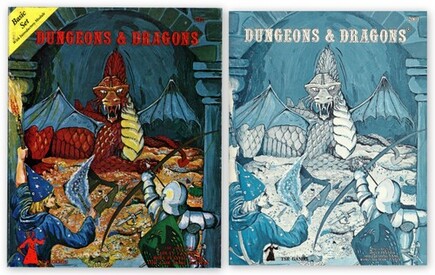
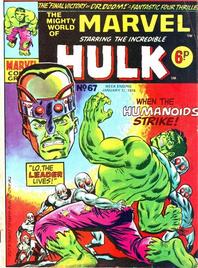
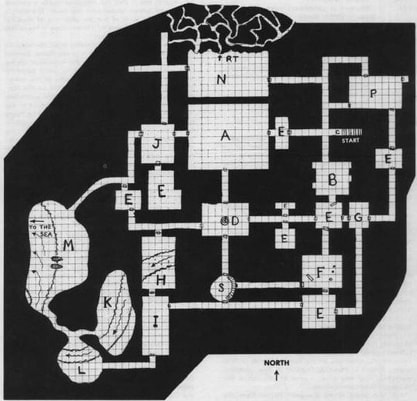

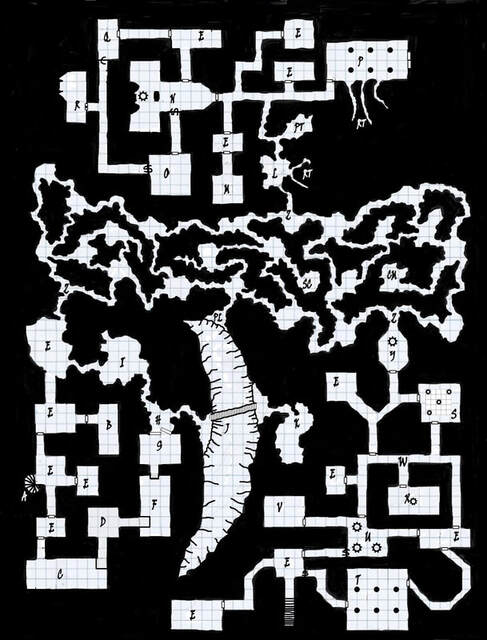
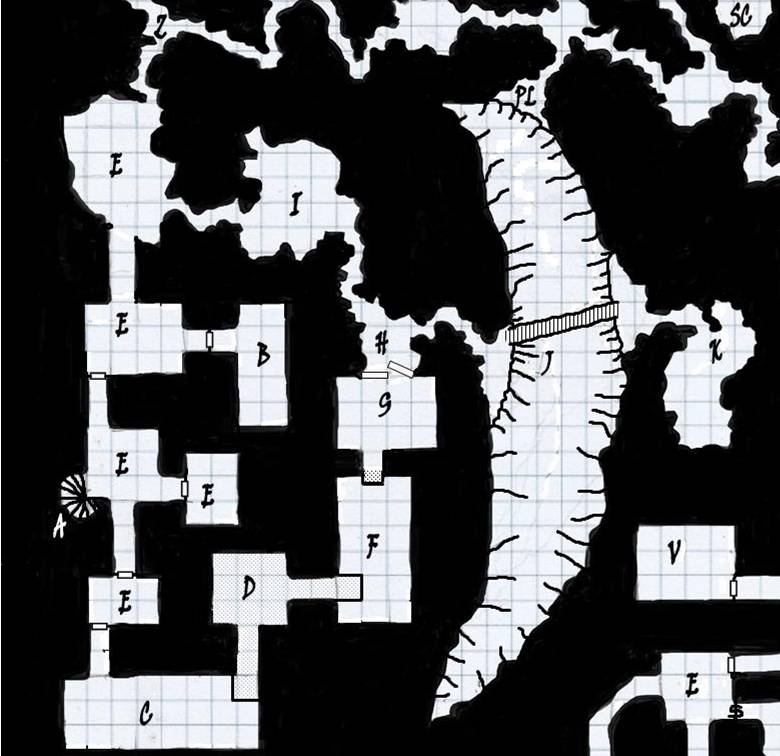
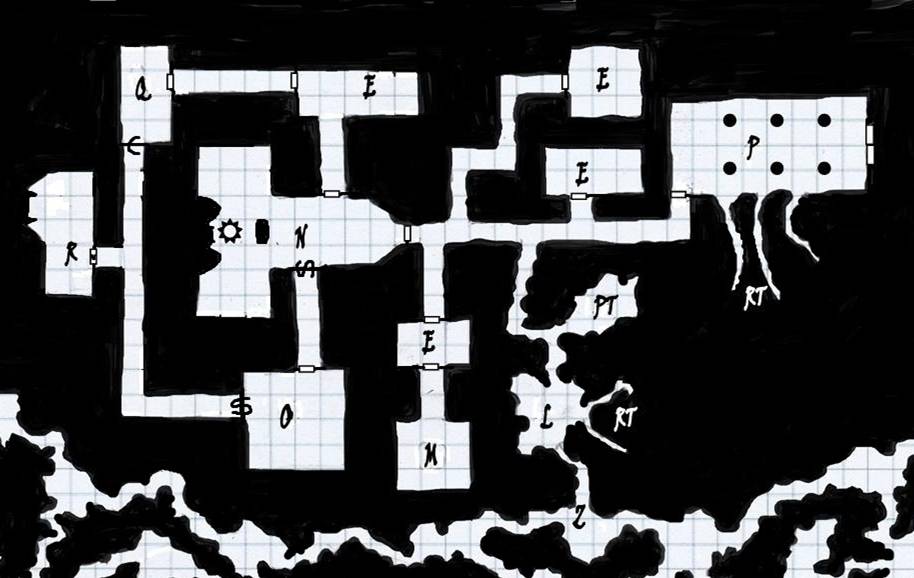
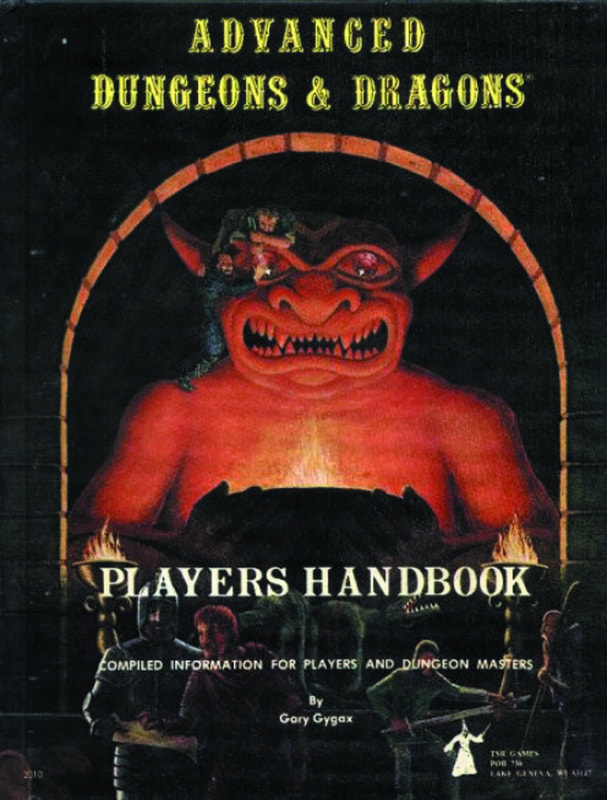
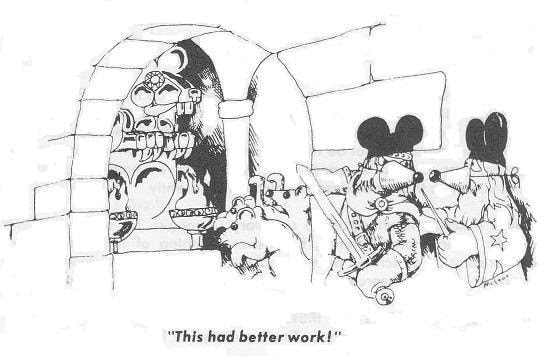
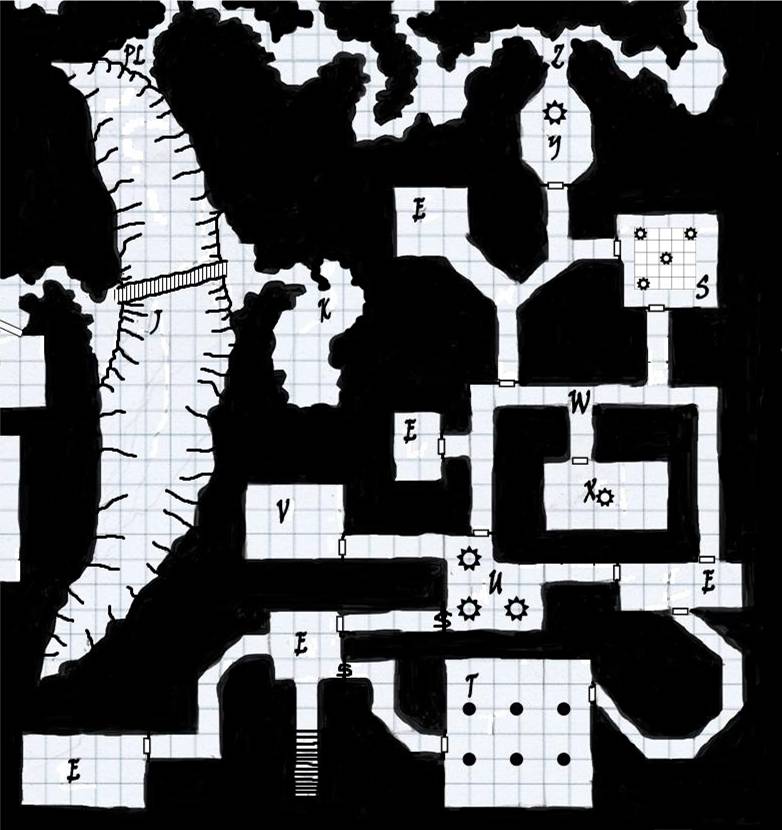
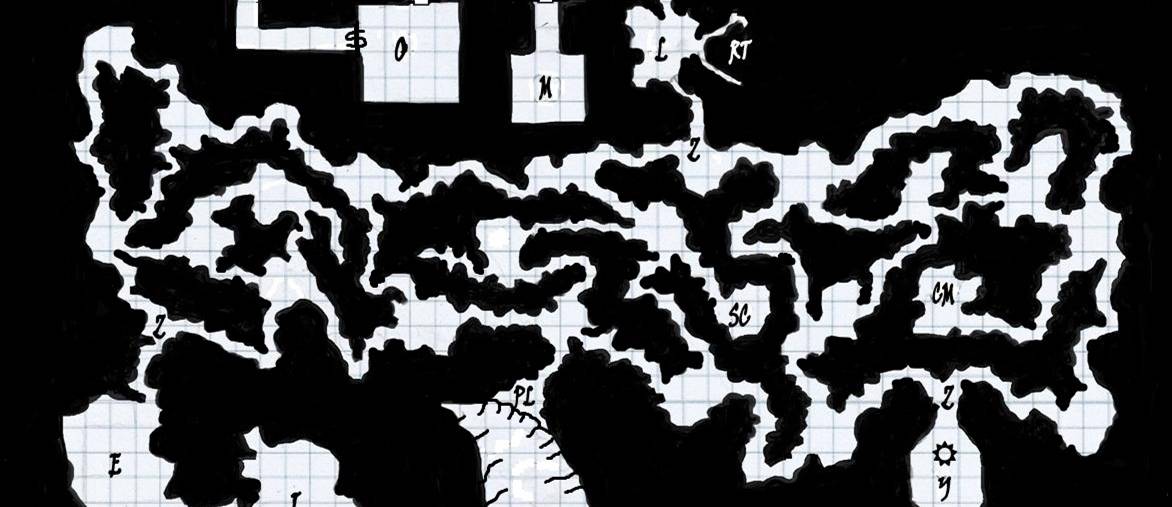
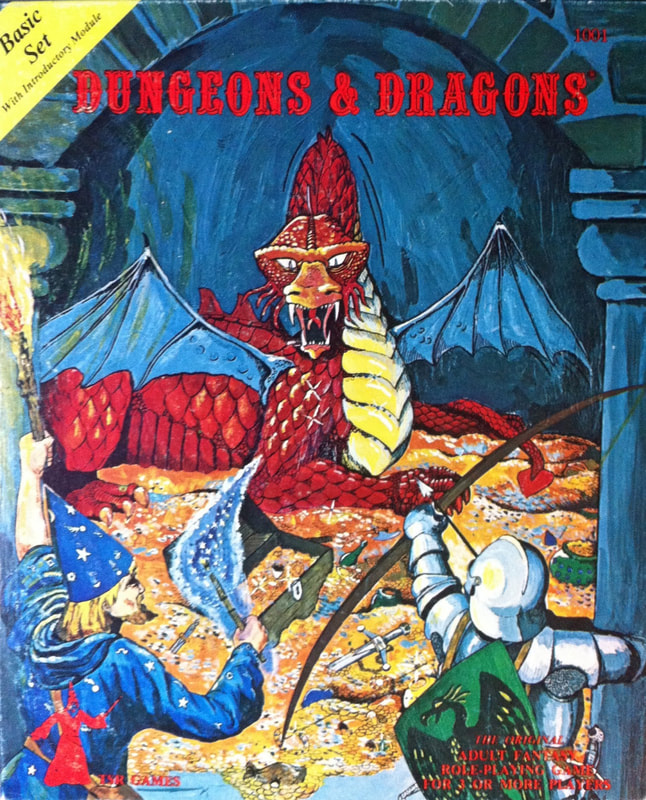
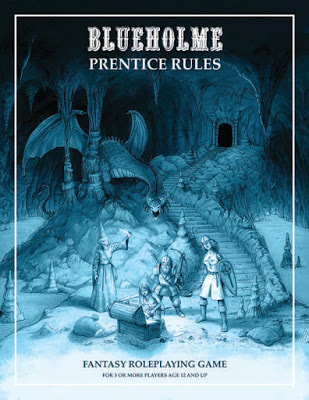
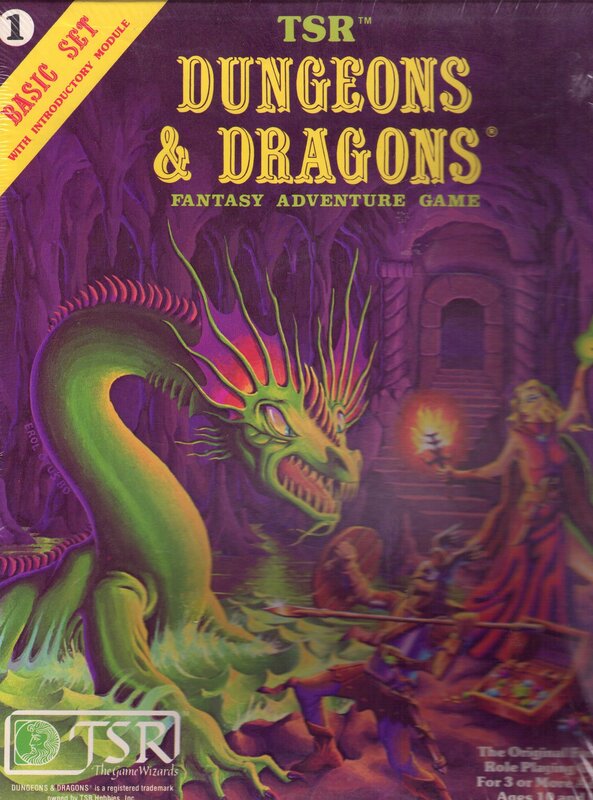
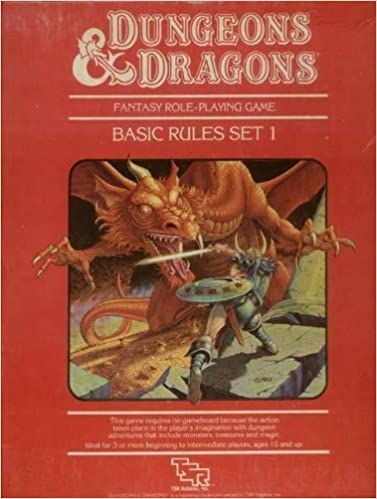
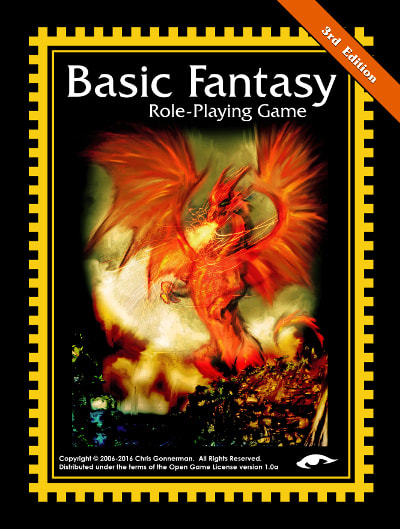
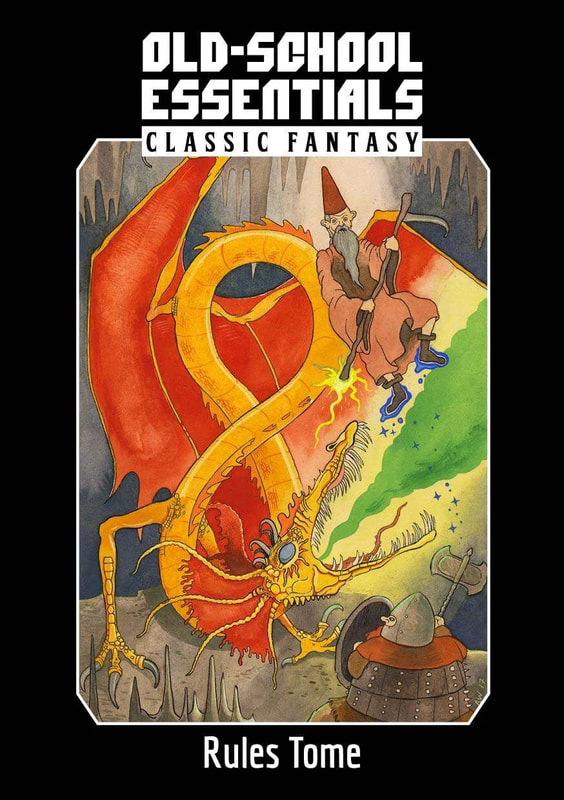
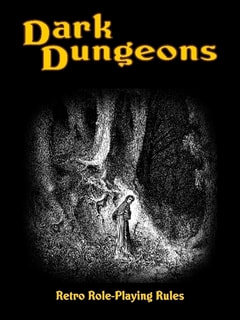

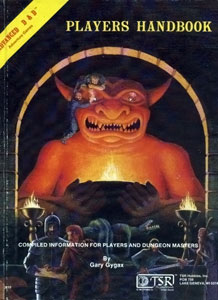
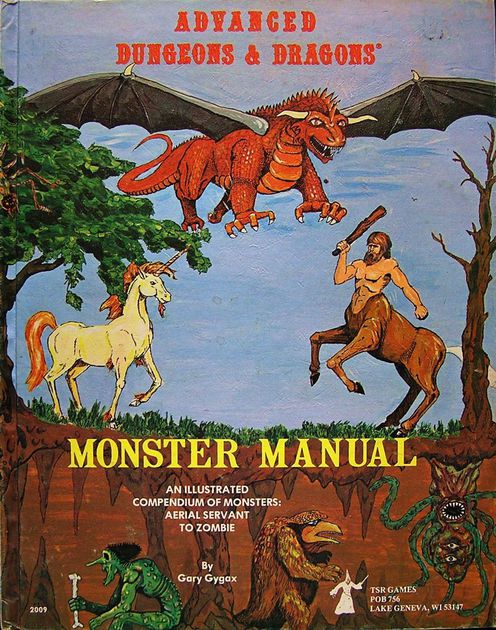
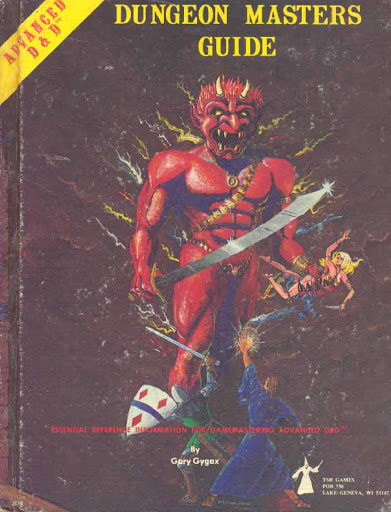
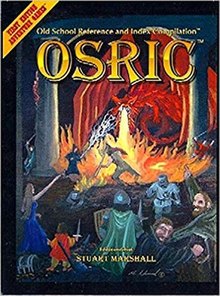
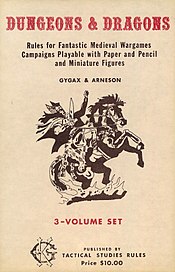
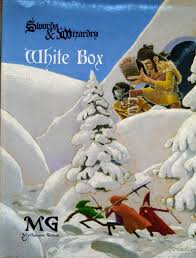
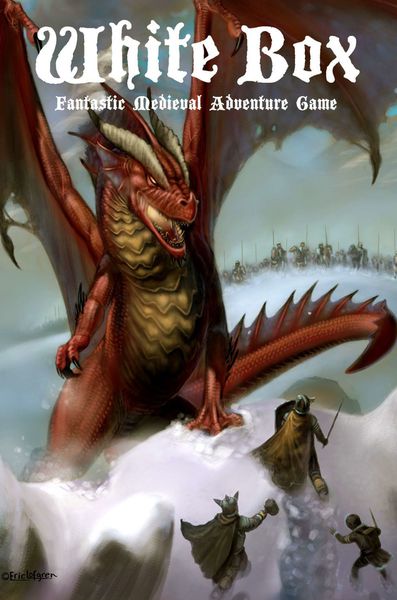
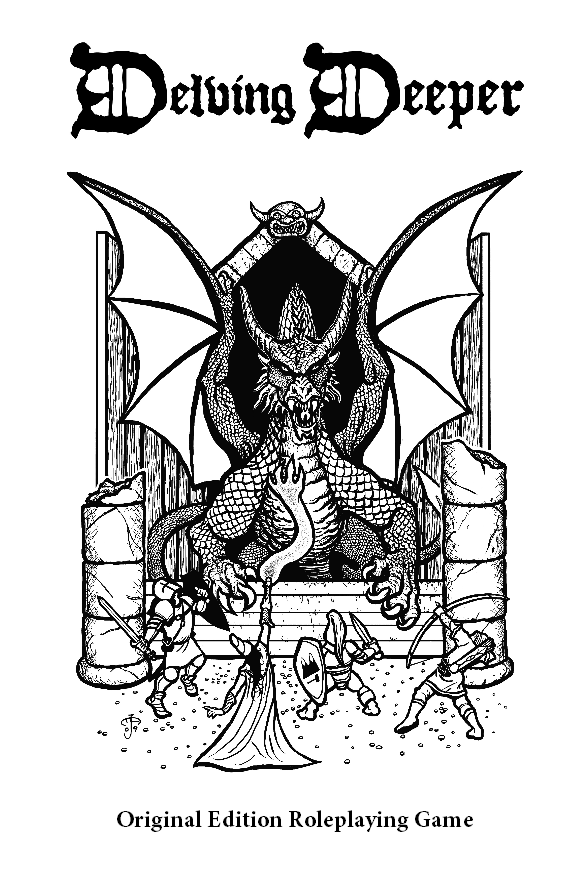
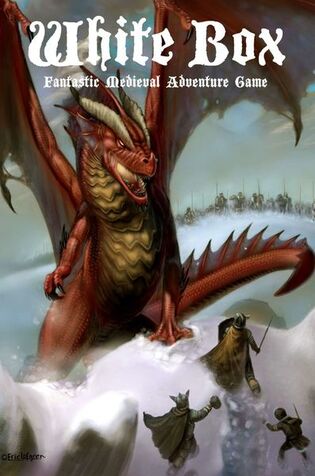
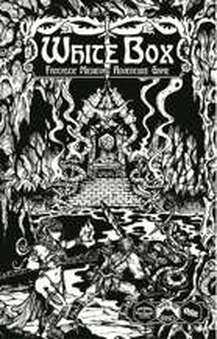
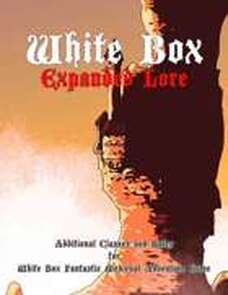
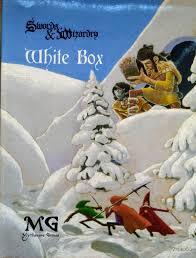
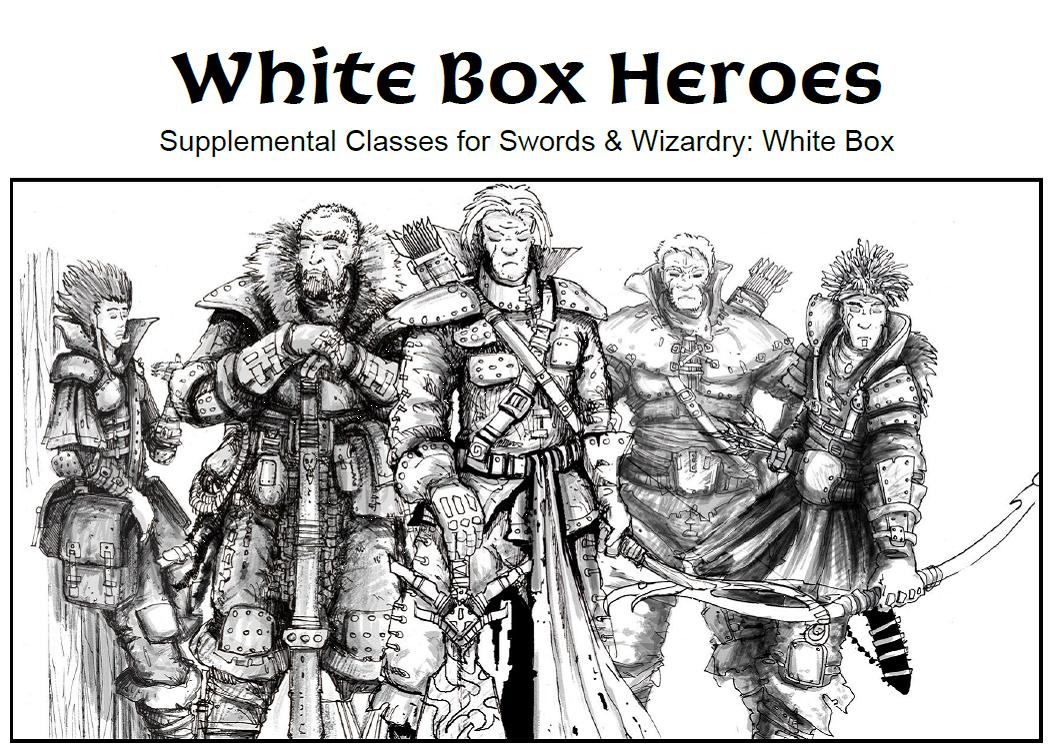

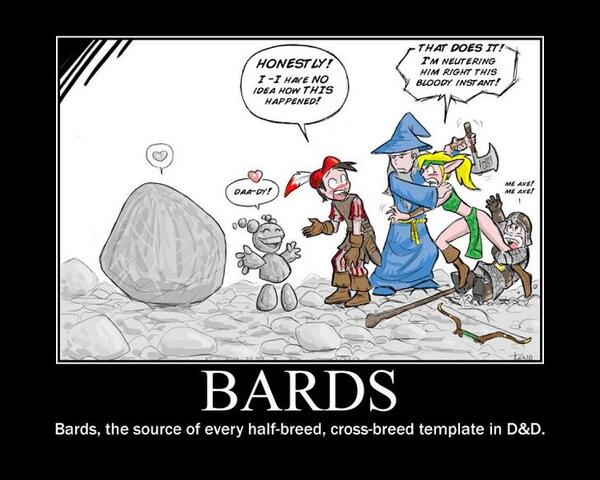
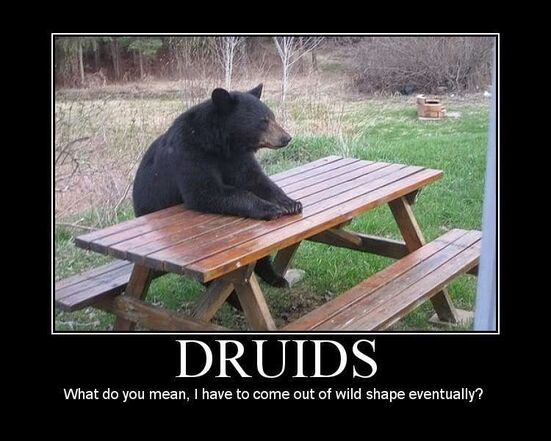
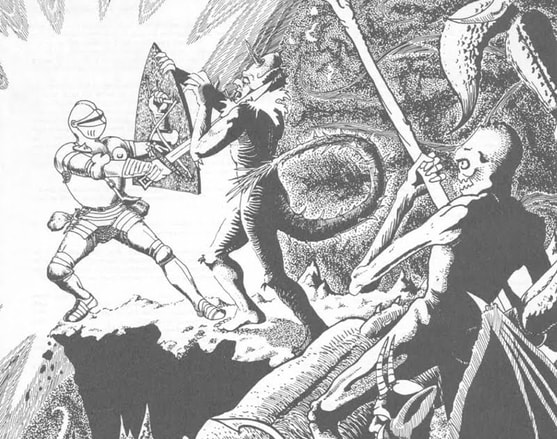

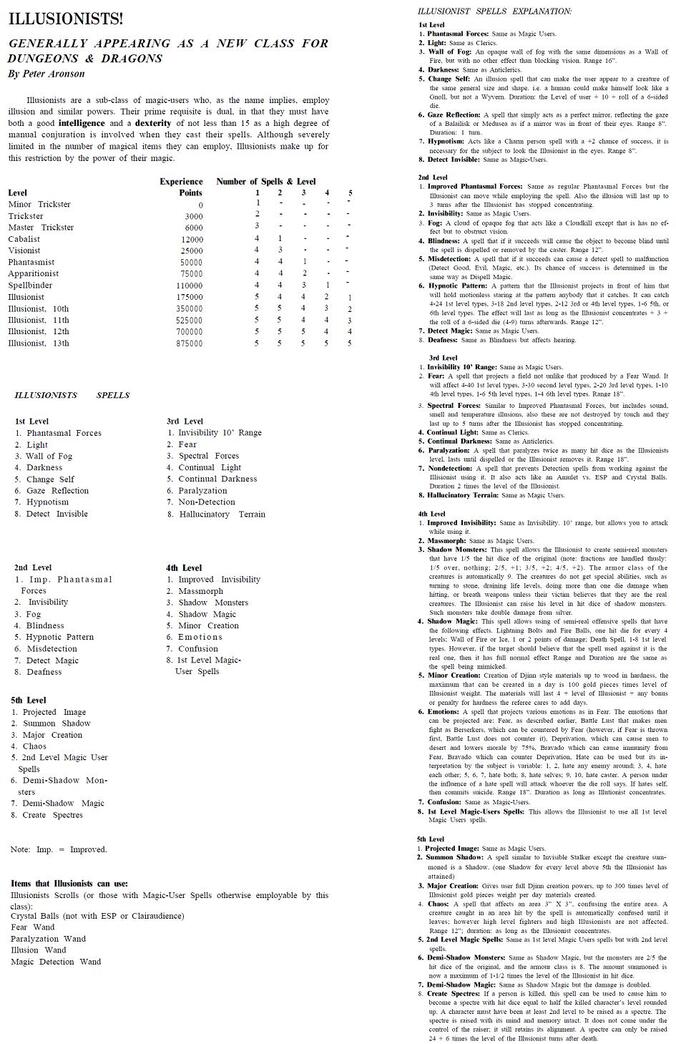


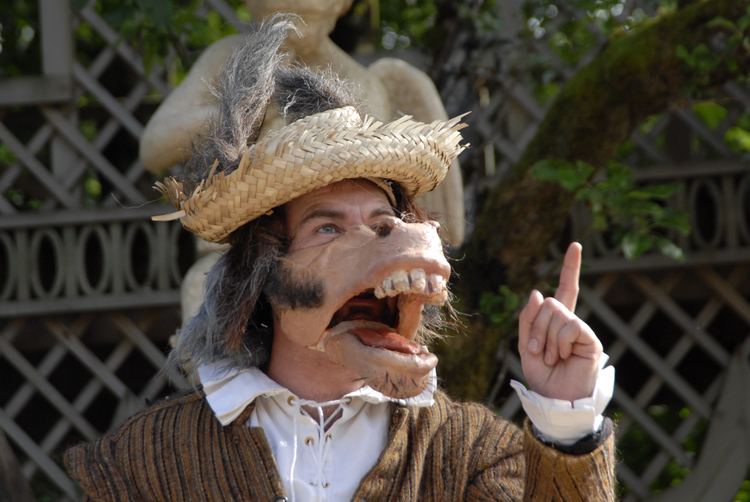
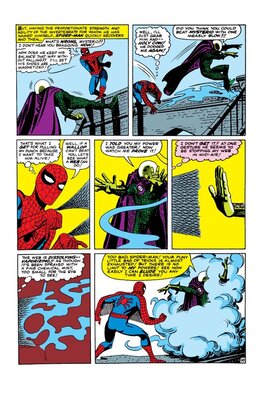
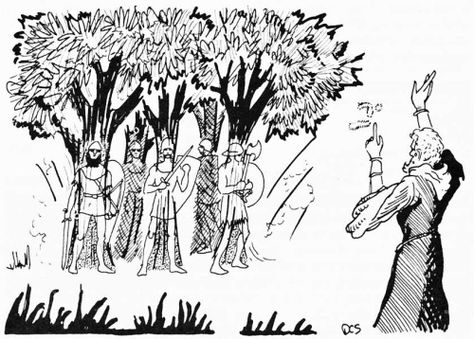
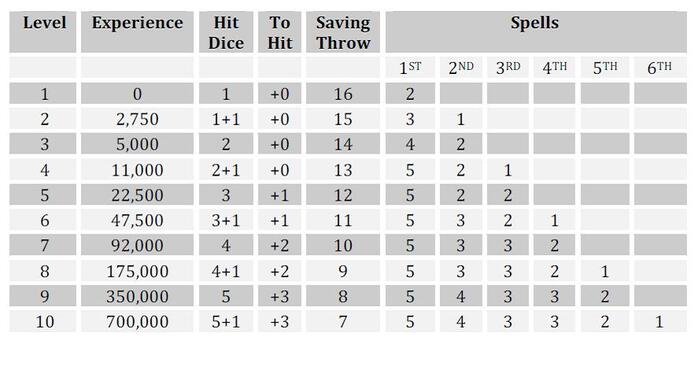
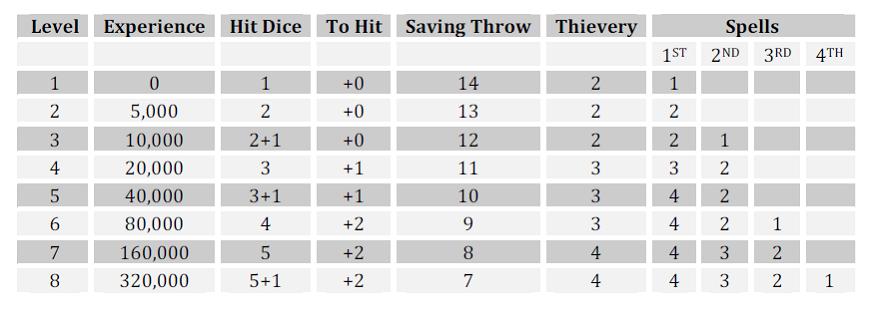

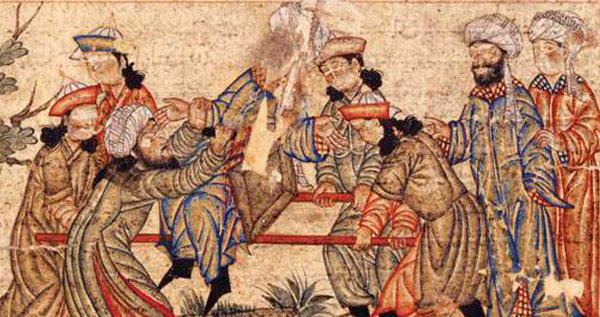
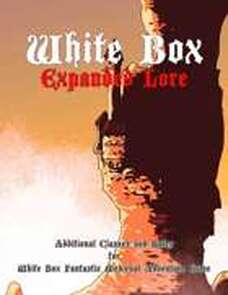
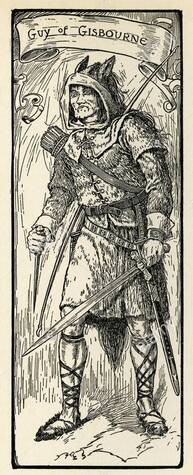
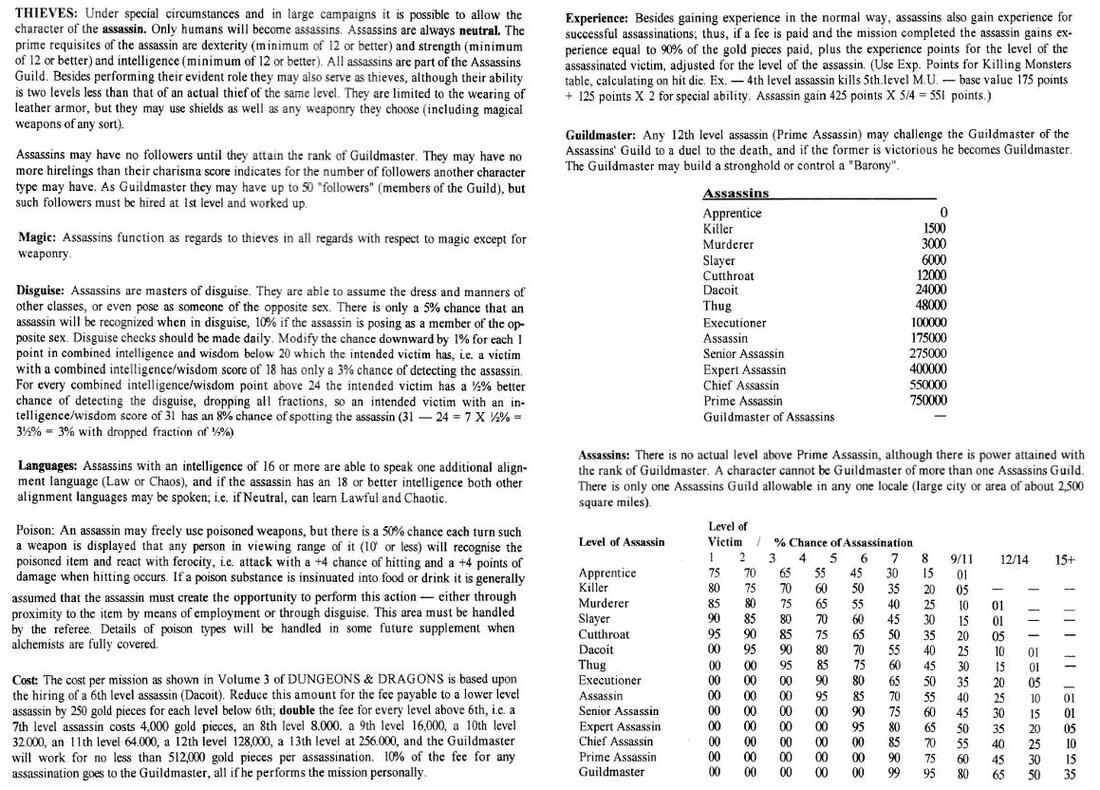
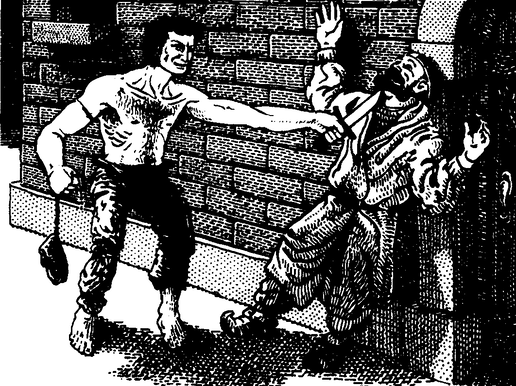


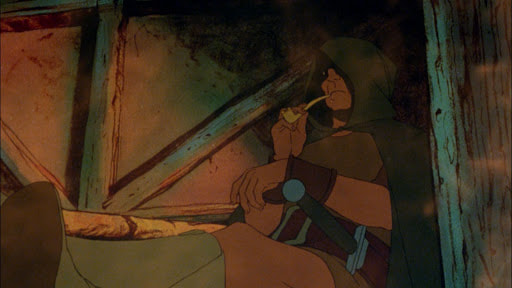
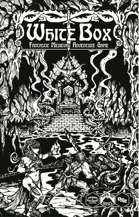
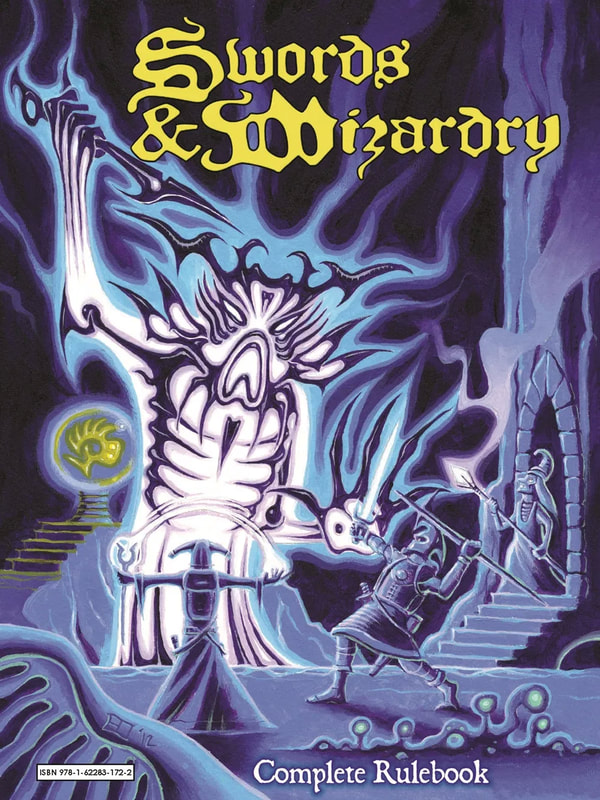
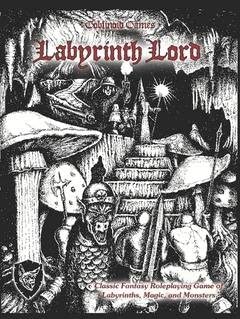
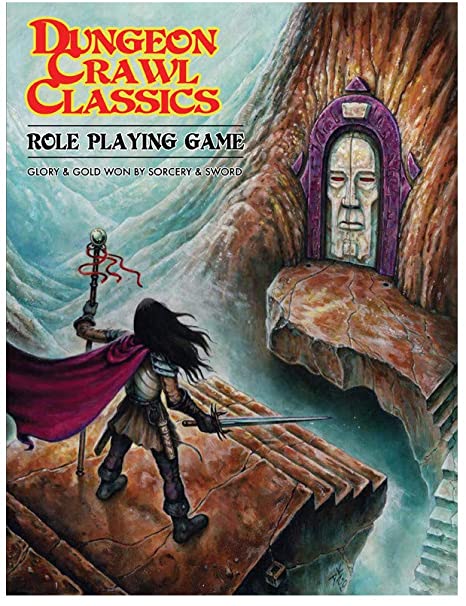
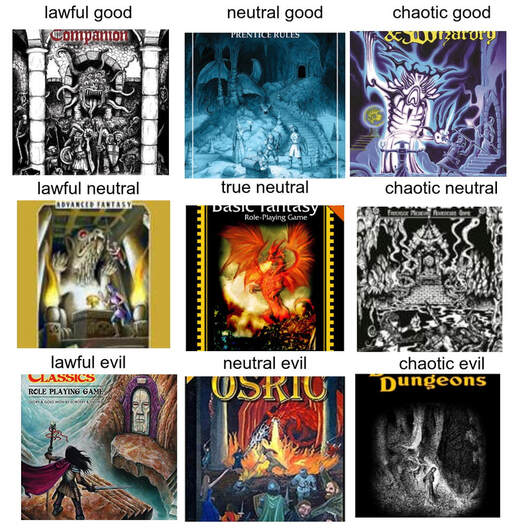
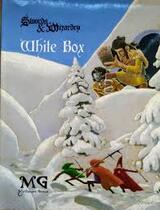
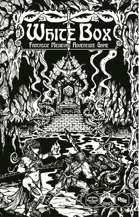
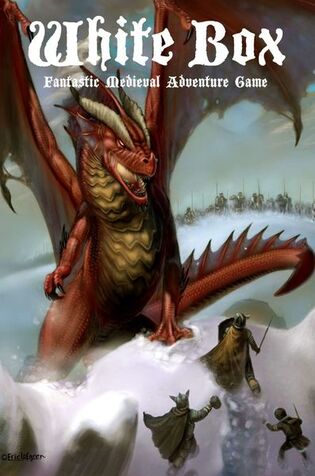
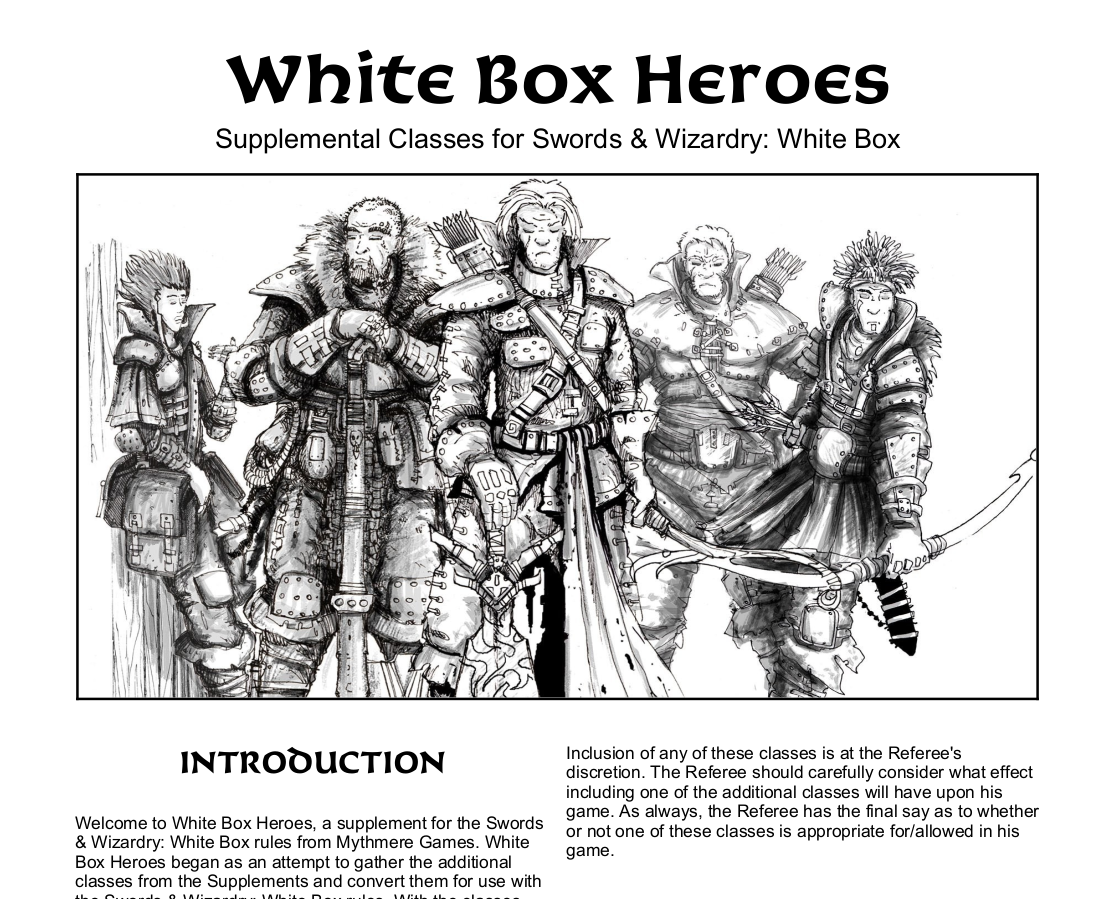
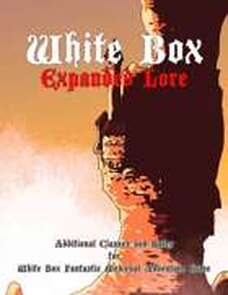
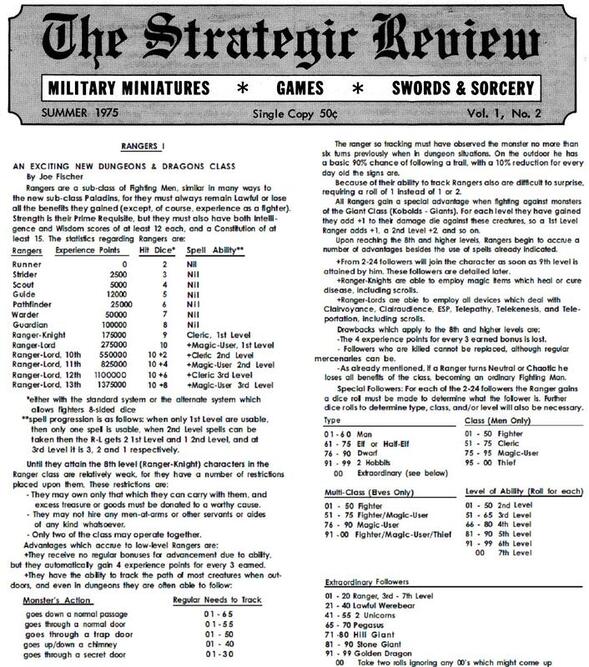

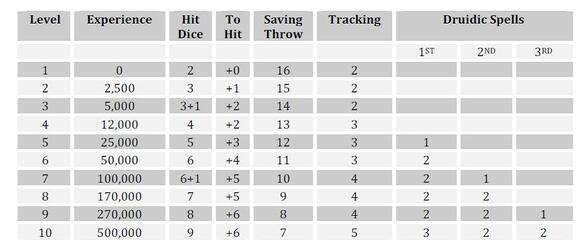
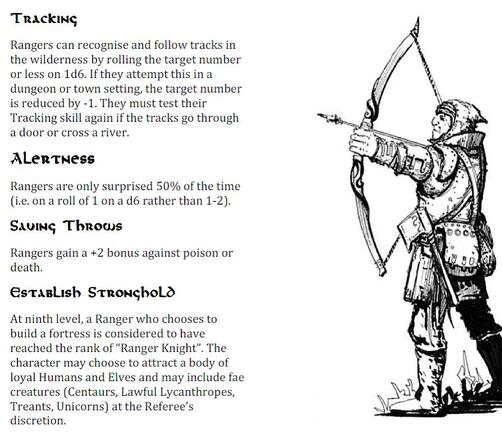
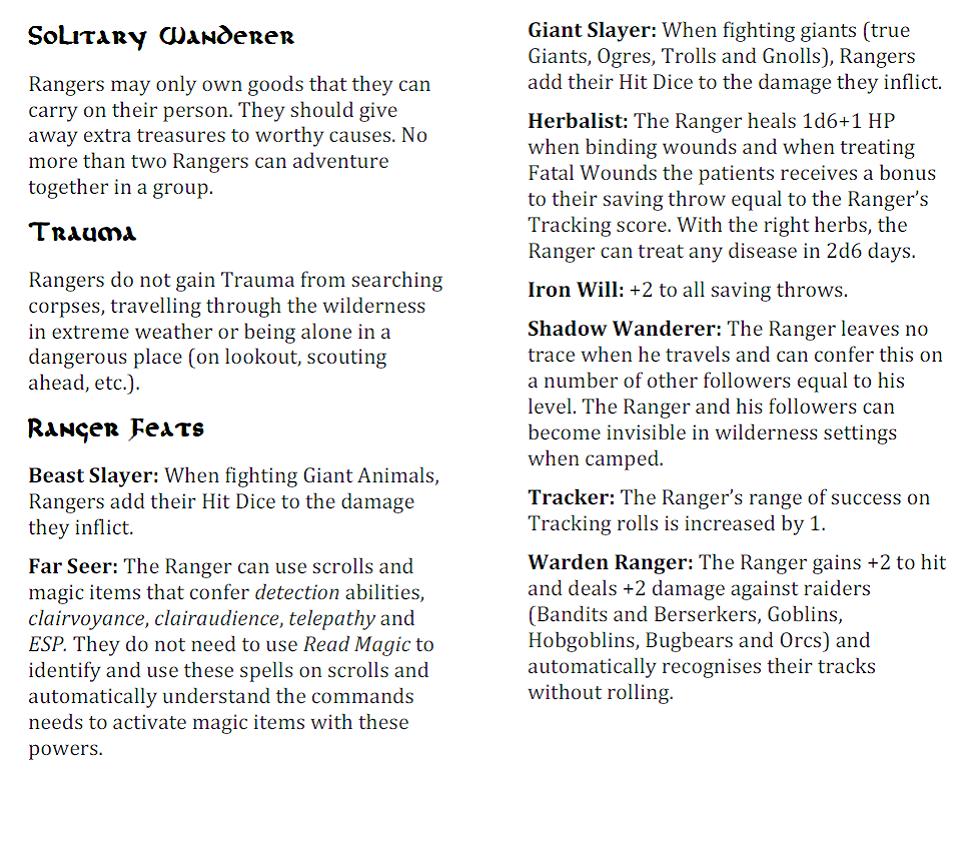
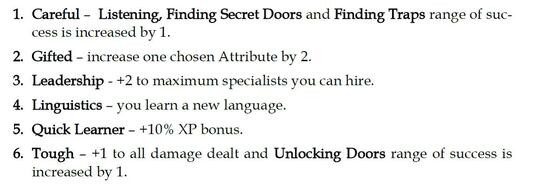
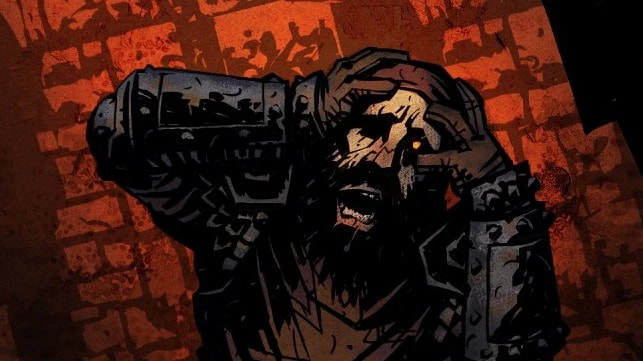
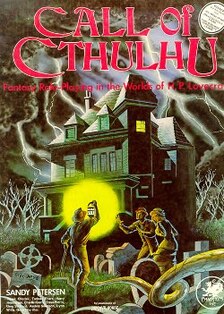


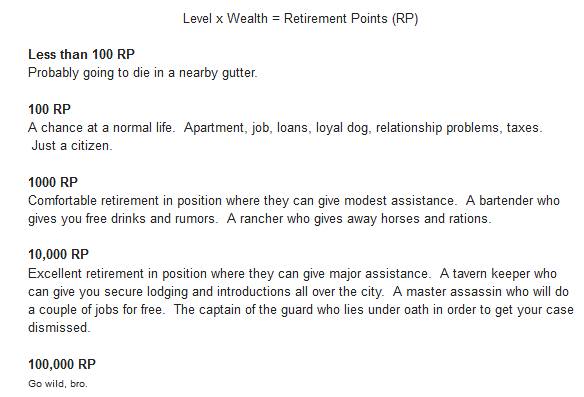
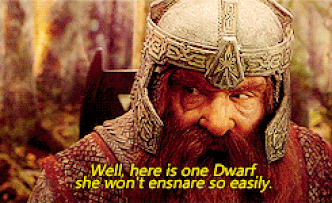

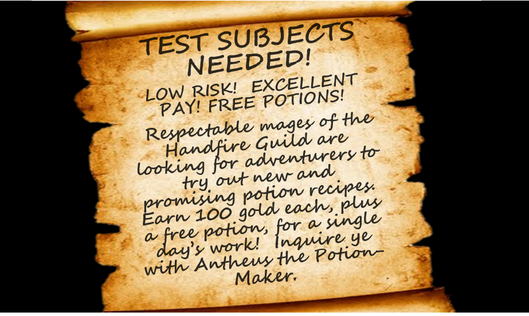
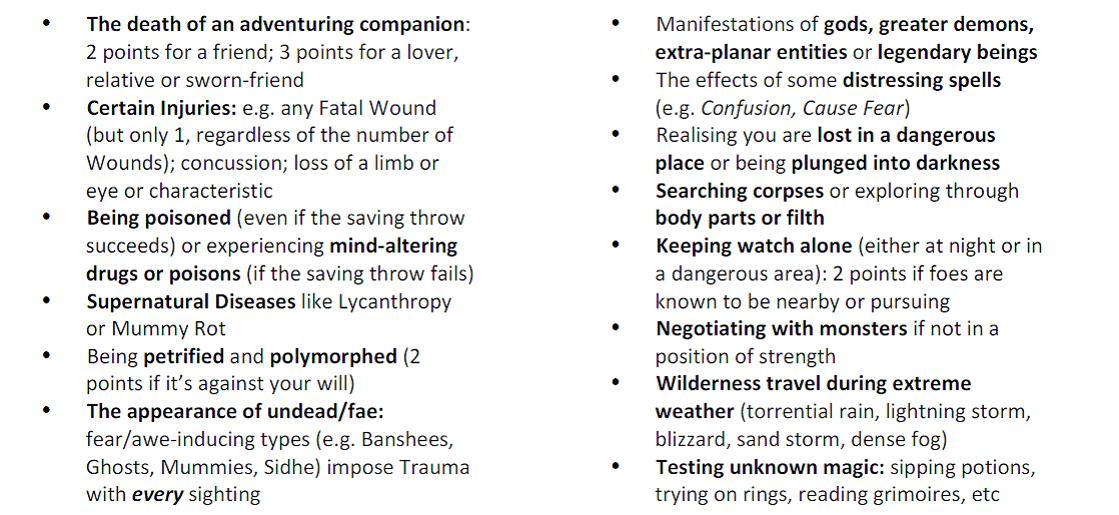

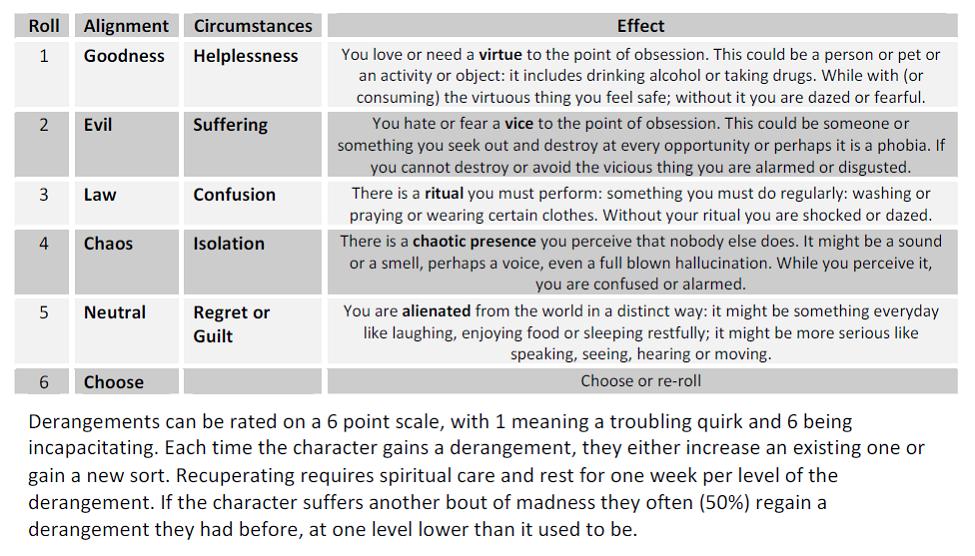
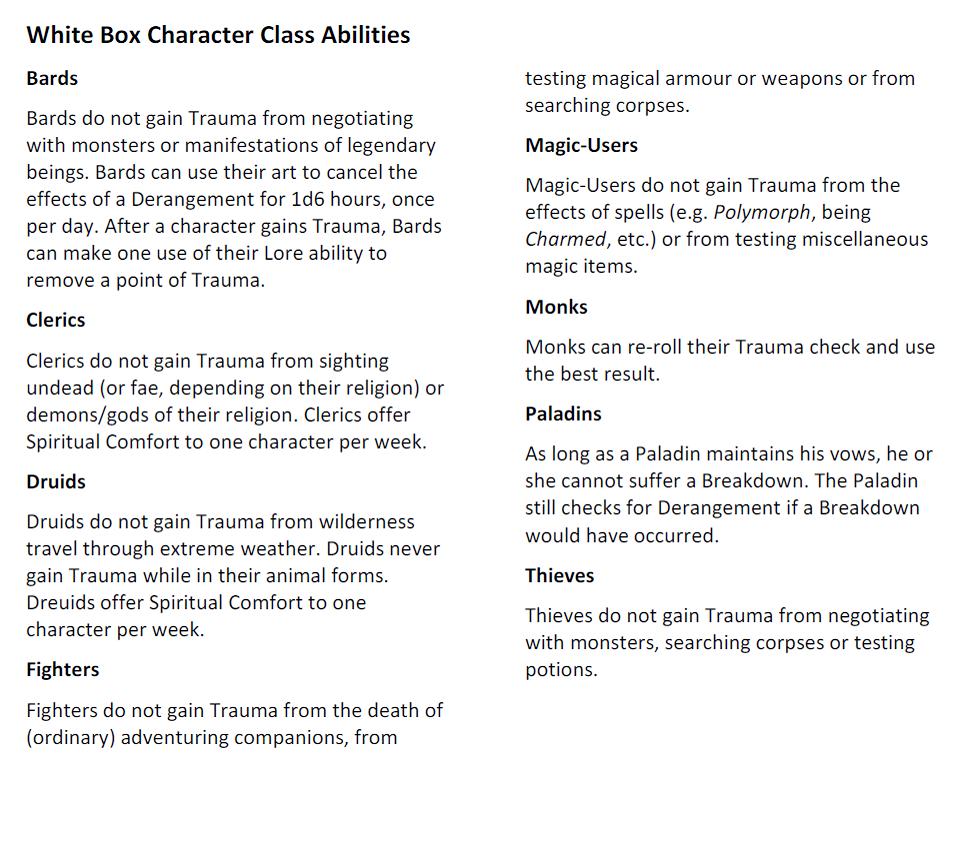
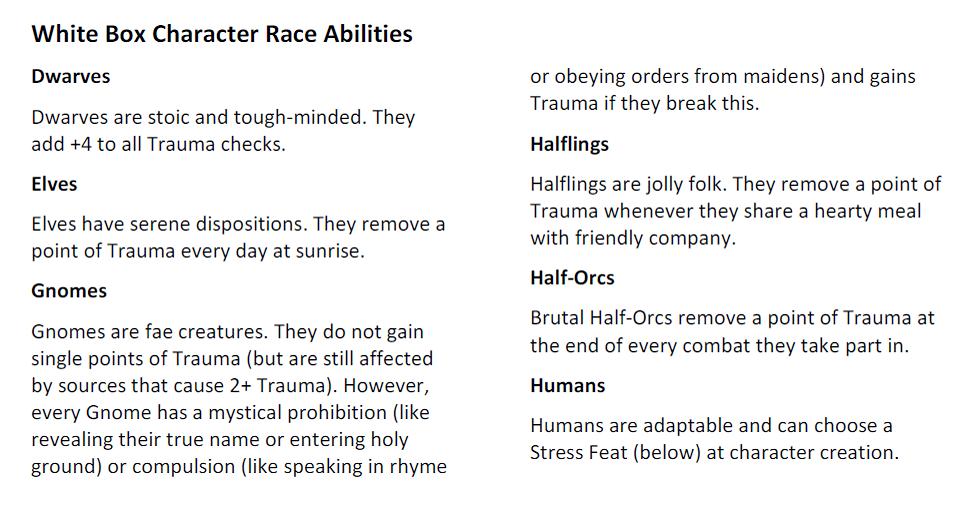
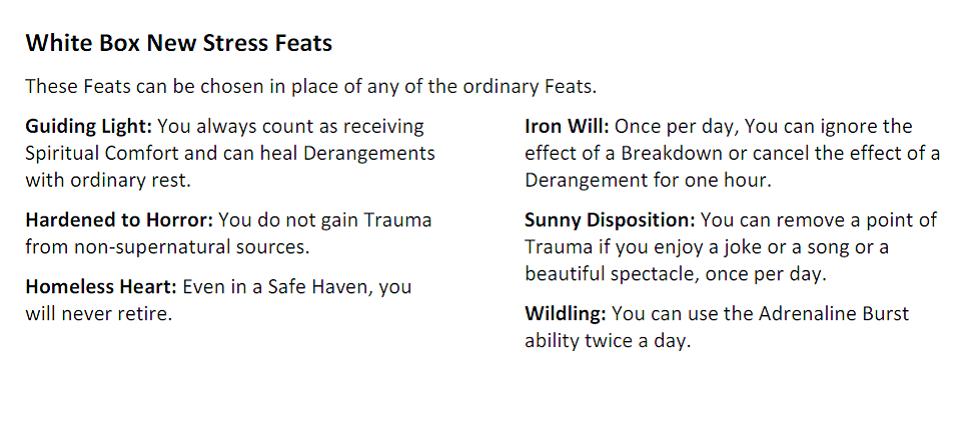

 RSS Feed
RSS Feed
